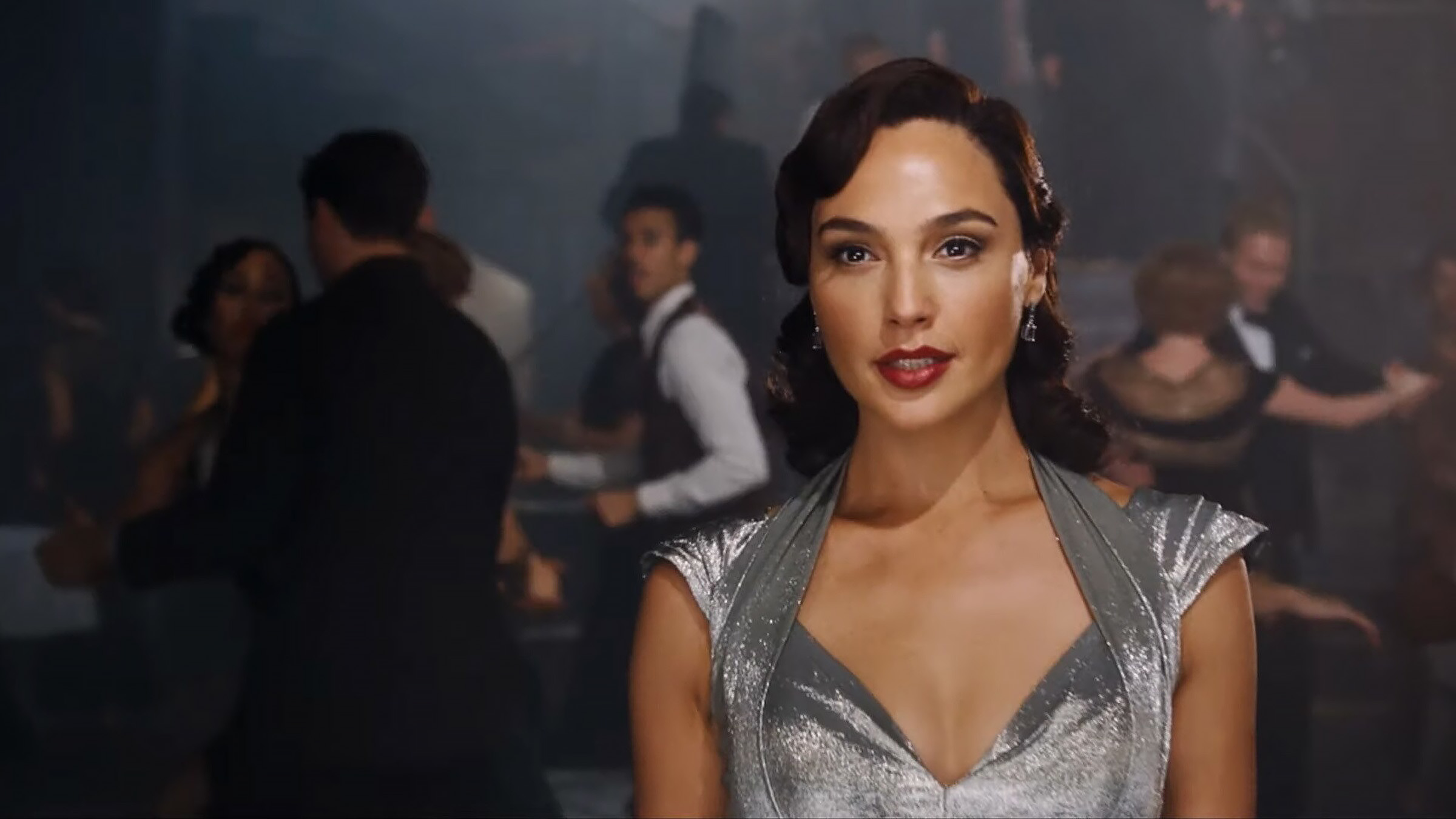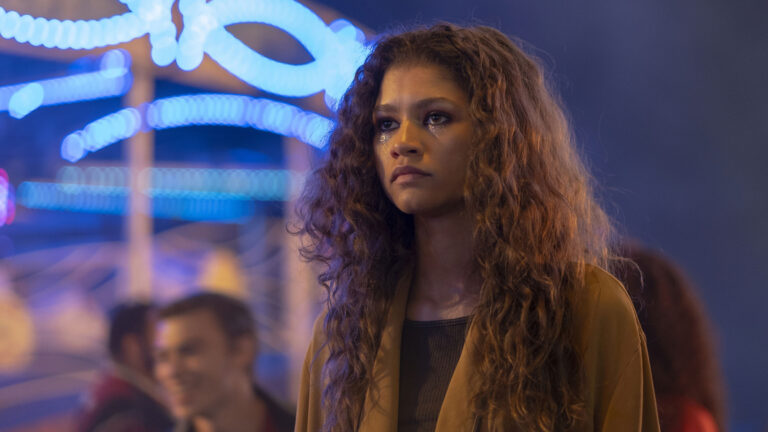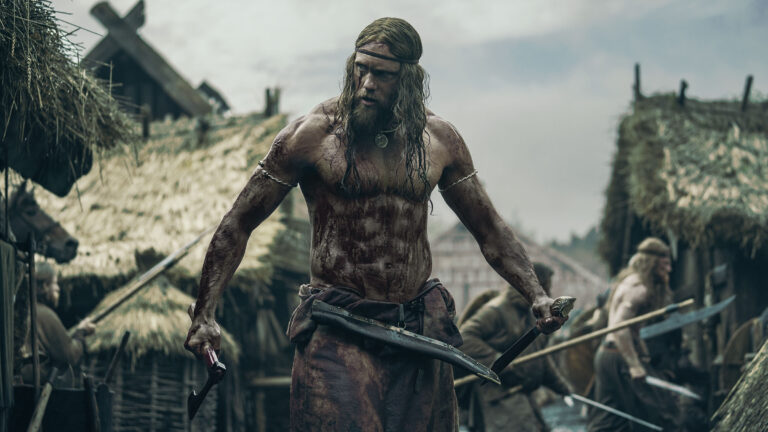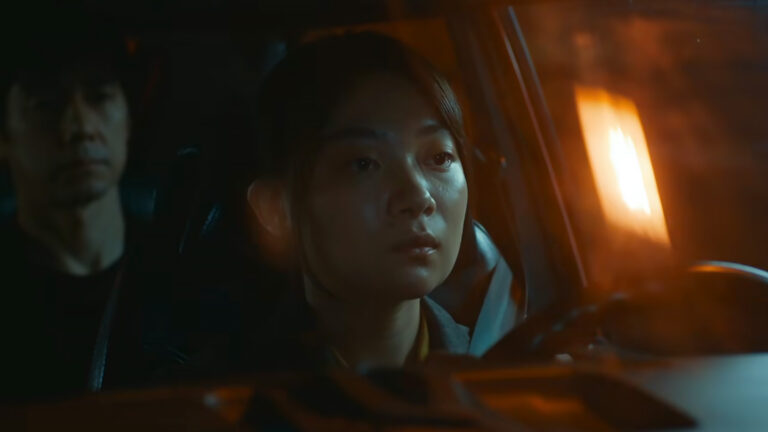In this interview we discuss two recent films edited by Irish film editor, Úna ni Dhongaíle, ACE, BFE. Belfast is a Best Picture Oscar nominee, and Úna was nominated for an ACE Eddie and a BAFTA for Best Editing for the film.
She also edited the beautiful and evocative Agatha Christie mystery, Death on the Nile. Úna’s other credits include editing the film Stan and Ollie, and the TV shows Wallander, The Crown and Les Misérables.
Our discussion of the craft will touch on how to create a sense of pace within a single shot, the value for a director to see cuts as he’s shooting, and the value of using your own life experiences to empathize with the story on screen. Let’s dive in!
Please note that this interview is an in-depth discussion of the creation of both Belfast and Death on the Nile, and includes significant spoilers and plot reveals.
Listen while you read…
HULLFISH: Úna, you edited Belfast and Death on the Nile almost back to back, and you’ve edited multiple movies in between them. So, it’s been a while since you’ve even thought about some of these movies.
NÍ DHONGHAÍLE: We finished the edit on Death on the Nile in June 2020. We were doing the mix of Death on the Nile when we began to prepare and shoot Belfast. Then, for Death on the Nile we had our 70mm print on October 23rd, 2020, and obviously it got pushed back due to the pandemic.
I’m currently finishing The Mothership with Halle Berry as our exec producer and our lead with Omari Hardwick. I also cut a film called Together with Stephen Daldry in April of last year. So, I’ve done three films since finishing Death on the Nile.
HULLFISH: Editors always say, “Once you get done with one film, you’ve got to clear your brain to make room for the next film.”
NÍ DHONGHAÍLE: I know [laughs]. So, I’ll try and remember everything.
Belfast
HULLFISH: We’re going back in time. Let’s talk about Belfast first, which is really a kind of a memoir for Kenneth [Branagh]. That’s a tremendous responsibility for you to steward that story, plus he’s sitting next to you.
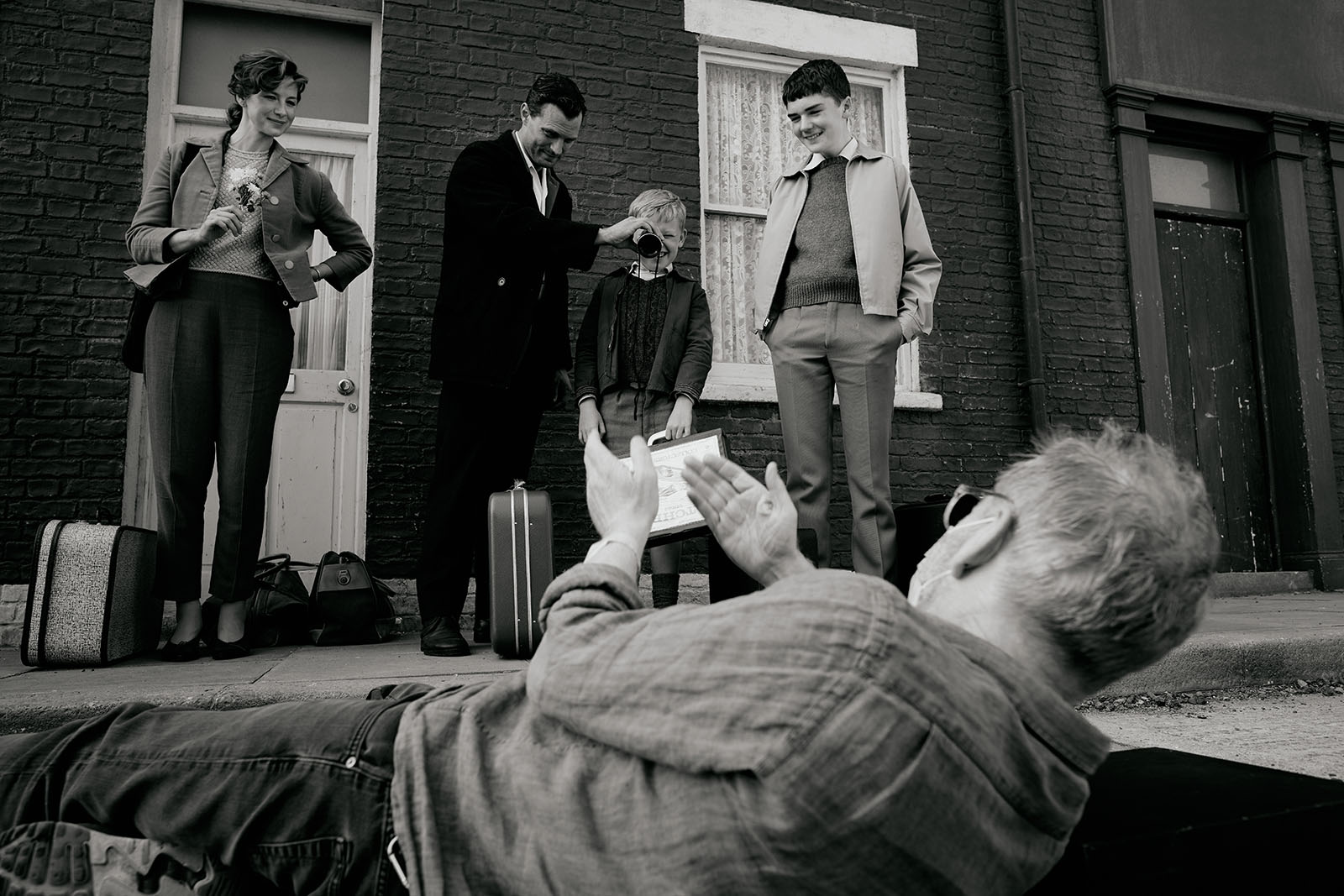
NÍ DHONGHAÍLE: He wasn’t actually sitting next to me because of COVID. All of the editing was remote, so we only had the pleasure of working together for two Fridays the first two weeks of shoot. Say, he wrapped at seven on the first Friday, he came into Twickenham where I was, and we were finishing off all deliverables for Death on the Nile.
I had started to assemble Belfast, so by Friday night of the first week, I had a really good cut for him to look at so that he could actually review how he was shooting.
He wrote it between March and June, so it was hot off the press. Then, we started shooting. We did a little two days previs cut of the opening of Belfast. Ken, Haris [Zambarloukos], and Jim Clay actually went to Belfast and filmed about three and a half hours of material using their cameras and their phones that they gave me in early August.
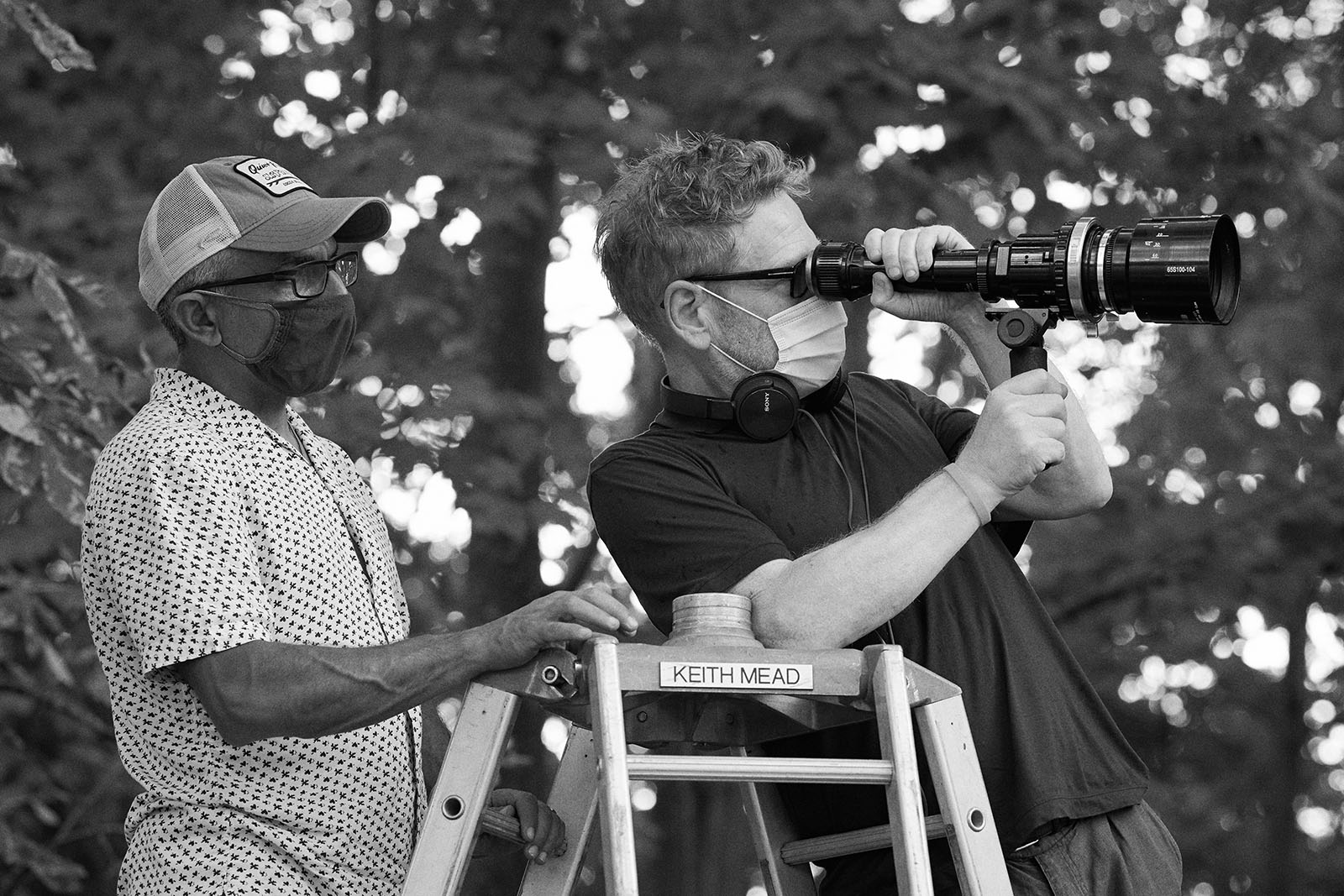
While we were doing the mix of Death on the Nile, I cut together the prologue in that week with Ken remotely. Because there was an interview and the Van Morrison music, we actually worked it out as animation editors would do with their work on previs.
So, by the time we came to actually shoot and Ken came to me that first week, we were really hot off the press and figuring out, “How is this going to unfold? Will those depth of field wide shots of Judi Dench in the background and the child in the foreground actually resonate? Was it all coming together?”
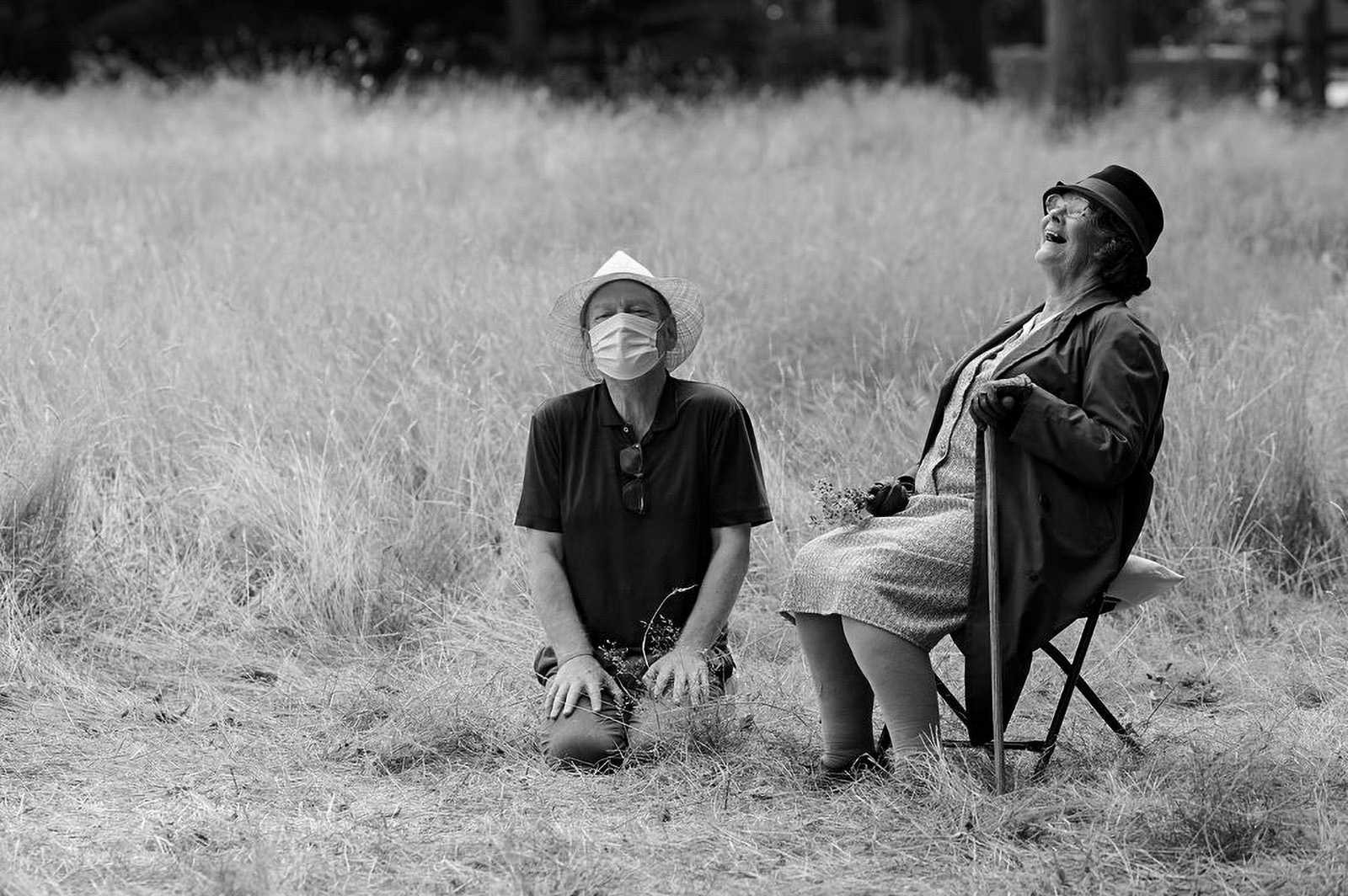
It was Jude Hill’s first acting job, who was exceptional. Ken was nurturing him and trying to encourage him not to take any sneaky glances to camera . So, we were dealing with all of that in that first week while finding the tone of the film and figuring out what was working.
It looked very apparent in the first week that we needed more coverage of the child because so much was in wide shots that you just really wanted to see the child in order to see it through his eyes. That Friday, Ken and I had been speaking to each other during that day—as any editor would do while we’re shooting—in order to feed back to the director of what’s really working. So, the following week, Ken began to shoot more of Jude Hill.
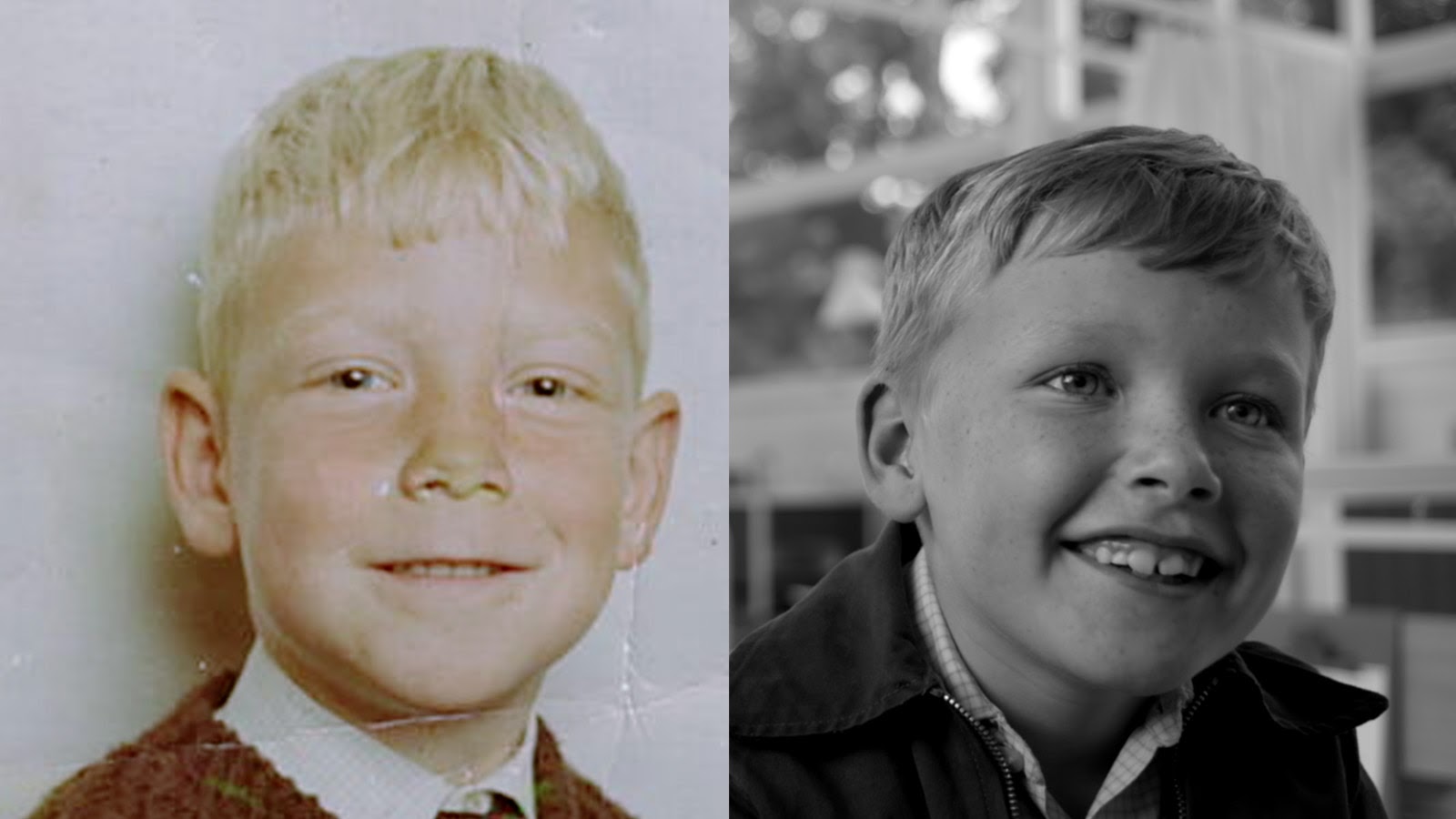
I think when you are doing a film that is a memoir and it’s a passion project for Kenneth Branagh, he chose those of us who had worked with him before, who had his back. So, it became our passion project. I had also directed a documentary 50 years to the day of my dad’s story in Northern Ireland, so I was very mindful of the fact that as his editor, I owed it to him to speak up if I saw something that could really work. He was very gracious. Because he had written it, it was his family story and he knew the story so intimately. It was marinating for 50 years and had just been written.
But he was really listening to us if any of us had any ideas because we were his team, his Belfast family behind the scenes. So, we were making sure that we were just hitting the ground running.
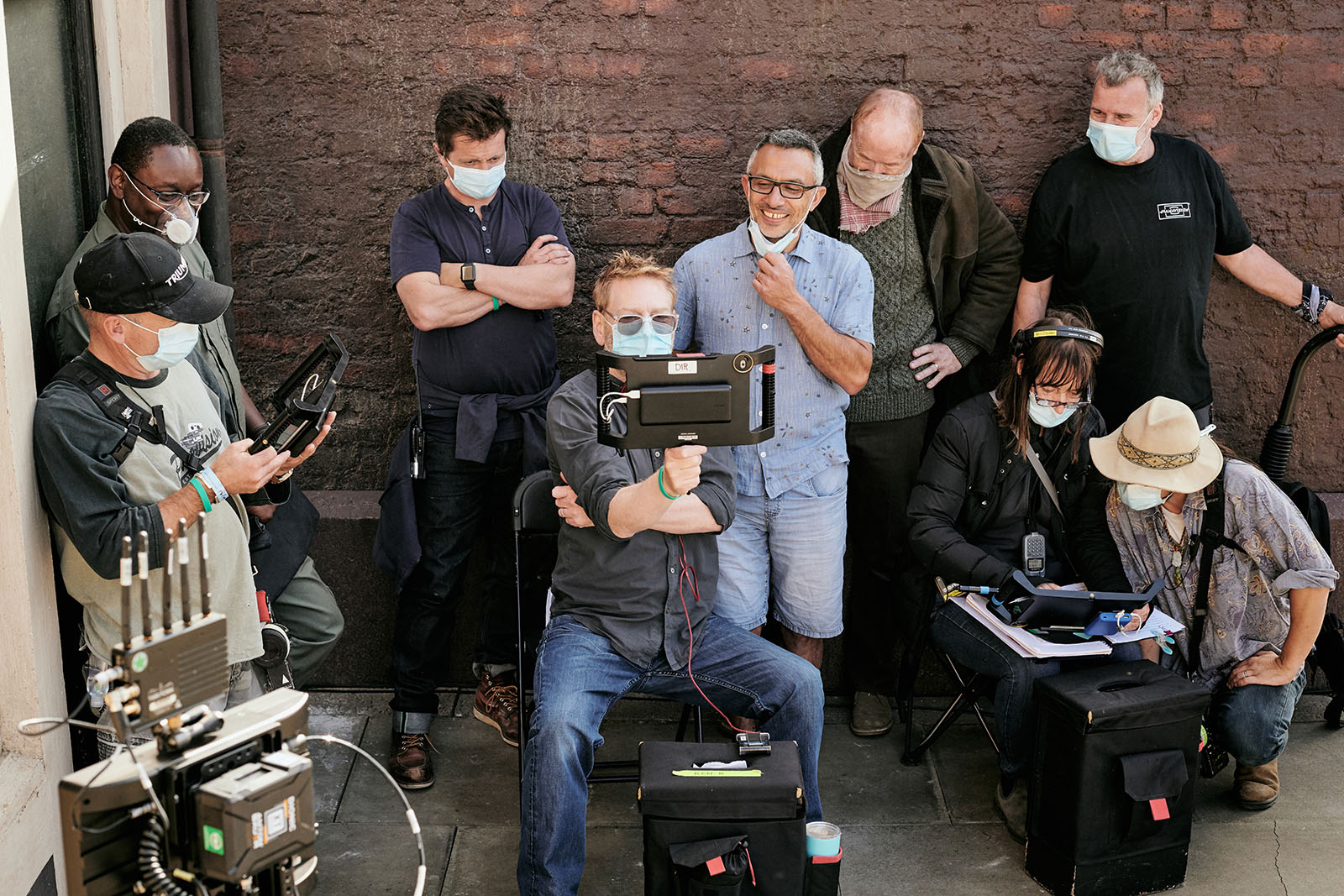
Before principal photography, I asked Ken what his sound memories were, because I knew we couldn’t shoot in Belfast due to COVID. We were one of the first British productions to go back into shooting and there were such protocols that we had to build the set in Surrey.
So, when I’m editing, I always think in terms of sound and music as characters, predominantly sound design. I did ask Ken in that August what his memories from childhood were. He said, “Ice cream van, rag-and-bone-man, constant trains, and the ship horns.”
Before we even started shooting, I began to assemble those sounds and got my assistant editor, Carly Brown, to begin to download sounds and have a repertoire. Once I was editing after the first day of principal photography, I was already building that sound.
If I was cutting scenes, I could hand it over to the second assistant, Lydia Mannering, and I could ask her to build up the sound. So that first Friday, we had a really beautiful first cut, and we kept that pace all the way through.
The second Friday, Ken came again from eight until probably midnight. We were watching the film shaping up and seeing what was working very well with Ciarán Hinds, Judi Dench, and the beautiful rapport between Caitríona Balfe.
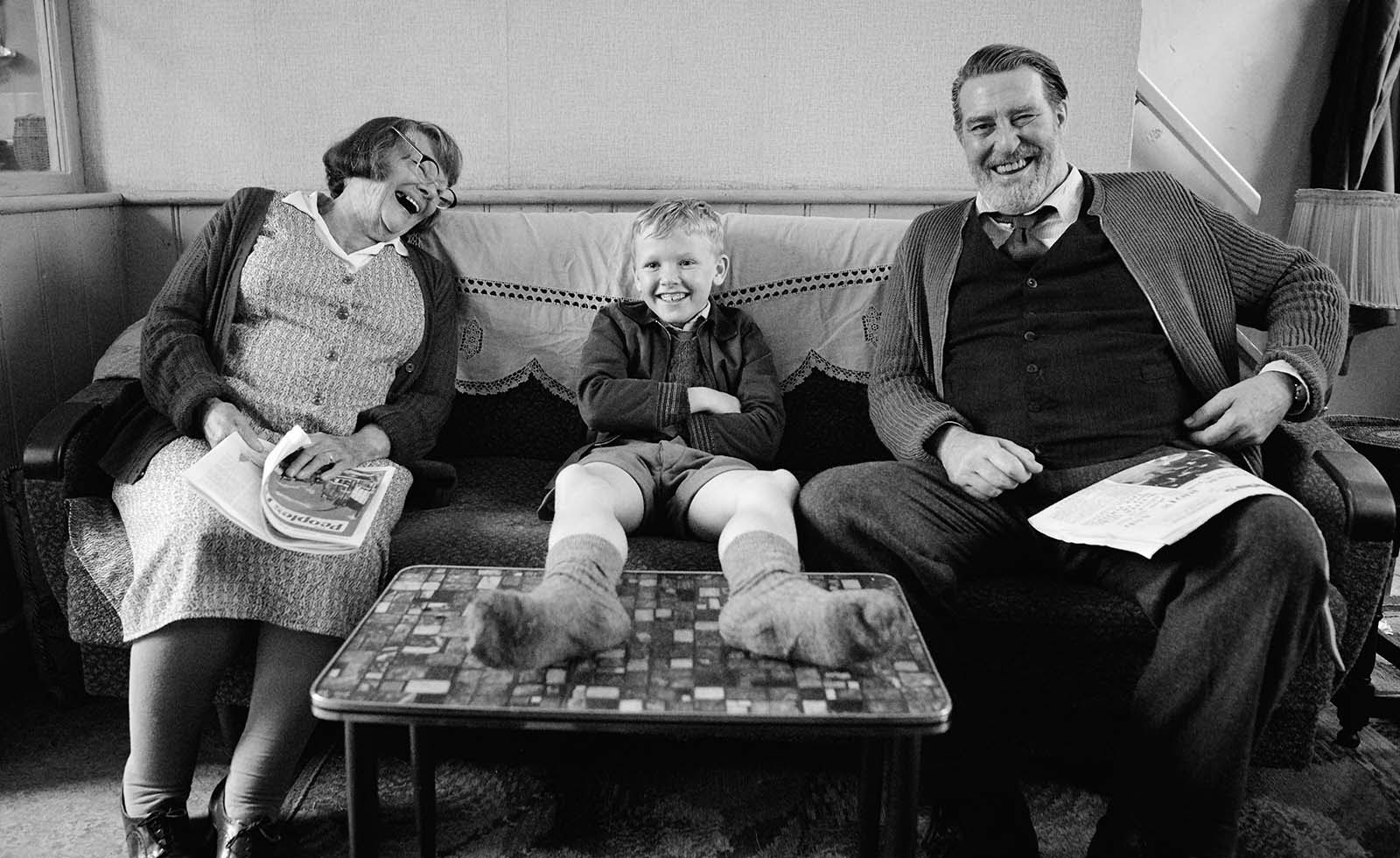
The family had all been put into the one hotel, a bubble group. I think on a very unconscious level, that sense of intimacy was translated in their performance and you felt that they were a family, even though they had not met each other before shooting had begun.
Jude Hill is a professional Irish dancer, so he was fearless when Ken was nurturing his performance and talking him through takes, saying, “Do it again,” and, “Try it again like this.” So, we had long, rolling takes with Jude and loads of performances. I’d ask the assistant to put locators on any new takes or resets.
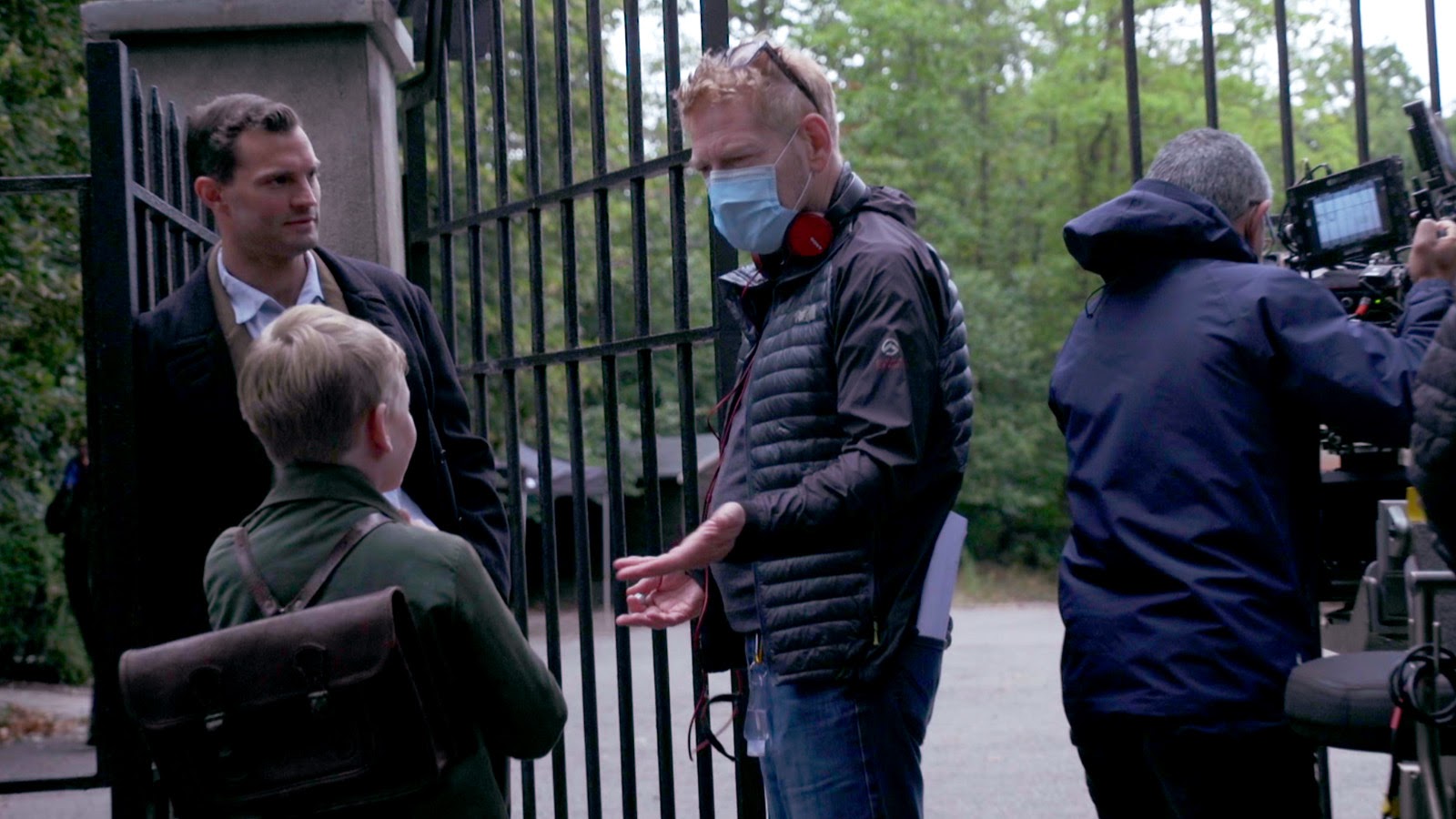
Ken said afterwards that Jude’s diligence as an Irish dancer meant that he was able to deal with that. It never threw him off course. He didn’t get upset. You can imagine another kid might be overwhelmed. He just kept listening and Ken kept telling him to just listen and react. I think we all embraced that type of authenticity the actors embodied.
As editors, we stand on the shoulders of our brilliant script writers, directors, cinematographers. I had a wealth of beautiful material to work with. Then, part of my challenge as an editor would be figuring out how to create that immersive quality for the audience, to allow them in and empathize.
Sometimes the subjective point of view was the child. He was the main protagonist, but sometimes we had to shift the point of view to the mother. In that early riot scene, for example, when Jude is trapped on the street, it was shot at 60 frames per second and there was a circular track around him.
I was able to put a time warp on so that we could begin at 24fps and then go to 48fps or 36fps. I could modulate the speed so that it felt more visceral and punctuated the sound.
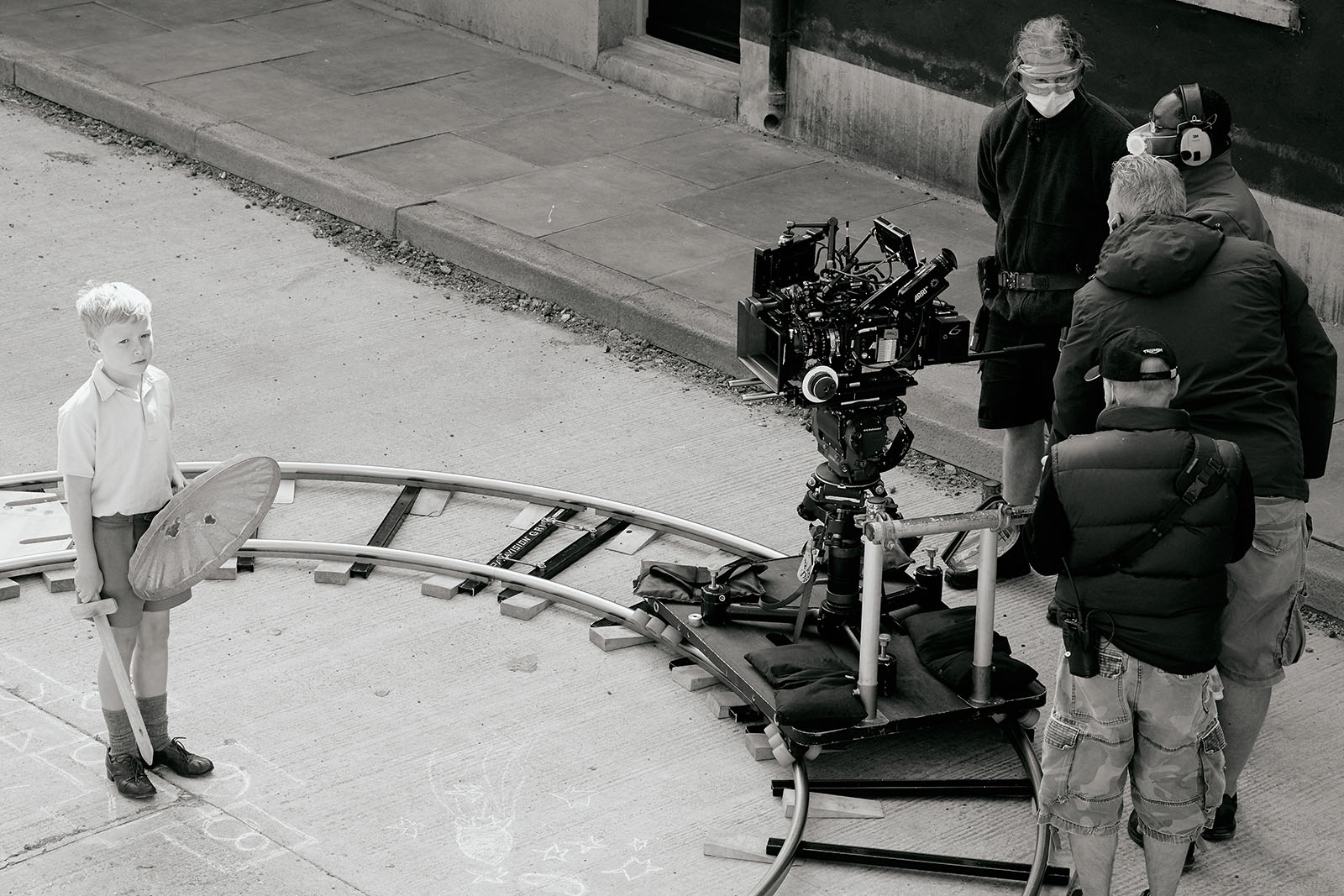
So, when you watch it, you’ll see there’s this sort of musicality even to the way the camera is moving. It’s moving in a different way to capture the boy’s emotion. Then for that big explosion, we used no sound leading up to that and then all the real sound starts to cut in after the explosion.
It was a very creative sound that we had. Even in Ken’s script, he had written something like, “The sound of buzzing bees.” So, we could really go impressionistic until that first explosion and then Ma comes out and grabs the child, and again, we went back to slow motion as those bricks are raining off the top of her dustbin lid.
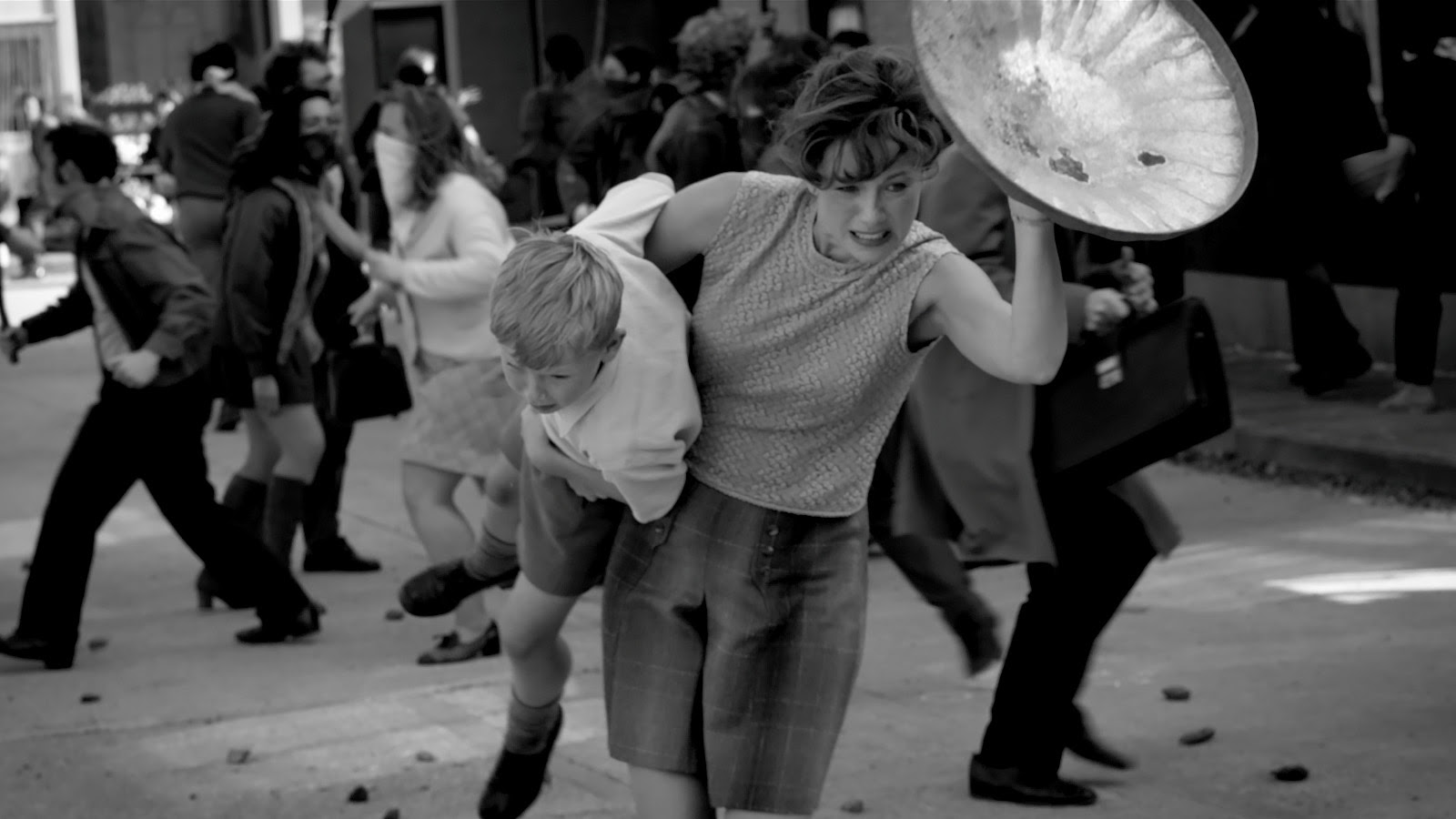
There’s a few films made in Poland that I saw as a young student, and anytime there was an explosion, they always cut the sound out. So, after the explosion, you feel that deafness. In this, we sort of reverse that. We get the deafness, distortion, and the subjective confusion prior to the explosion. Then, the explosion brings the child back into reality. So that was sort of to invert that age old cinematic trick of losing sound after an explosion.
Then, once the explosion happened, all of these cuts are quick and visceral. I have about 12 frames of a fire. There’s a guy with a chain that was only about 18 frames I think. So, I just cut through it to get the best, most visceral feeling so that the audience could feel the brutality of those cuts and feel what it felt like for the parents.
I just cut through it to get the best, most visceral feeling.
Then, Katrina grabs that dustbin lid and we go back to 60 frames per second again, and allow her breath to come through. Once she has Buddy under the table, we leave with her. I think it just captures the immediacy of that riot and the confusion of that riot. So, you really understood what they were going through.
For this scene, all these were real takes shot in a beautiful way that it was all cinema vérité. The camera was following the people. I felt there was a psychology and a brutality just cutting through this.
We had a lot of different elements at play to try and convey what was happening for this family. We could have used music throughout it, but we chose to just go with the sound design, so that you really had no escape from this act of violence.
HULLFISH: The editing reminds me of that great Thelma Schoonmaker quote when somebody said to her, “As a woman, doesn’t it disturb you to cut all these violent Martin Scorsese movies? And she says, “They’re not violent until I get done editing them.”
NÍ DHONGHAÍLE: [Laughs] Good girl, Thelma. I agree. Then, what was really fun from an editorial point of view was the second riot in Belfast. We cut that to the music of High Noon, so we had no sound. We have two riots in the film, one with the sort of social realism and other more with magic realism. As a storyteller and a filmmaker, I like when there’s a little bit more diversity in the the art of storytelling
HULLFISH: It also helps that they’re not dual beats.
NÍ DHONGHAÍLE: Correct. In regards to these scenes, being unafraid is important as well because sometimes with Belfast we held shots for a very long time, and there’s a majesty in that when it’s supplemented with very fast editing. If things were held too long, the film can plateau from a rhythm point of view.
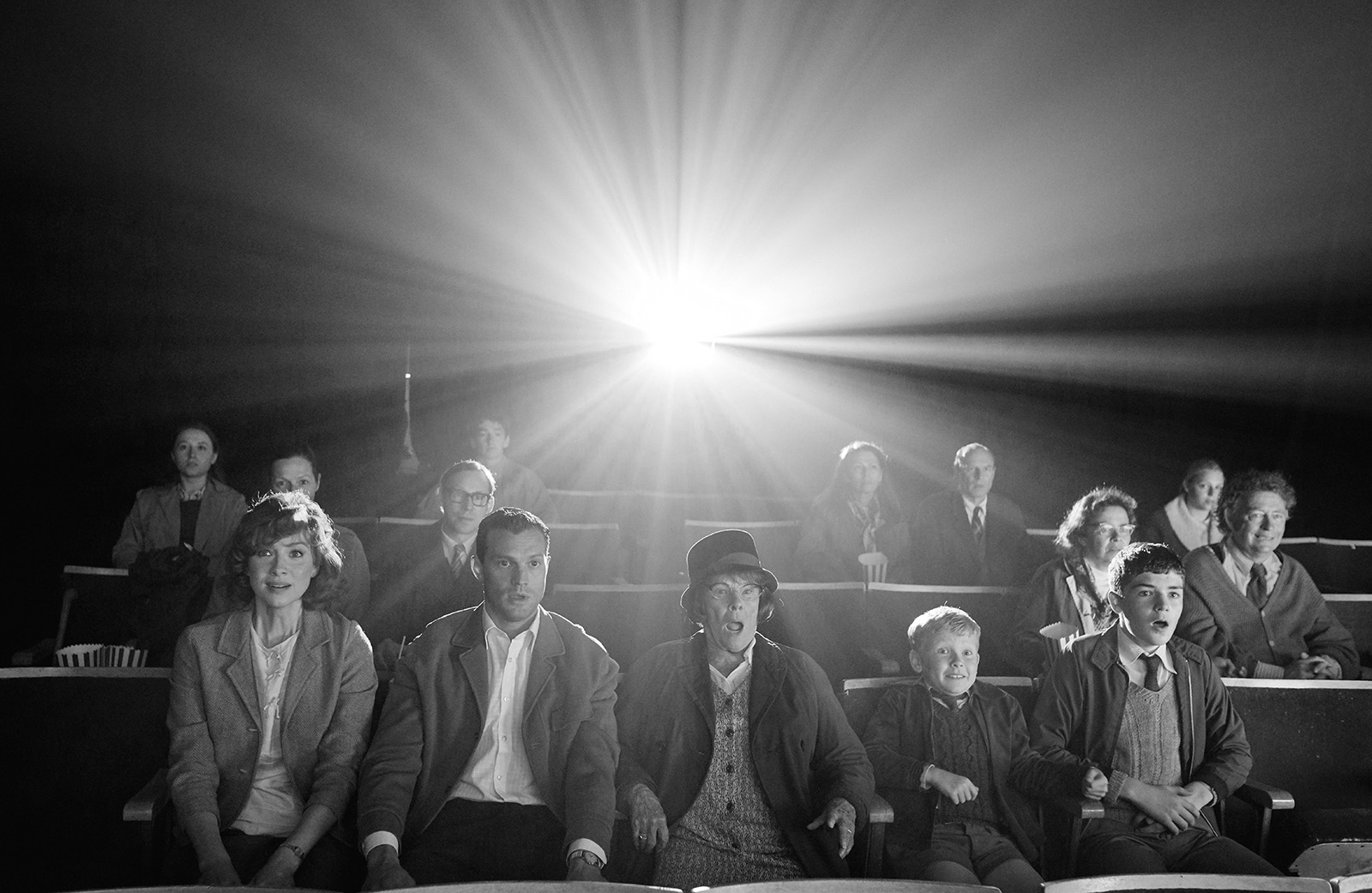
I think with Belfast sometimes things are very defined, and sometimes they’re ephemeral. For me, if there’s an intangible memory that is just beyond your grasp, I was just trying to show that the shaping of the edit could actually help you feel that.
Also, Ken often shot through glass, and I found that was really very powerful. For example, when the child is with his granddad and the boy asks him, “Why can’t you come too?” and pop says, “I can’t go with you.” Then, the little boy leans in to hook him.
So, we were in the room with them, but for that hook, we cut outside through the glass and you see the reflection of the sea and we could use the sound of the sea. I think that just made me feel like it was a memory for Ken because you’re looking through glass and you’ve removed the sound to the distant waves. It allows you just to watch what is happening.
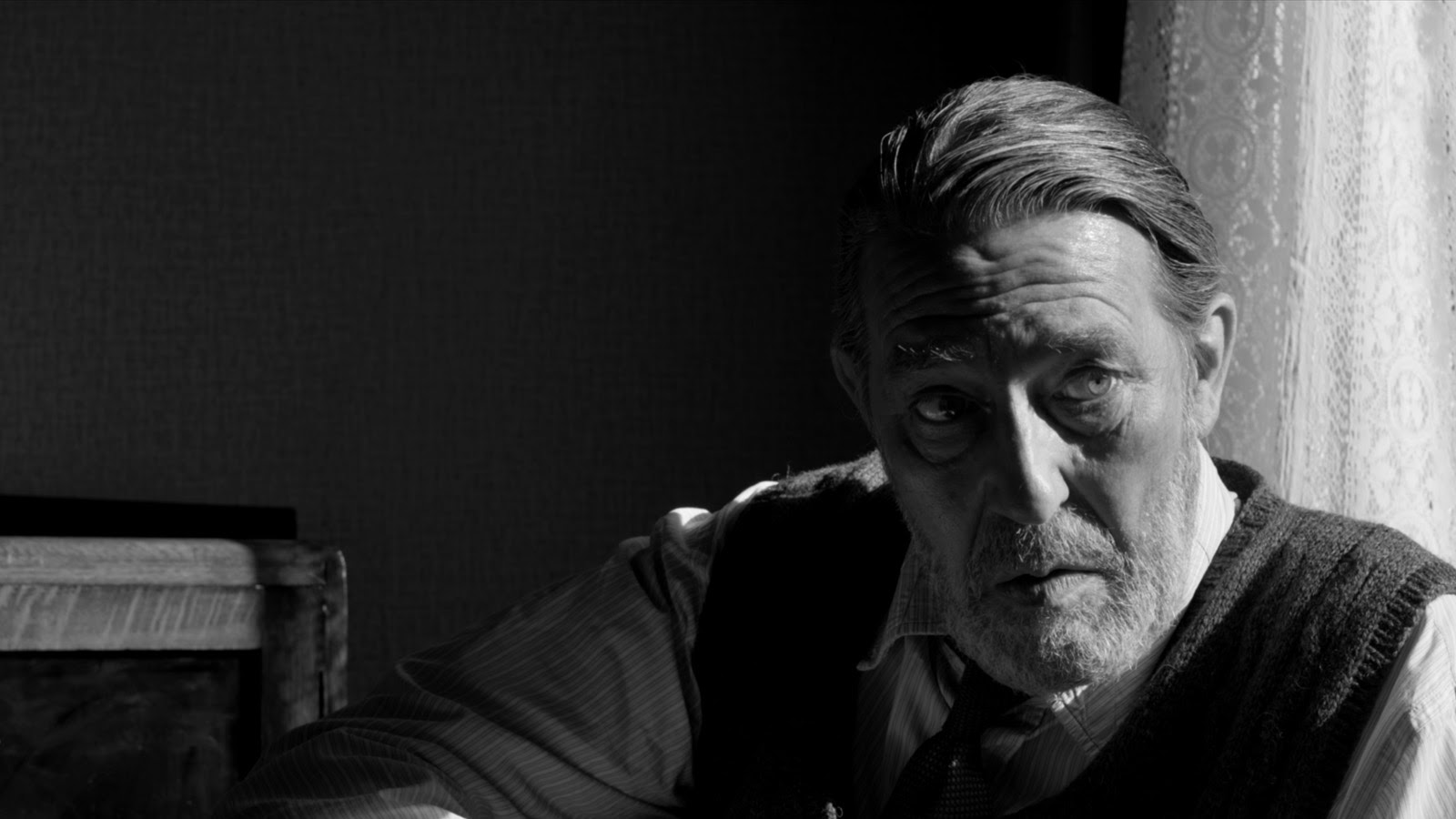
Ciarán Hinds was magnificent. He just slowly brought his hand up and allowed the boy to hook him, embrace him. I thought there was a majesty to that and something truthful in that.
HULLFISH: Did you have other takes where he hugged him faster?
NÍ DHONGHAÍLE: We had another take where his arms wrapped around him faster, but on this one Ciarán seemed to take the truth of that embrace, which is that he will not be going and the child will be going without him. Then, he just puts the hands in. So, that felt like the right moment for the end of the scene.
Again, because we did so much remotely, I was never able to say to Ken, “Was that an absolute memory?” But I feel that it is a memory. Even from his script, his writing of how he was on the street with the first riot is absolutely from his memory. So, there were a few things like that, which I think enabled us to find a musicality to the film and to the editing which enabled the audience to empathize.
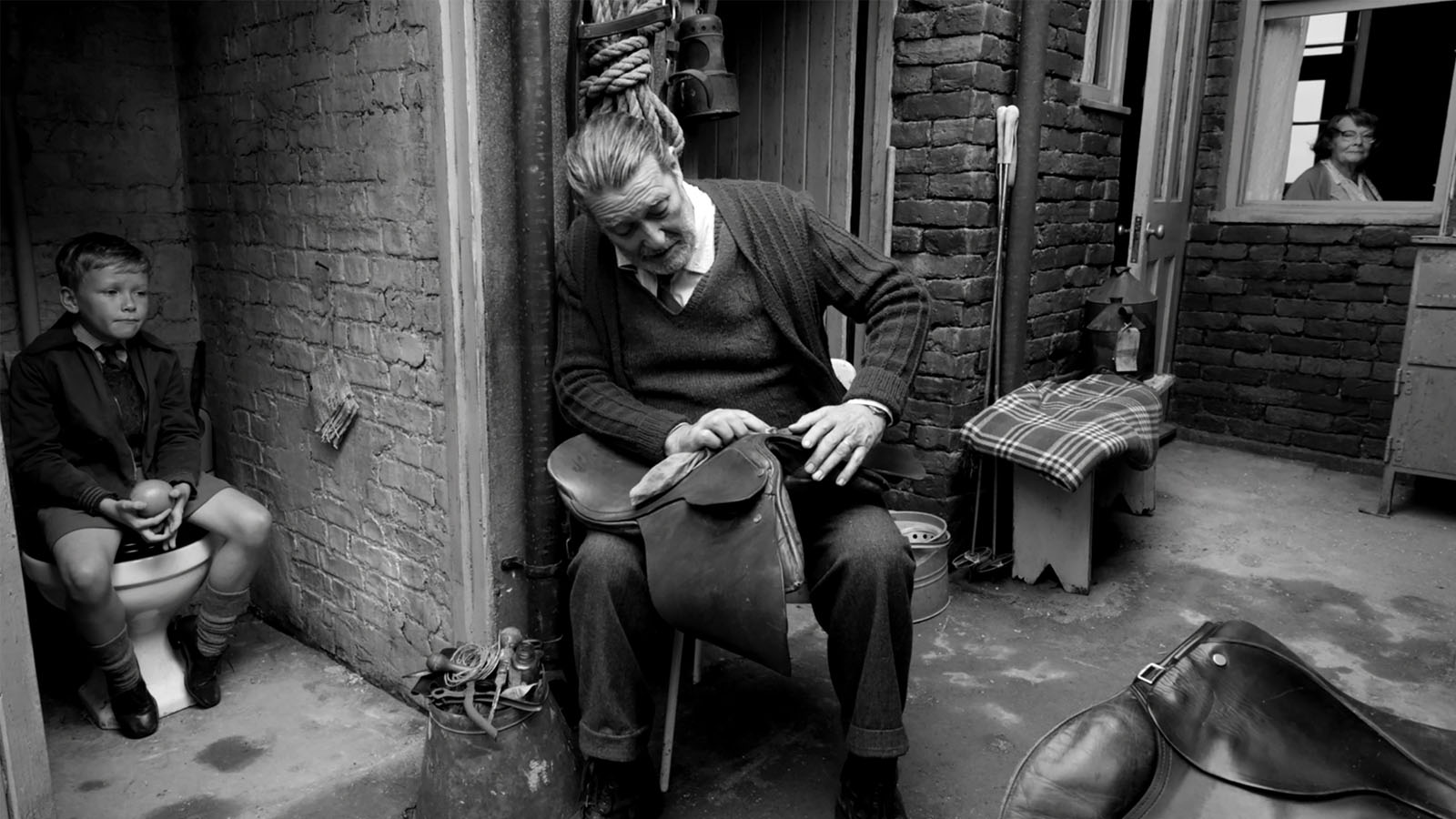
HULLFISH: You mentioned the takes that were constant with the boy, Jude, and that you could hear Kenneth coaching him. Does that affect your editing when you can hear the reason why he didn’t like one performance?
NÍ DHONGHAÍLE: I actually enjoyed it because of the nature of us not being in the same cutting room. It was like a little glimpse into what Ken was trying to get from the child. Jude may have done it in a very beautiful way or in a very sad way, but then I could hear that Ken was actually searching for something. He just was on a quest.
Even though they ran it 14 times, maybe take seven or eight was actually the one that was wonderful, and Ken just went on a little bit extra to get a bit more variety.
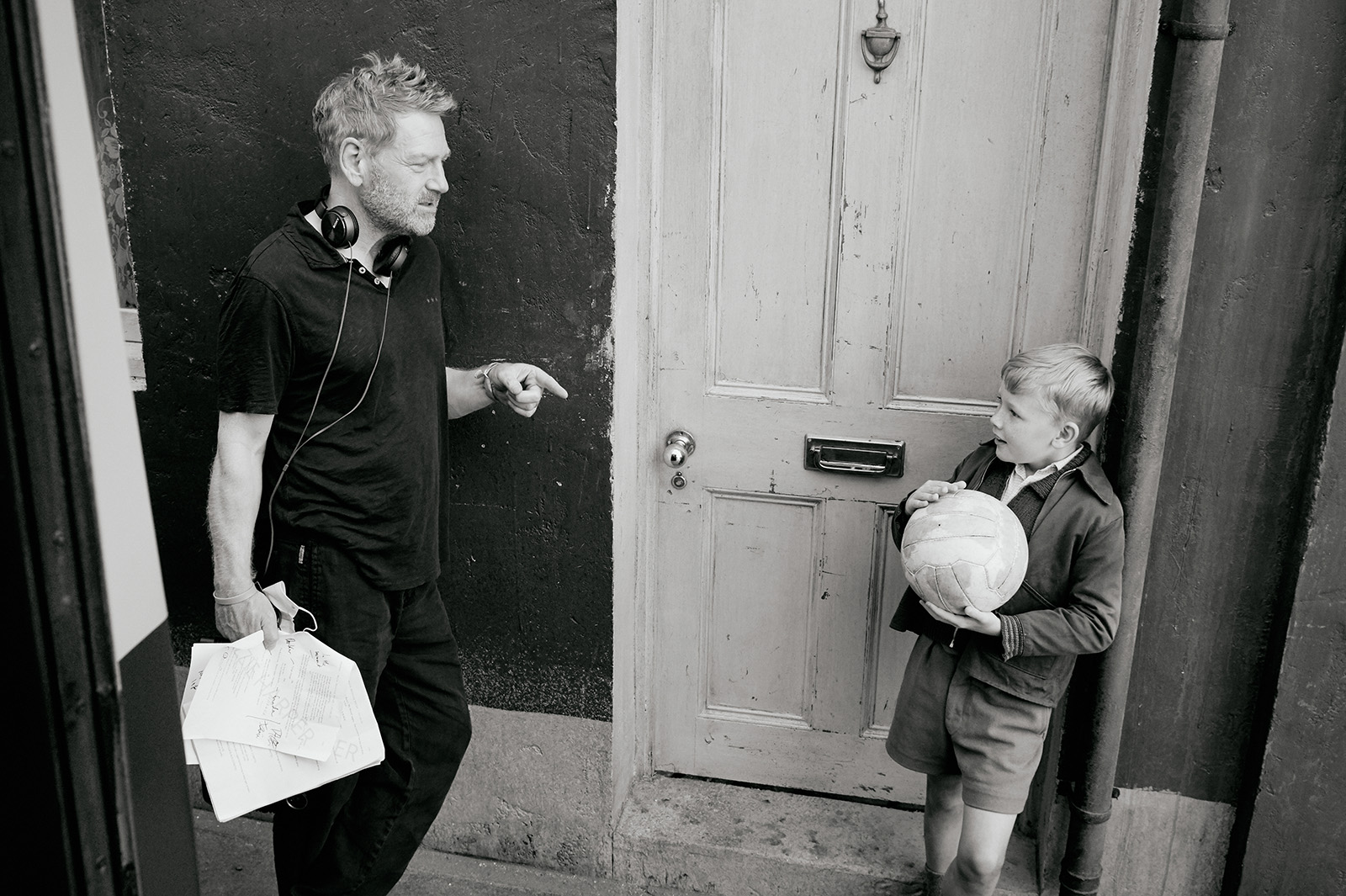
It’s a very good tool for an editor when you are working in these COVID times to hear what the director is searching for. Then, of course I have to cut out Ken’s voice, so that also added to the reason why the sound design was actually really important for me prior to our brilliant sand team who joined us in October.
We were shooting in August, so I was already having to work on the sound with Simon Chase, who’s on our sound team with James Mather. There were a few scenes where I did phone Simon before he officially began to just say, “Hey, do you have a better ship horn or some more sound for the morning after the riot as the child is walking through the street?” We had to build that from scratch. So I was asking Simon if he had anything that he could throw our way.
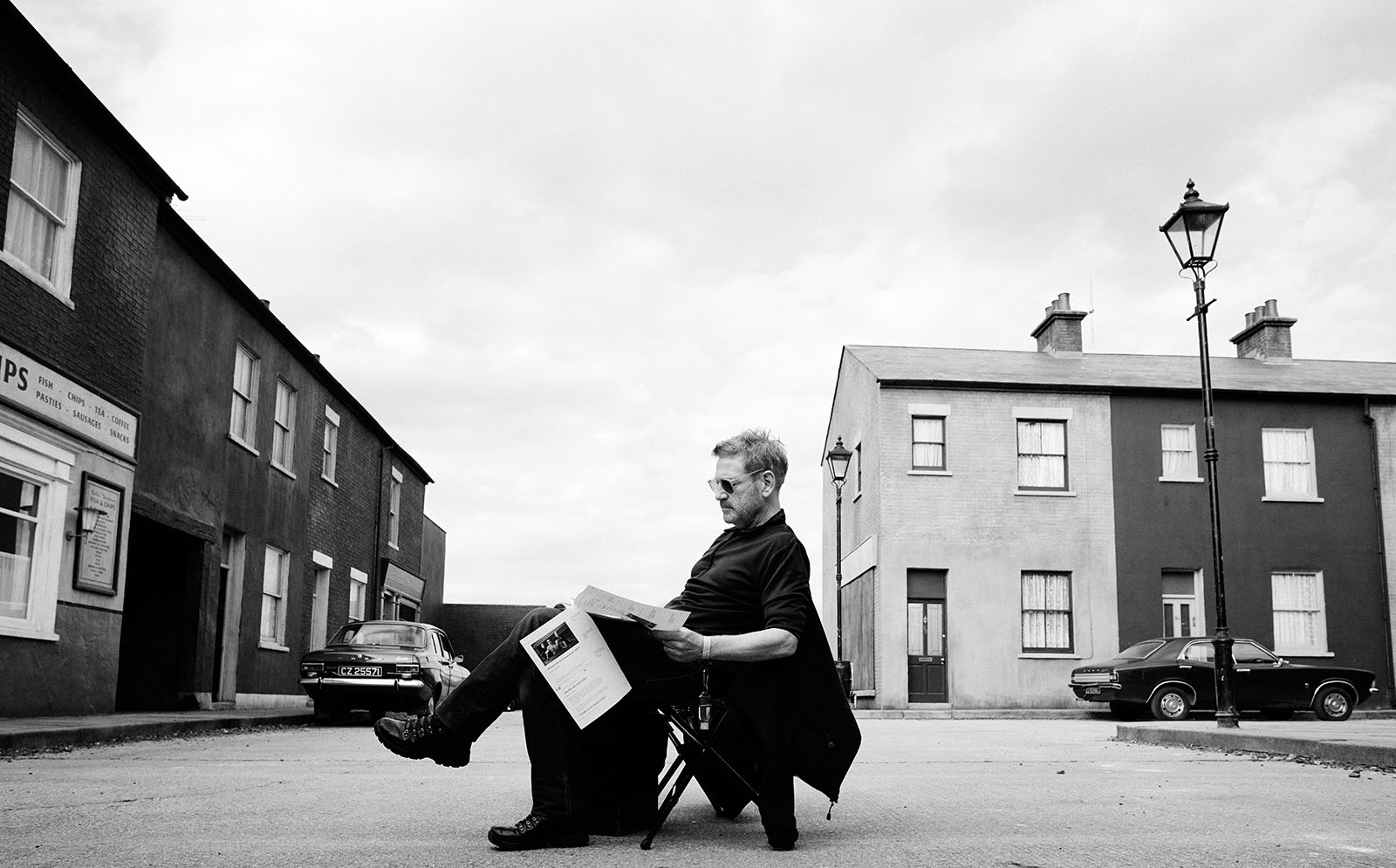
But I was recording my dad’s voice on my phone, along with my children as temp sound. If you listened, it’s my child’s voice in it as the little boy who’s been dragged up the street. We were finding ways of just making this feel rich.
Once Ken wrapped at the end of September, our schedule was quite tight. So, he had to see the entire film the following Tuesday after wrap. Now that means I got Friday’s rushes, and then I was working Sunday, Monday, and the cut of the entire film was ready for Ken to watch on that Tuesday. I was watching it in Dublin. He was watching it in London. Then, we got on the telephone to discuss.
Immediately, we were both saying that some scenes could move around. The biggest note that he gave was to put Van Morrison in as the soundtrack throughout the film, because in that early script, Van Morrison was top and tail only. There was music of the time within the body of the film, but when he watched the whole thing down, he just said, “Okay, let’s just embrace Van.”
Again, I think that’s something that’s his fingerprint. It was good because it meant that I could really focus on storytelling, structure, and finding ways of coming in and out of scenes with a little bit more immediacy while keeping that connection for the audience.
Also, I’m very proud that it’s still called Belfast. You could imagine in another world they might’ve changed the title, but Ken has reclaimed that name of Belfast as a celebration of his family and the community of Belfast. Obviously, I have my own family from Northern Ireland, so I felt very mindful that it was important to show the beauty of Belfast and that kindness of neighbors.
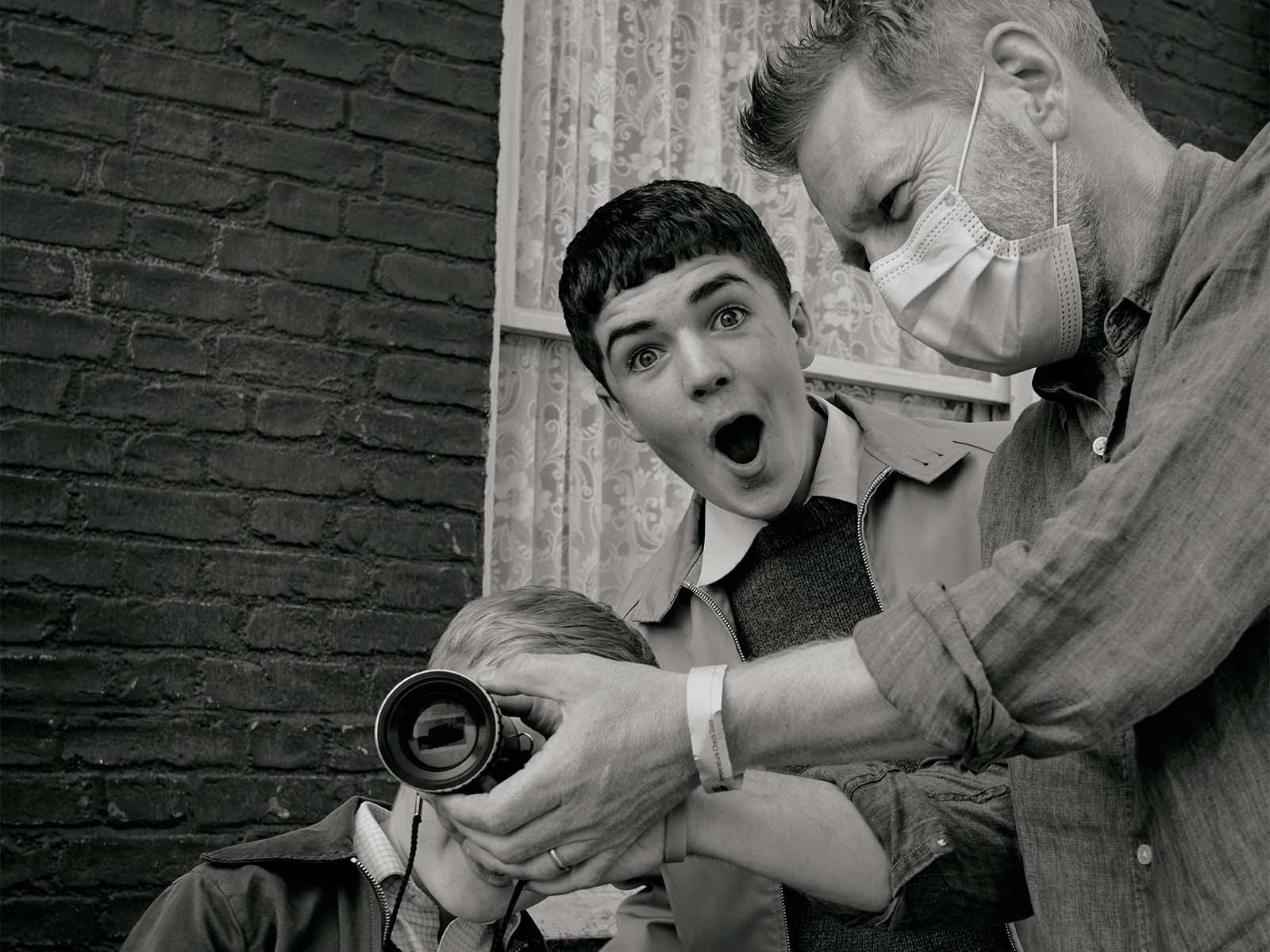
That little scene where they’re doing the long jump, for example, we put in the Van Morrison song Days Like These. But that became a critical thing in our conversations in the cutting room—even if we were on the telephone—that for Ma you couldn’t have a situation where the audience might get frustrated by Ma and why she isn’t leaving.
We had to really show the fact that Belfast is her home. In “Days Like These,” the music says, “There’s nowhere better to be, cause you’re with your family. The sun is shining. You’re in the park. You’re having fun.”
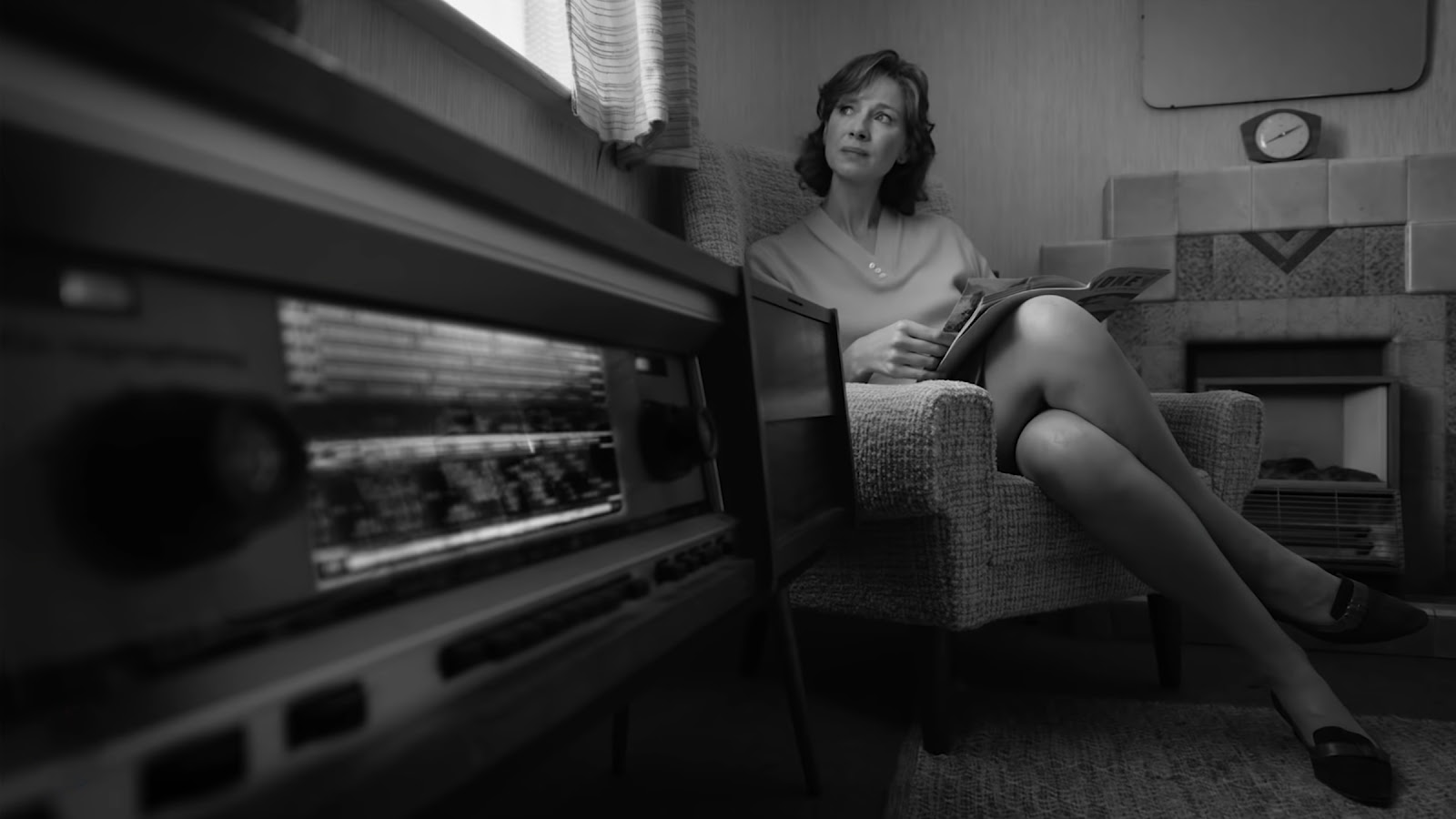
Our first cut was 2 hours 20min. The finished film is about 1 hour 42min. So, we had a lot of scenes that fell to the floor. We found a way of grabbing the best bits of any scenes that we had lost and using them in those vignettes. That vignette created more shaping for the film. I think these were all sort of tools of the editing room that we were able to just work together to preserve the lyricism of Ken’s script while enhancing it and building on it.
HULLFISH: What were some of the discussions of cutting those things? Obviously, Ken wrote them for a reason.
NÍ DHONGHAÍLE: Well, there were a few scenes that went into sort of magic realism where the characters would sing. They were actually beautiful. I actually loved one of them with Caitríona Balfe in particular, but it was a little bit like the Jamie Dornan sequence with Everlasting Love.
There were probably three more, and it just meant that they came at a time in the film where you needed it to be real. Although we juggled between social realism and magic realism, I think, overall, it’s sort of like poetic naturalism is what we’ve actually found.
For example, when Pa and Ma are on the bus having that big conversation and Caitríona Balfe is saying, “I don’t want to go, and if I go over to England, they’re going to hate us. They’re going to say, ‘we stole the house off them. We’re killing their children on the streets.’” So, it was a very serious, honest conversation between Ma and Pa. You sort of realized it was important.
When she got off the bus, that’s where her song came in, and her song may have worked on paper but on screen, it let the tension go. It turned into magic realism and actually it was more powerful to let Pa go when she’s holding the side of the bus, he’s just looking at them, and then we just go to the hospital with Pa. So, it just felt a little bit more real.
HULLFISH: We talked about some of the more lyrical scenes. What about some of the more—I wouldn’t call them violent—but some of the more immediate scenes.
NÍ DHONGHAÍLE: Well, I obviously love editing, but I love the psychology of editing. I love using elliptical edits or just cutting out certain frames. Ken just shot with two cameras, so there was an abundance of beautiful stuff. Ken just told me, “Work your magic. Do whatever you like to get that feeling.”
So, for all of those drone shots with the people coming, I found that if I cut into the shot or I cut before the end of the shot—if I didn’t let things finish—it kept you a little bit more on the edge of your seat.
Even when they’re smashing the windows on the Catholic side, I could come in halfway through the smash or get out before they smashed the grate. It just created an energy and a scariness. Like those people, you didn’t know what was going to go on.
Then, intercutting that with the two little boys under the table. We had beautiful footage, so I just found a shot where I thought little Jude’s eye just looked terrified. It just meant that I could really keep the energy and maintain a freshness to the cut.
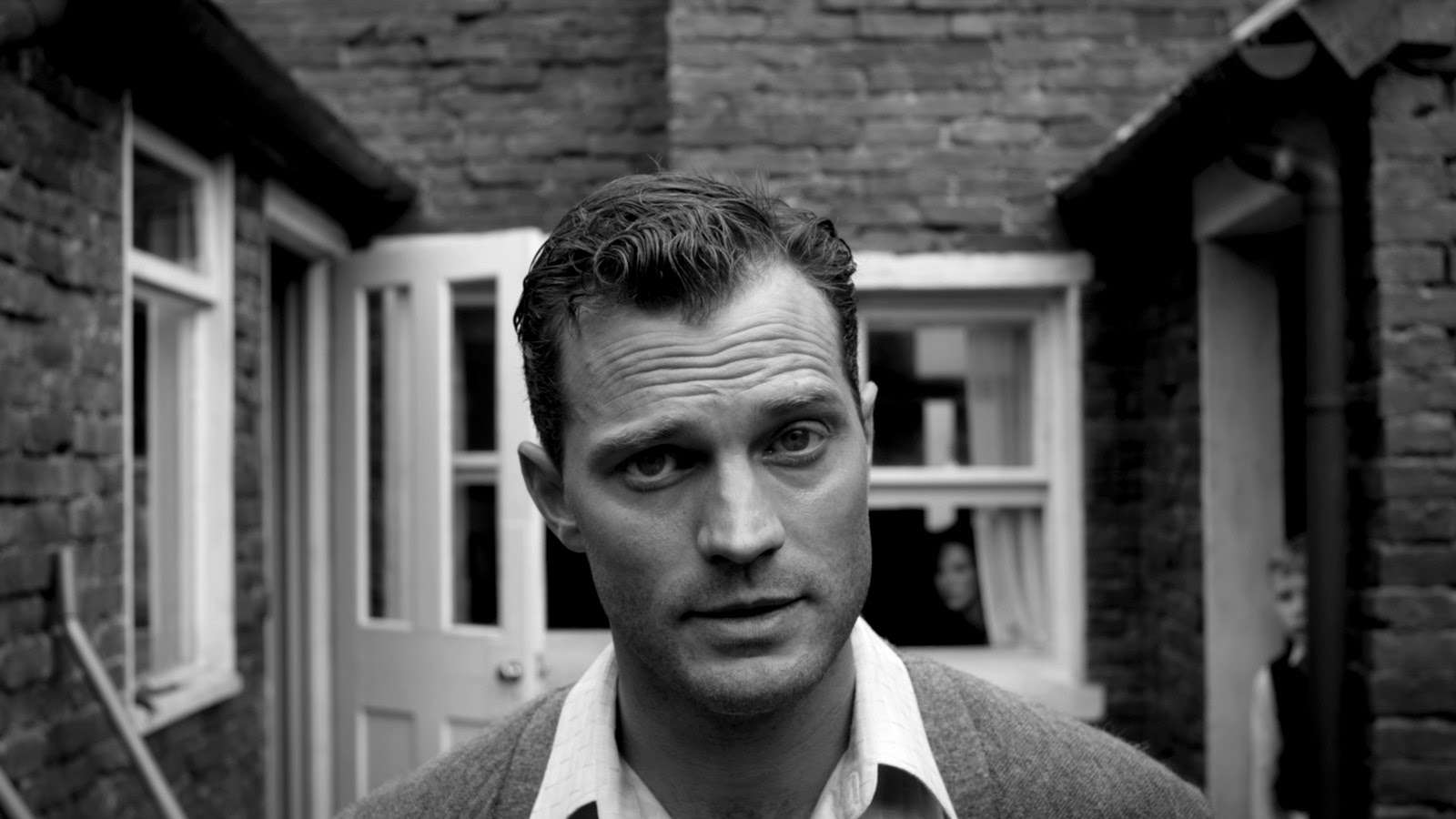
Later, for example, there’s a little bit of audience memory that I quite like doing. There was a scene when Pa puts out the bins, and that came from later in the film but we moved it up after the first day of the party. Then, the bin was left outside and we just lingered on it a couple of frames too long. Then, we cut to the color explosion.
That was really fun because that was a find in the cutting room. The explosion to me mirrors the black and white explosion that took Jude out of his reverie in the opening riot. So, they’re sort of like match images.
The color explosion is from One Million Years, BC. For example, in the script, they had the party, then we have the establishing shot of the cinema, and then they were watching the film. But by moving up the scene with the bins earlier, it sort of revealed itself to me. If you just cut to the explosion, you don’t need the exterior of the cinema. You’re just in it.
I thought this could really work. I sent it to Ken, and he loved it.
Again, it’s very truthful to Ken’s script because the script was about the child escaping through the cinema. It’s his story. So, I thought this could really work. I sent it to Ken, and he loved it. He had said to me afterward that it was really exciting for him to see that.
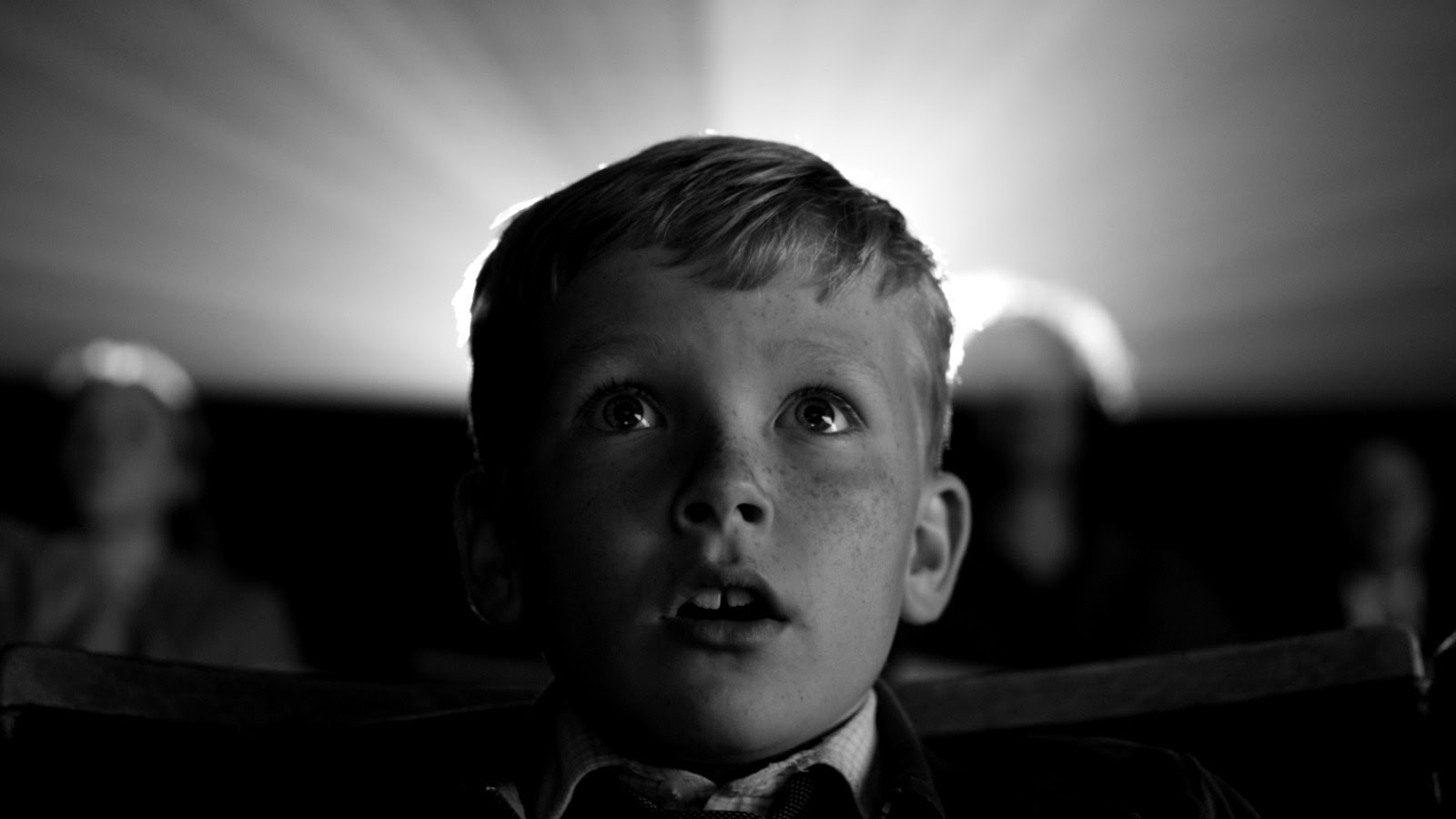
HULLFISH: For those who haven’t seen the movie, it’s all black and white except for when you’re in the cinema and the theater.
NÍ DHONGHAÍLE: And top and tail.
HULLFISH: Right, top and tail. To get back to the top and tail, you mentioned that all the top stuff was shot on cameras and phones originally, but it was reshot, correct?
NÍ DHONGHAÍLE: Correct. It was all shot just on mobile phones and stuff, but it was reshot properly two days in Belfast when they could go back. Then, we had a brilliant drone operator, Phil Crothers, who filmed some beautiful drone shots that we’ve then sprinkled throughout the film and just turned it into black and white.
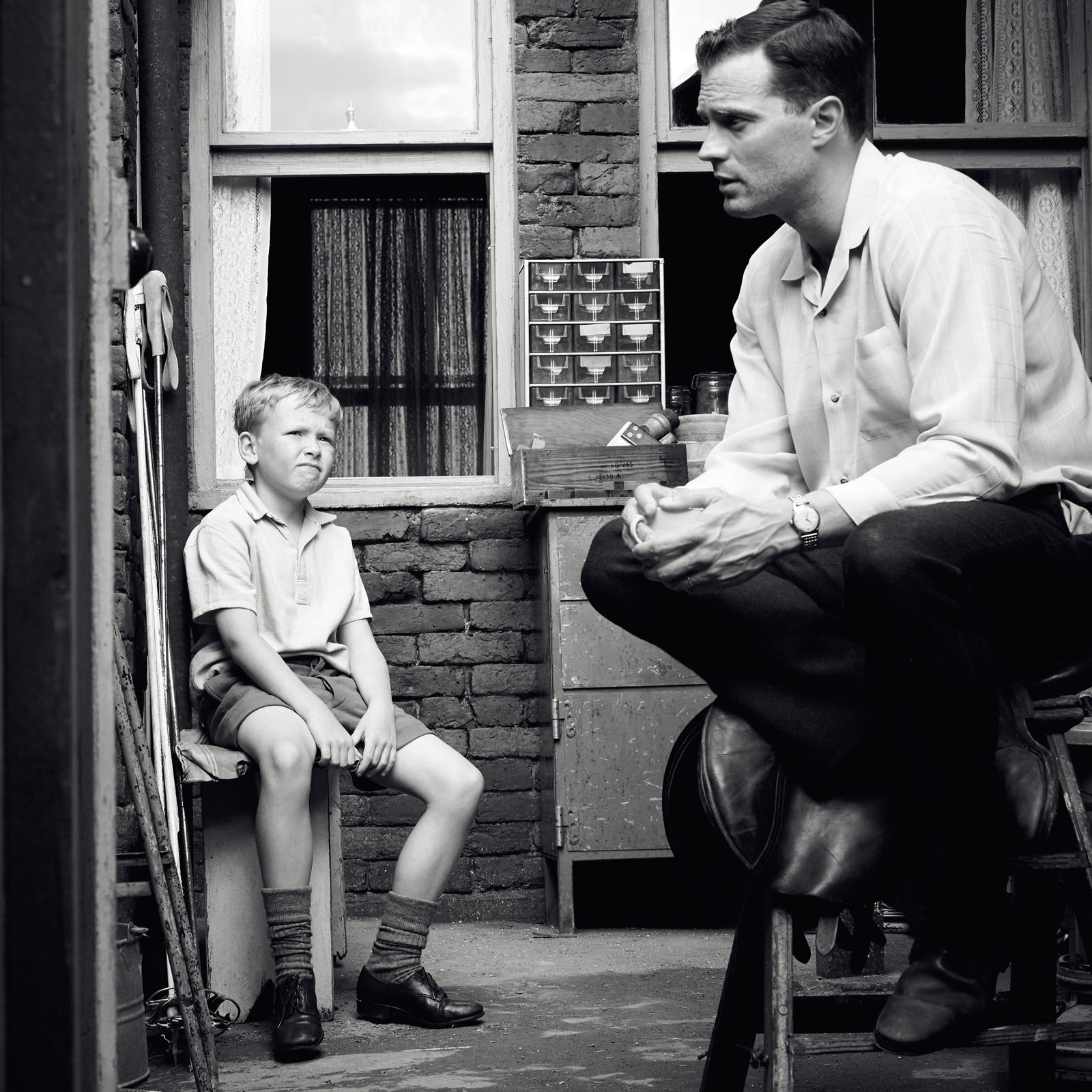
The QuickTime that I made in August—which let’s call pre-vis cut for the sake of argument—was a really good tool because Ken could send that to the Belfast team in the event that COVID did not allow him to return.
So, that was a good safety that we could say, “Look, these are the shots.” Then, they could go and recreate those shots, and if they saw something better, they could offer that up as well. So, I think Ken is always someone who encourages the team to not just do as he says, but actually to tell him if you see something else that we can do. It’s a proper collaboration.
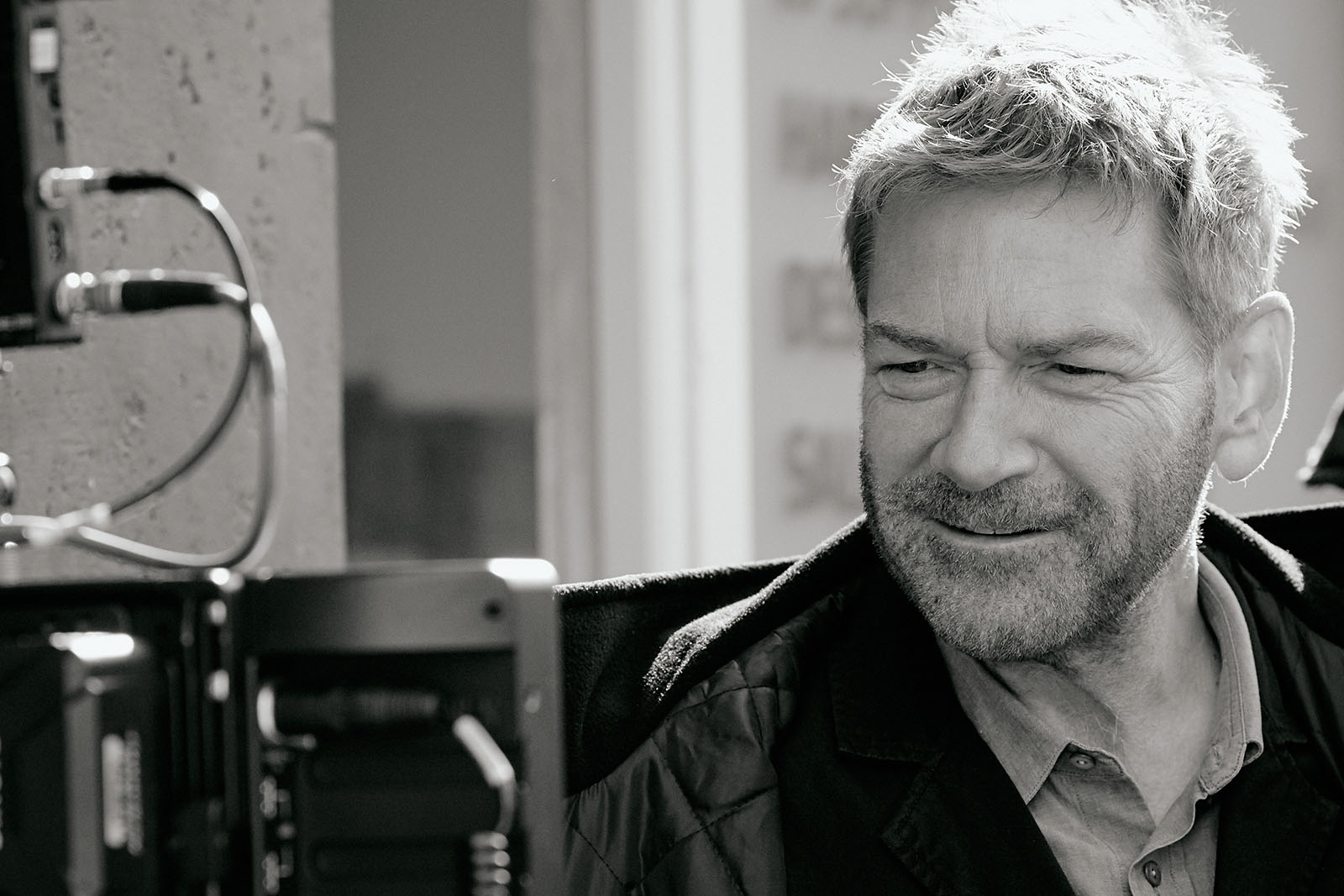
The scene where Pa is going back and is waving goodbye to little Buddy came about because, in the script, Pa said to the children, “Don’t join anything and tell your mother everything that’s going on. I’m leaving tomorrow.” Then, the next day was him leaving and waving goodbye to Buddy.
But I just happened to say to Ken, “As a parent who commutes to London for work, I am Pa. When I say goodbye to the kids at night, the next morning it’s more impactful that Pa would not be there and we don’t see him waving goodbye.” So, I just said to Ken, “Do you think we could move that down after Christmas when Buddy has said, ‘I don’t want to leave Belfast’?”
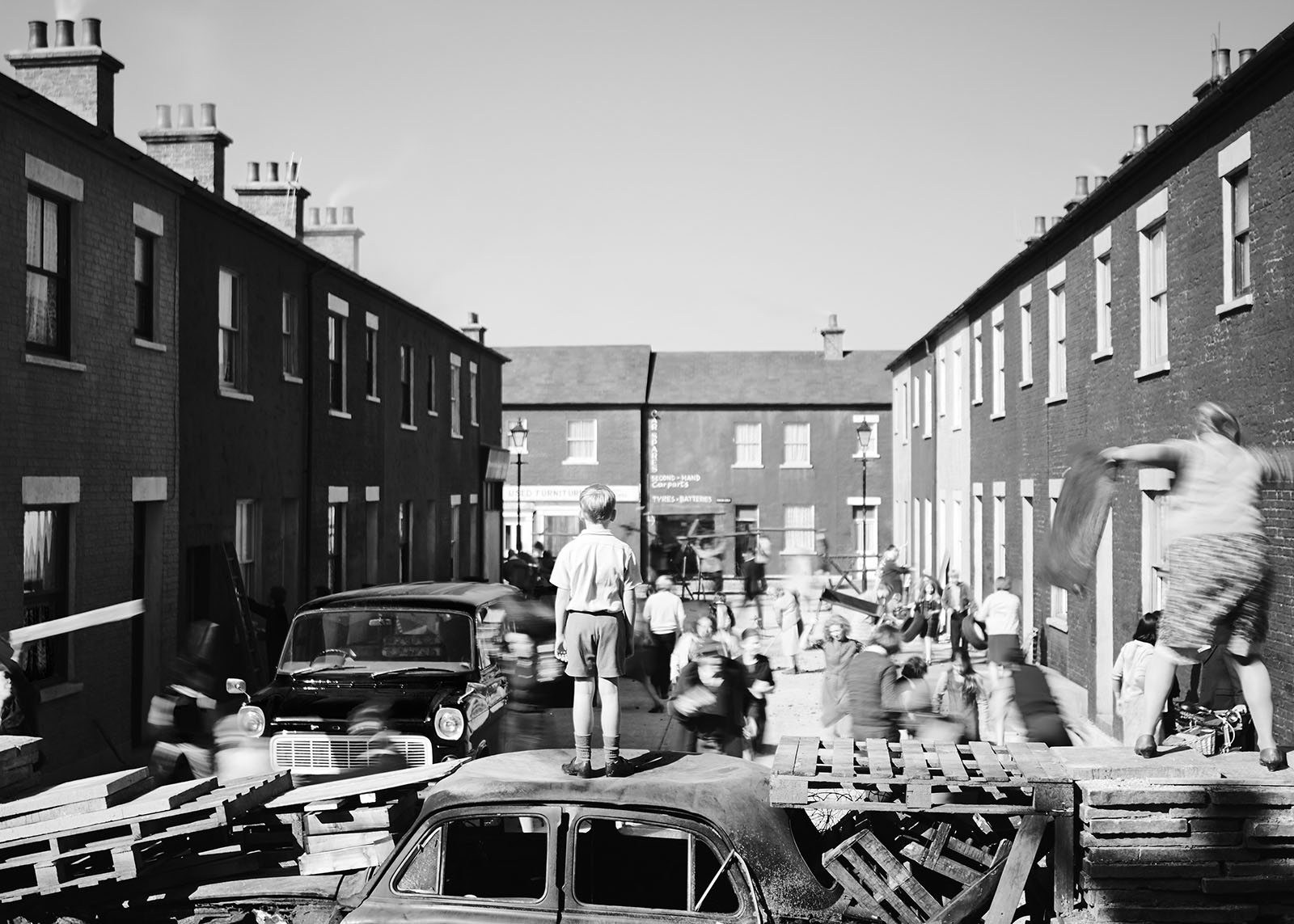
Ken was really great because he knows his work and he could see the value of trying that out, so he said, “Okay, audition that.” I did that change, so we took the bins up, we moved this down, and once you start doing that, other things begin to reveal themselves.
Then, Ken said to me, “We’ll try the song Carrickfergus on the scene of the father waving.” So, then suddenly that scene, by its placement later and with the song Carrickfergus, became not expositional, but actually comes after the conversation when Ma and he just said, “We might not have even lasted till Easter.”
The stakes were set for this family. They have got to do something. They cannot stay. With him waving goodbye and walking past the barricades, that just took on a resonance of its own. Things like that happen where there are happy accidents. That can happen in any cutting room.
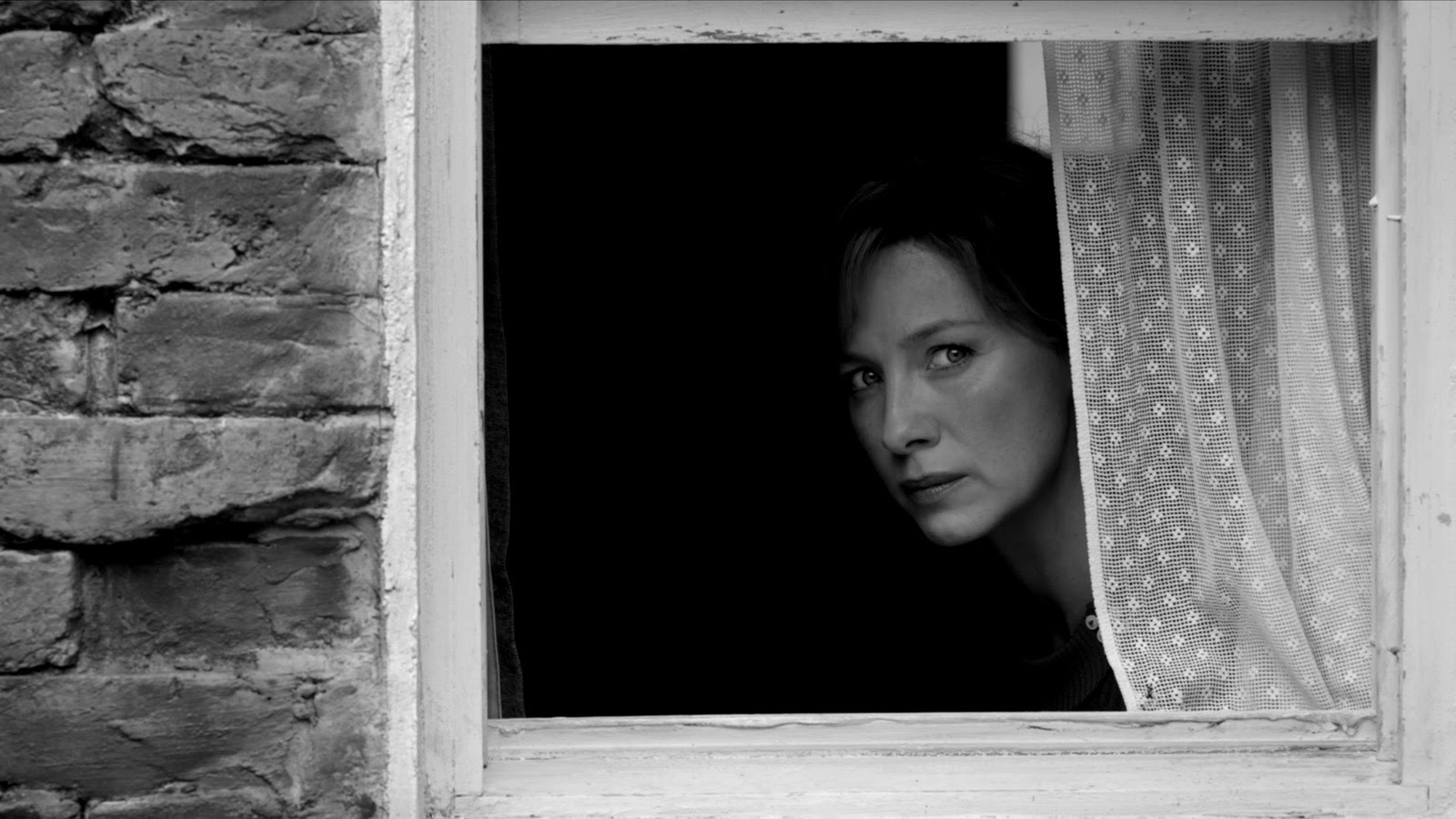
HULLFISH: That also shows that the editor has the final rewrite. Is there any other juggling of scenes that you can think of, and can you explain why they were juggled?
NÍ DHONGHAÍLE: There were actually quite a few. One of the things that we’ve found—and it was just in the shaping of the film—was just to keep the energy up because there was a tension to the film that we needed to sustain. If anyone reads the reviews, they’ll know it’s about Ken, so they’ll know he did leave.
So we asked ourselves, “How do you cut it in such a way that even if the audience knows the family will eventually leave, they can still feel that tension?” There were quite a few movements and changes throughout, even with Granny’s last lines, for example, which we moved closer to the end.
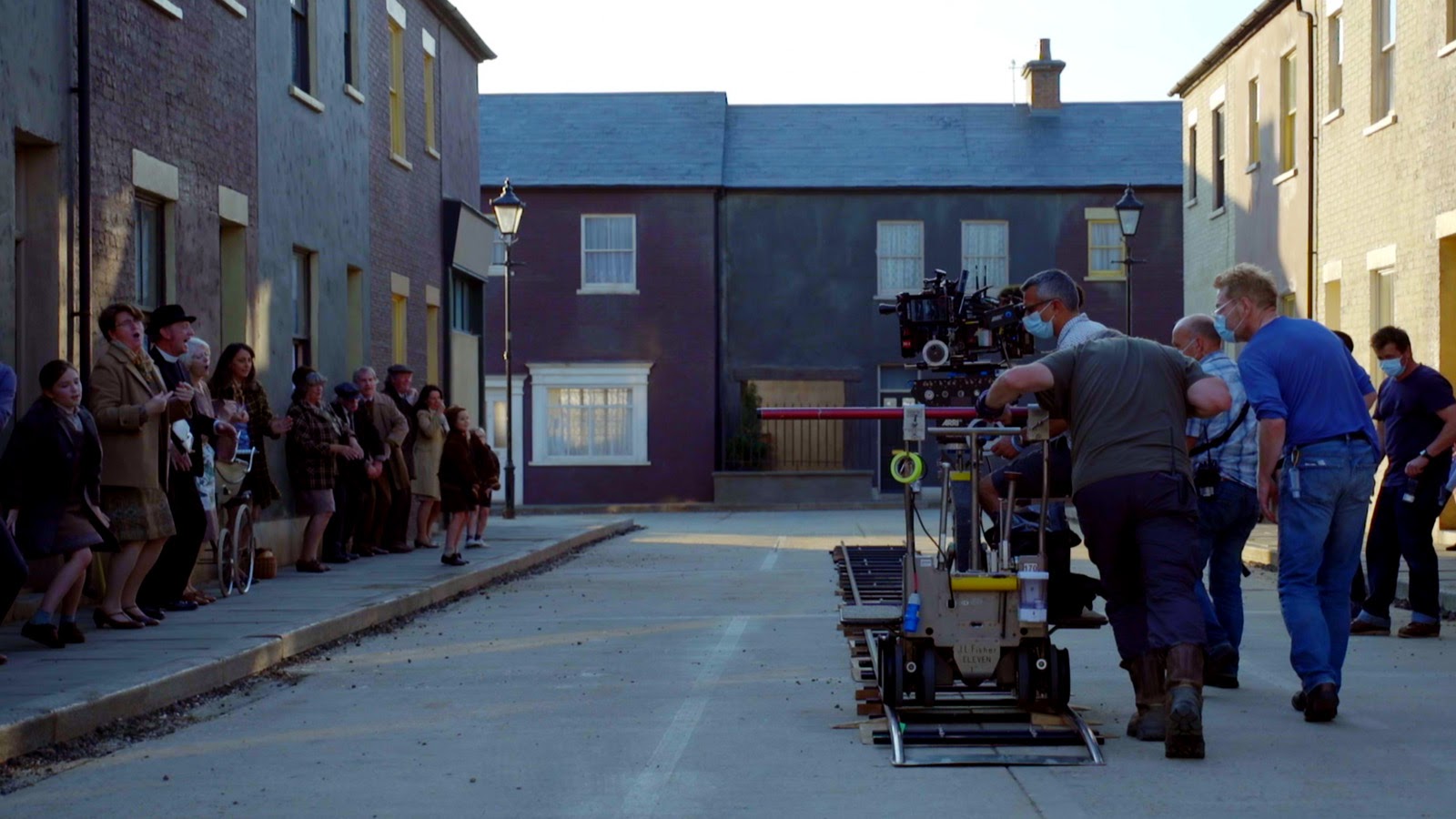
We also had a whole other ending of the film that we removed and just let it be Granny closing the door instead. The older Buddy used to return, but we lost that, and once Ken wrote those lines, “For those who stayed and for those who left, or for all of those who were lost…”
I think all of us as the entire team just agreed that he nailed it. You couldn’t have a more fitting ending. So, then we just completely removed the ending and put that in.
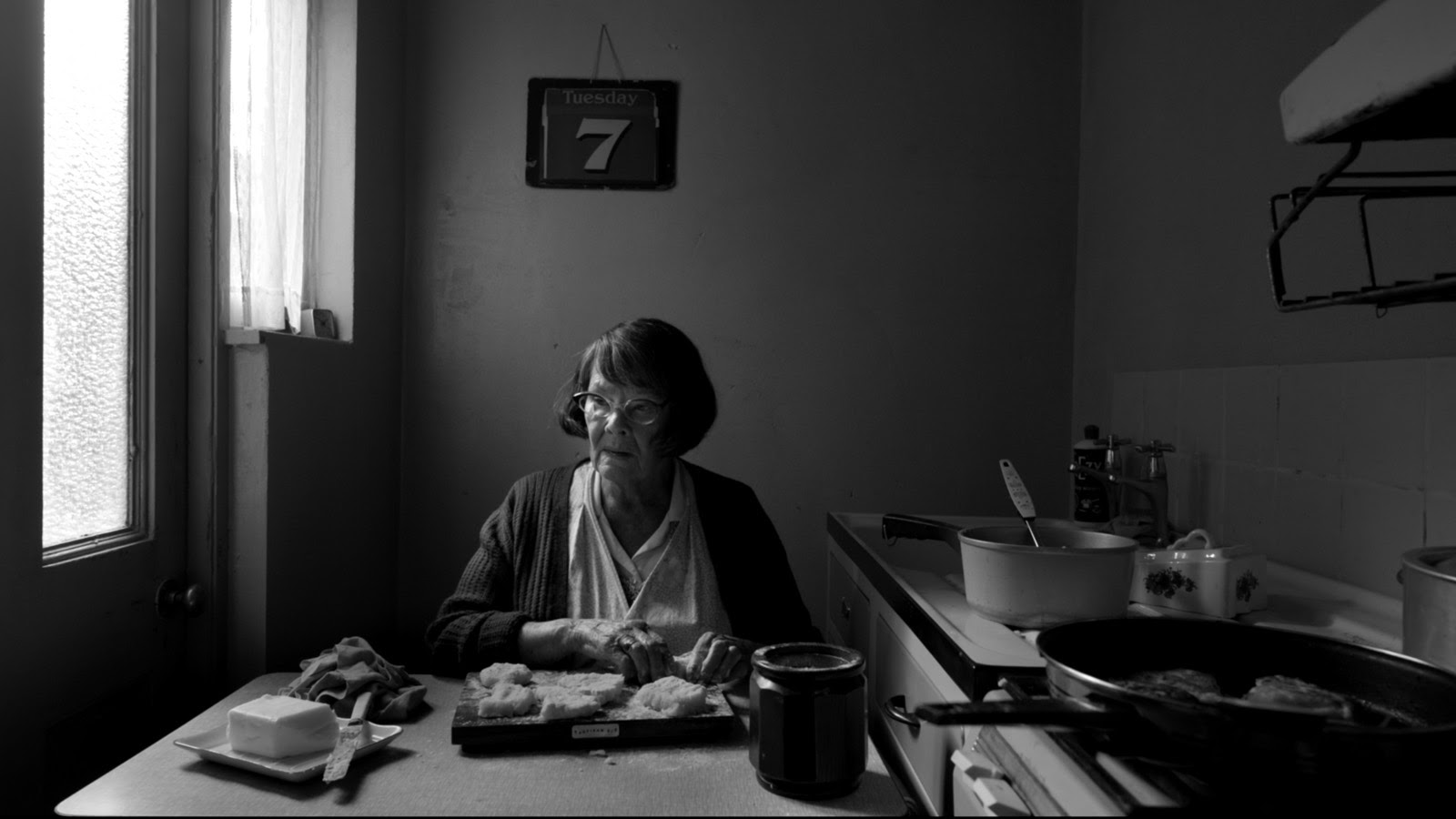
But we were constantly questioning and investigating it because even at Christmas we showed it to a test audience in different countries in Ireland and England, and we were quite fearless, I think.
Even when we had finished, if we thought something could be better, we opened it again in February or in March and did a tweak and fixed it again. All of us just wanted to do right by this film and make sure that we had explored everything either in terms of sound design, the editing, or the storytelling.
All of us just wanted to do right by this film and make sure that we had explored everything either in terms of sound design, the editing, or the storytelling.
When we finished, I remember emailing Ken and I said, “No stone was left unturned.” We did investigate the best of what we had and made sure that it was doing justice to the story he wanted to tell.
HULLFISH: I love the idea of no stone being left unturned because that’s one of those things that I think about a lot. When I get notes, sometimes I have my ego in it. I think you have to get rid of that ego because when you turn over these stones, it might not reveal what you want, but it leads to something.
NÍ DHONGHAÍLE: It does. It leads to something. Even for the first week’s assembly, I always find, say, maybe four or five beautiful images and I put it to a little bit of music. The link would begin with these images, which sort of captured the tone of the film.
So, I’d send that to Ken or I’d send it to whatever director I’m working with as a mood piece because sometimes you want to just give them a little pat on the back to say, “Well done.”
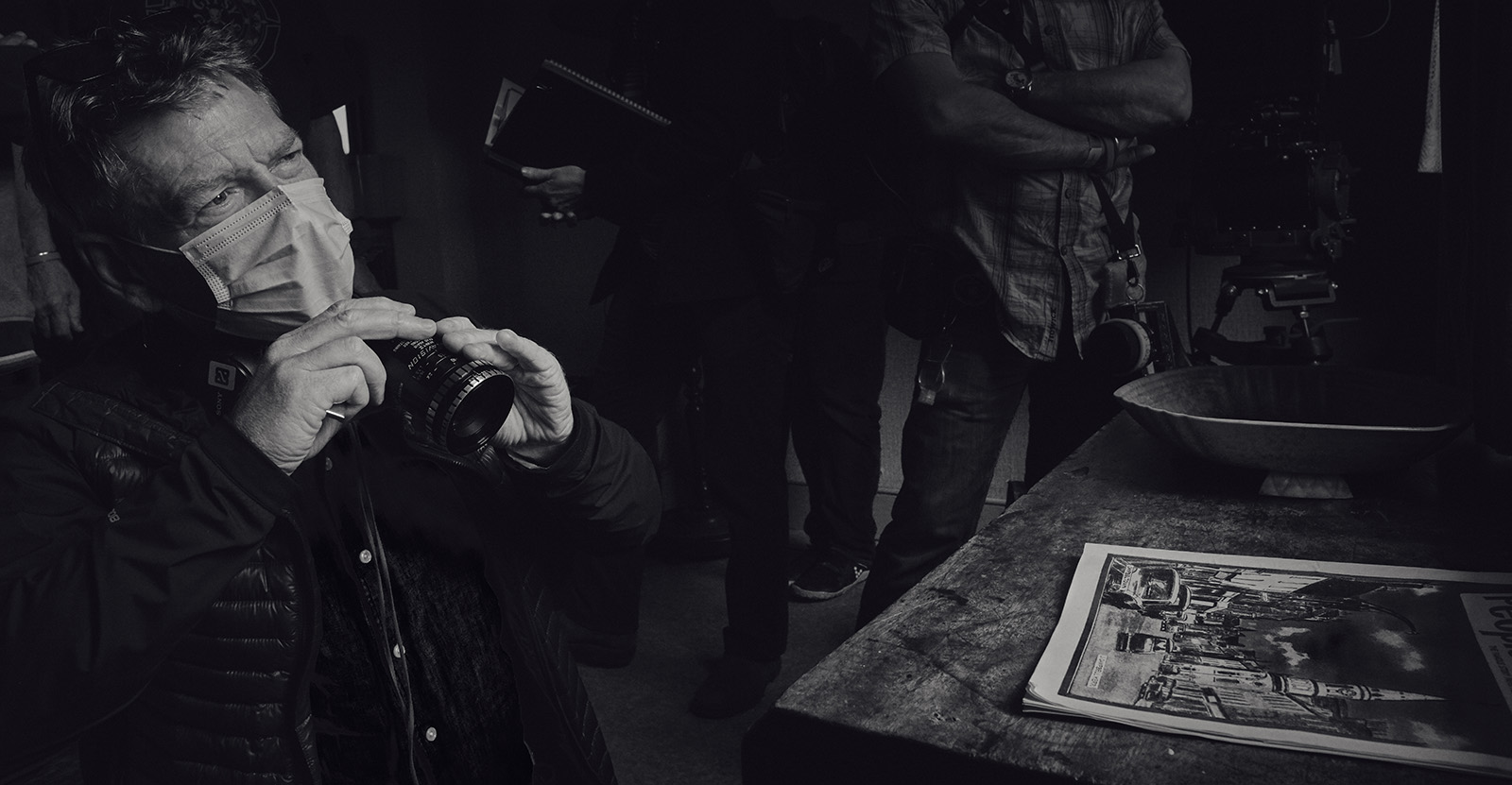
In the first week, I took this beautiful poem by Francis Ledwidge, an Irish poet, “The Little Boy in the Morning”, about a little boy who died. The line is something like, “Still I wait and he won’t come. He whistles as another gate where angels listen.”
When I was cutting the first week’s work that Ken did, he got the child going in and out of the bars of the fence. He did a very clever thing as a director by doing those types of shots in the first week as the crew got climatized to one another and the child, who has never acted before and is getting used to these cameras that were coming towards them.
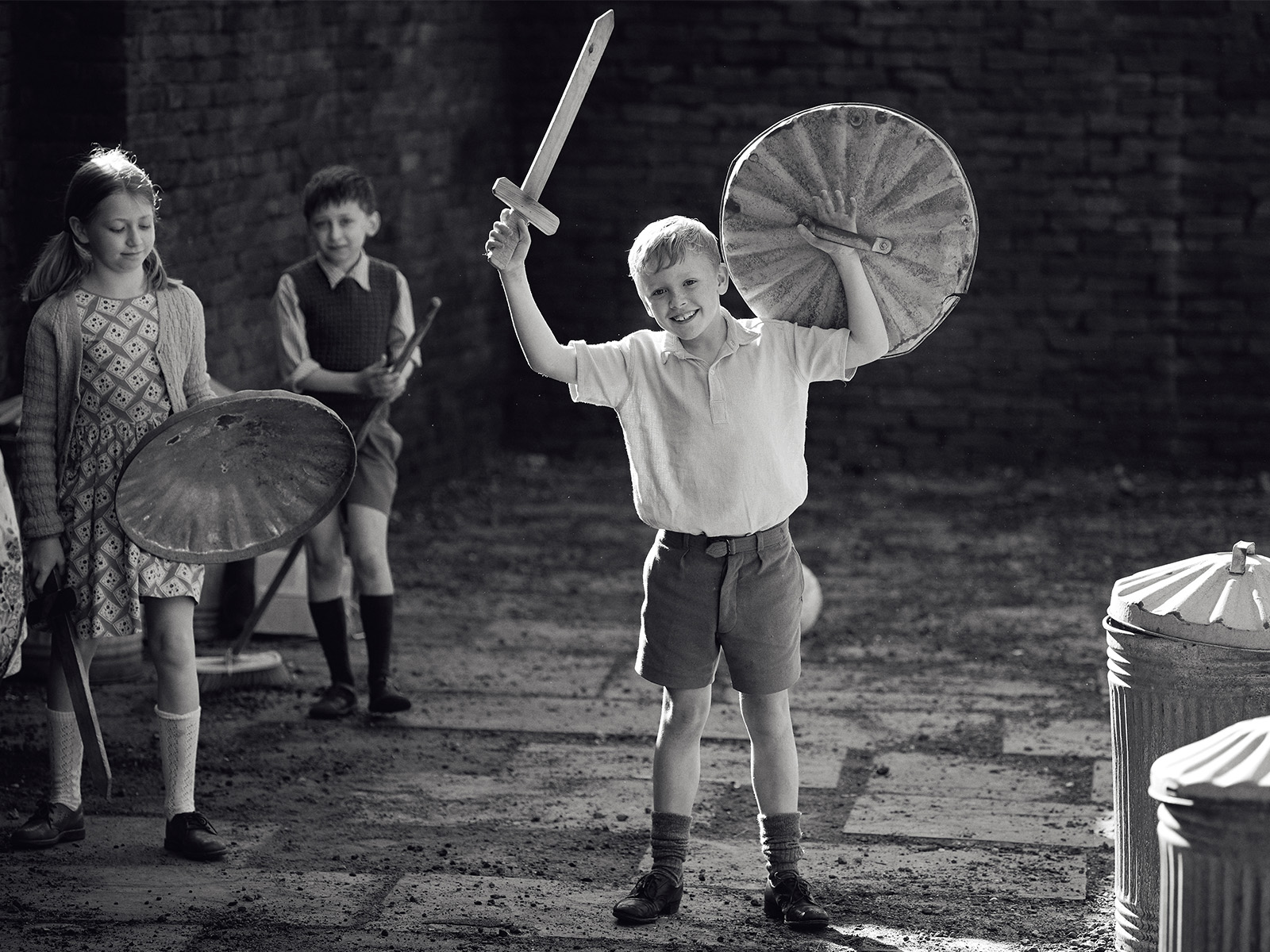
When I was watching that, I was thinking, once he left, some of those images were beautiful. For example, the empty frame after the boy had left and then there was the saddle and the curtain.
So, as we continued near the end of the film, if you watch it again after Pa has died—I’m sorry if that’s a spoiler—I just cut those three images with very gentle sound design because I just thought they captured the places where the child will no longer walk.
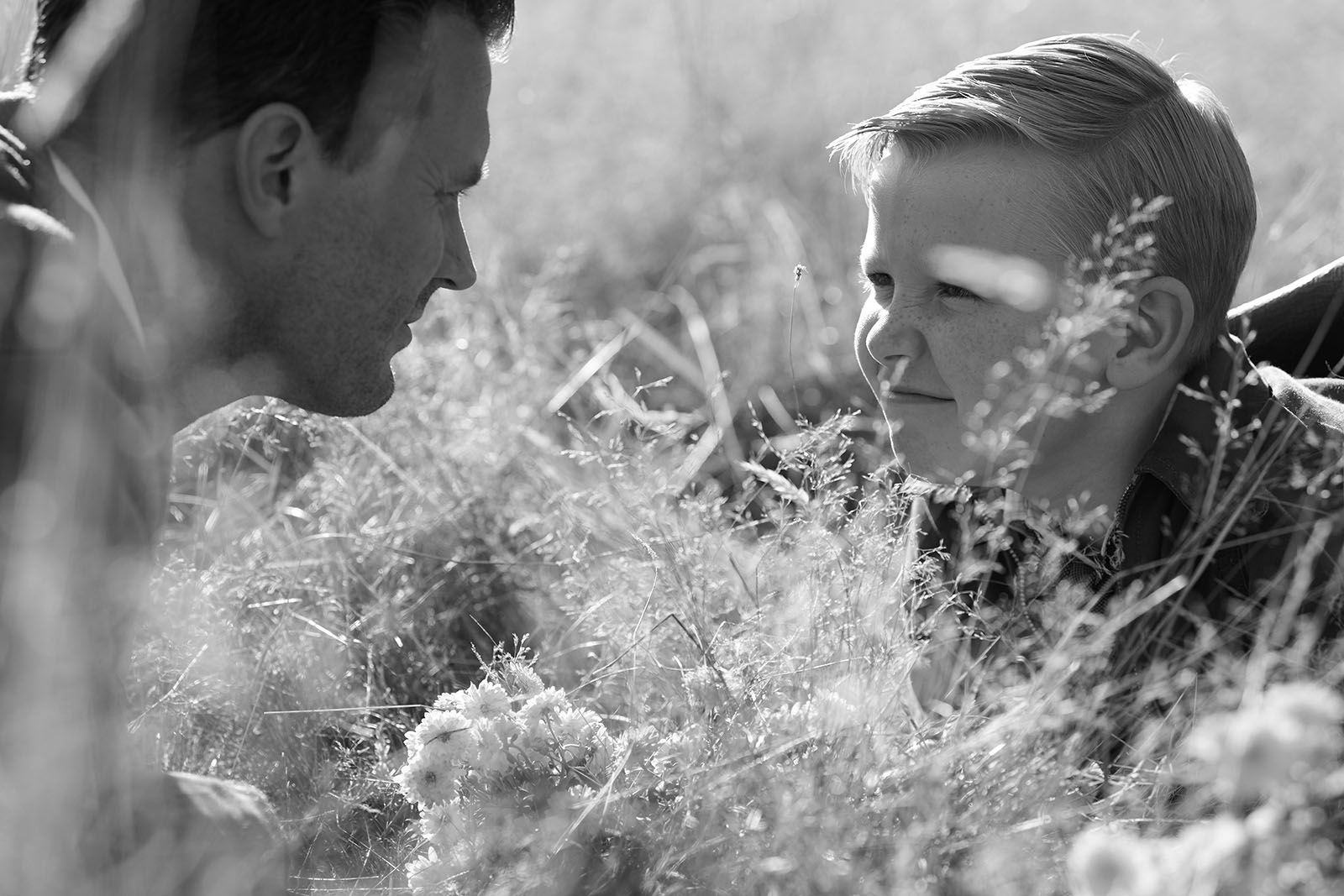
They’ve now left Belfast, and when you left Belfast in 1969 and if you came to America in the fifties or sixties, you didn’t even know if you could come back because it was so expensive to leave. I thought that there was poetry in that, and then Ken really liked it and they’ve stayed the test of time.
When I saw your interview with Joe Walker, I loved the fact that he was talking about the palm trees in Dune because when I saw the film and I saw the palm trees on fire, it reminded me of Belfast. It’s just that audience memory, something that actually pays off later that you just feel.
Several times Ken and I were saying, “We better not shorten too many of the scenes of the little boy going through the fence,” because if you lost them through the body of the film, then it wouldn’t resonate at the end. Both of us were on top of that.
Death on the Nile
HULLFISH: I love talking about Belfast, but we also want to touch on Death on the Nile. At the beginning of that film, Linnet Ridgeway appears on the stairs, and one of the things I thought of, as an editor, is that you had to transition from the diegetic music that is playing in the club to score for an important emotional moment. Talk to me about that. That had to have been very tricky.
NÍ DHONGHAÍLE: It was so much fun. I’m a huge Agatha Christie fan, first and foremost. I was brought up reading the books of Agatha Christie. Gal Gadot looked so beautiful in that sequence for her arrival in slow motion. We were manipulating time to show the majesty of her arrival.
Actually, it was a reciprocal move when Emma Mackey, as Jackie, comes to the wedding in her red dress. So, that was something we were very mindful of even in the cutting room for these two moments, that they were sister moments.
The music is from Sister Rosetta Tharpe, and the character of the film, Salome Otterbourne, is singing using the voice of Sister Rosetta Tharpe. It was actually something that was quite organic to do. The first dance between Simon and Jackie was much longer and Linnet sort of arrived as it was over, and then the new song began.
Whenever I was cutting, I actually had to cut the music as well of the Rosetta Tharpe piece because we cut the song in half, then we cut outside as the car arrives. It was actually a very organic process to just move it to this music that would show you that this is someone very special who’s arriving.
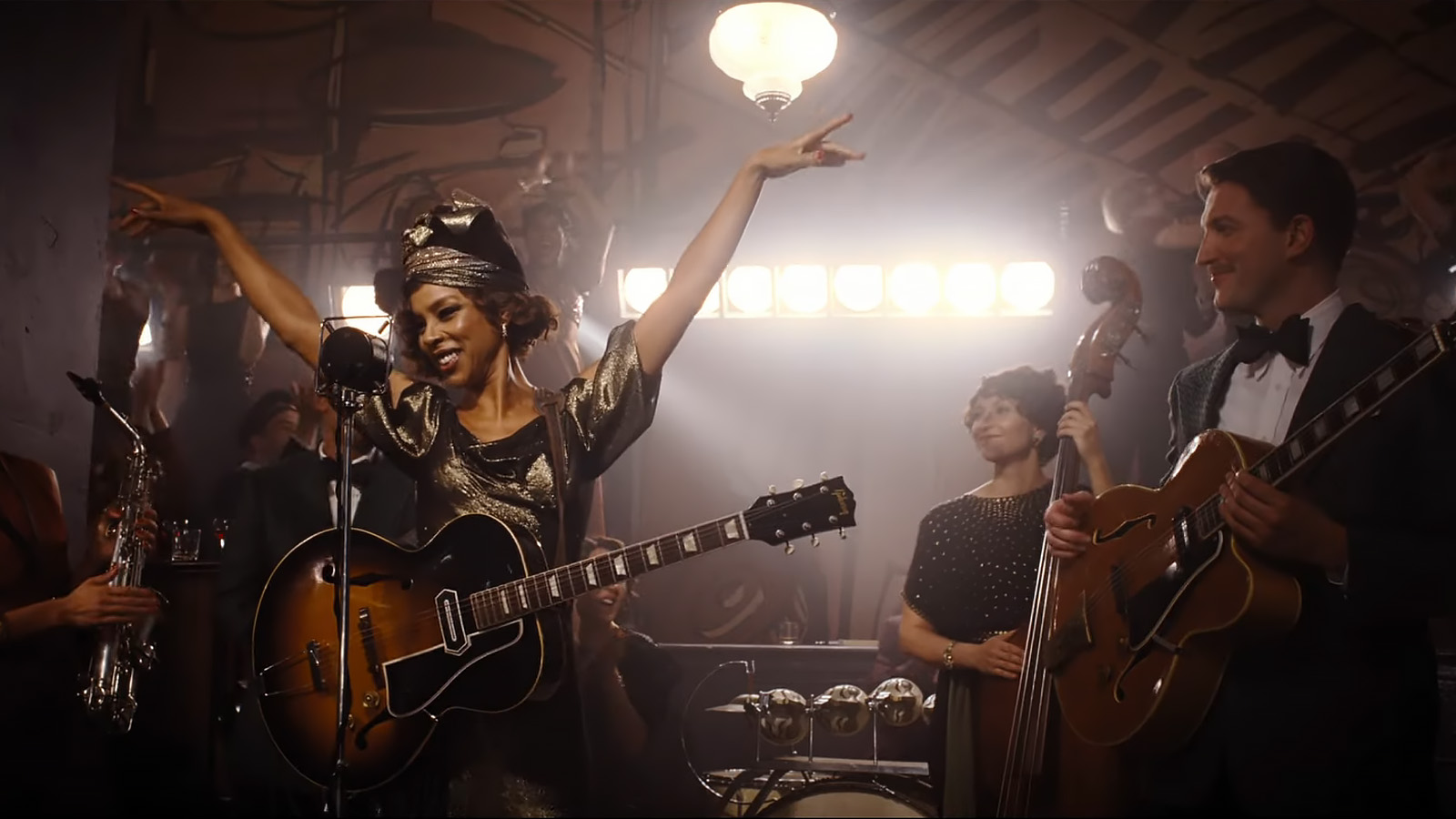
For the temp track, we wanted a little bit of magic. We wanted to capture that golden age of cinema. Then, of course, Patrick Doyle recreated the music. It actually came quite naturally because we cut outside as the car arrives and that gave us enough noise to get us out of one track and into the other at a technical level.
HULLFISH: I love the technical level too, so that always works for me. You’re also trying to set up a lot of story visually without having to get into the weeds of the story. You’re doing a lot of it just with images, and seeing people’s relationship to each other.
NÍ DHONGHAÍLE: That’s right. That was one of the key things that she had to establish was the friendship between Simon and Jackie first of all and this lust. I think when Agatha Christie wrote her novel Death on the Nile, in the introduction she wrote something along the lines of, “There is something of life in this novel.” That stayed with me because I thought the film is about love and what happens when you love too much. The dangers of love.
I was also reading the book about Hitchcock, Analyzing Hitchcock, by Donald Spoto. I was actually reading that while I was editing, and one of the things that he says—because they go through all of Hitchcock’s films and they sort of deconstruct it and they analyze the storytelling from a cinematic point of view, both editorial and directorial—and one of the things that Hitchcock always said was that he loved using a moving camera, a circular camera because it can encapture love and the dangers of excessive love. It’s sort of spinning and dizzy. You get to dizzying heights.
So, I saw Ken’s rushes and I saw this sort of snake-like camera that’s used throughout the film. It’s used for the first dance as we are introduced to the characters. It’s used later as they go around the ship. It’s used after the murder with the interrogations.
There’s even a moment of subjective point of view editorially where Poirot realizes Louise ‘s throat has been cut and he begins to put things together. As he staggers back, they shot that in 60 frames per second all on 65 millimeter film, and I was able to use a sound, one of the tracks from Joker, as he rises up and staggers back and the other characters are actually punching and fighting each other. We sort of go into his point of view as he sees the blood splatter and he begins to deduce what’s happened.
Then, that’s broken by a punch from Russell Brand to Cousin Andrew. So, I think that type of sensuality in the camera work and sensuality in what we tried to do in the cutting was to pay tribute to the big subject of love and what happens when you love too much.
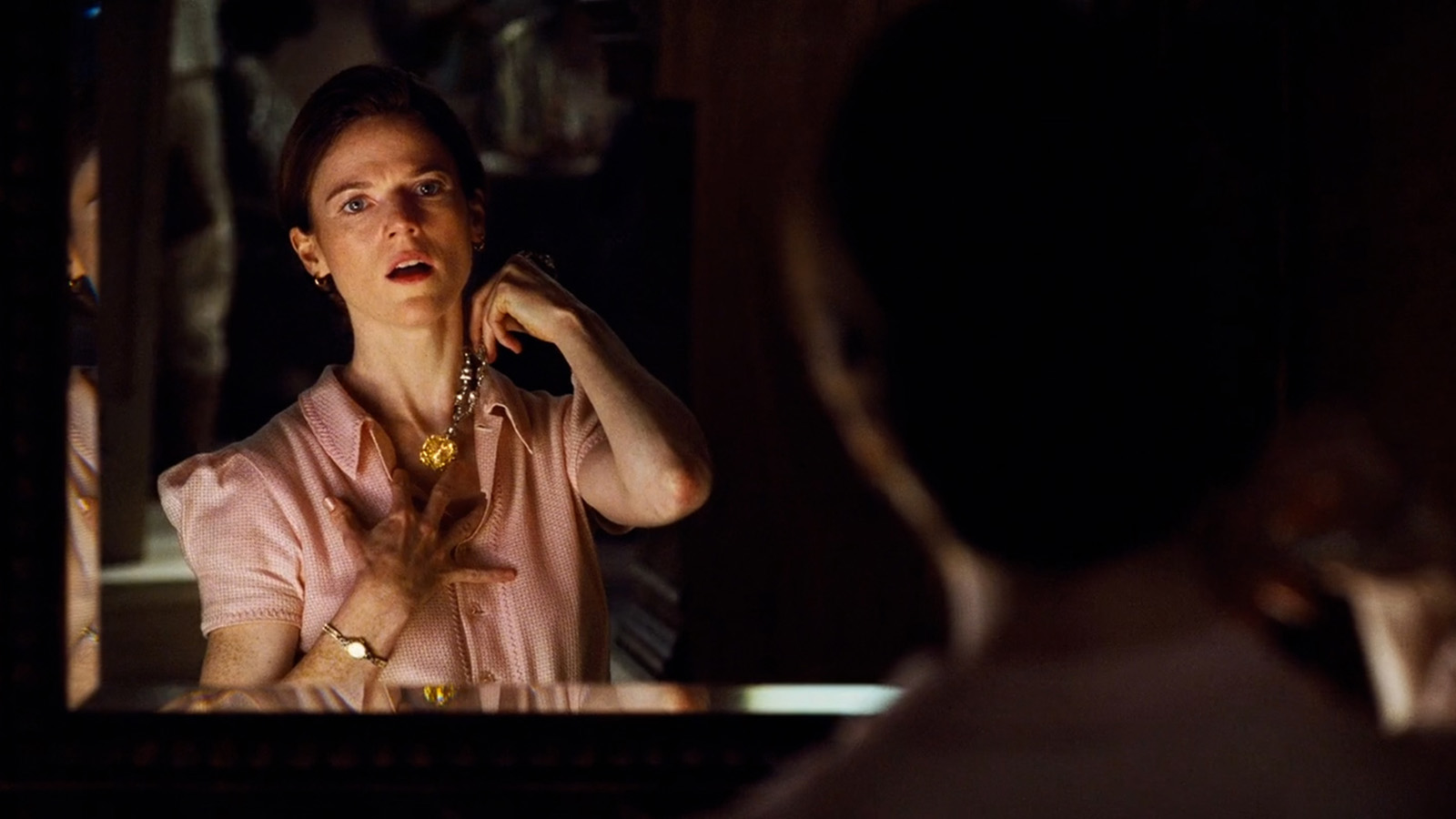
HULLFISH: I would not have thought that you would temp with Joker in that movie [laughs].
NÍ DHONGHAÍLE: I did, and actually before Patrick Doyle came along, I also used a bit of Prisoners as temp. There was a lot of darkness.
HULLFISH: I’ve used Prisoners numerous times.
NÍ DHONGHAÍLE: Incredible score. Although, Patrick Doyle re envisioned it great. But that whole final denouement scene as Poirot was walking was with the great track from Joker because it just captured the darkness and the subjectivity of the character.
Michael Green with this beautiful script and Ken were going into the humanity of Poirot. So, if some of the devices that we tried in Death on the Nile, I think we’ve used in Belfast. It’s like it was a training ground for Death on the Nile.
Some of those tools like using slow motion as a device for pace, using the sound or the absence of sound as a character, they’re actually in Death on the Nile as well as Belfast.
HULLFISH: There are a few beautiful dissolves in this film, and I think most editors are a little bit loath to use a dissolve, but at the right moment, they are the right thing. How do you know it’s time for a dissolve?
NÍ DHONGHAÍLE: I have to give credit to Ken Branagh for the dissolves to the pyramids and for Salome Otterbourne. It just works because Salome finishes her song, and then we cross-dissolved to under the waters of the Nile. Those dissolves really work.
Later, we use the dissolve when we’re leaving in Egypt. Again, the snaking of the Nile morphs into the Thames, and we’re back six months later when Poirot is finding Salome Otterbourne.
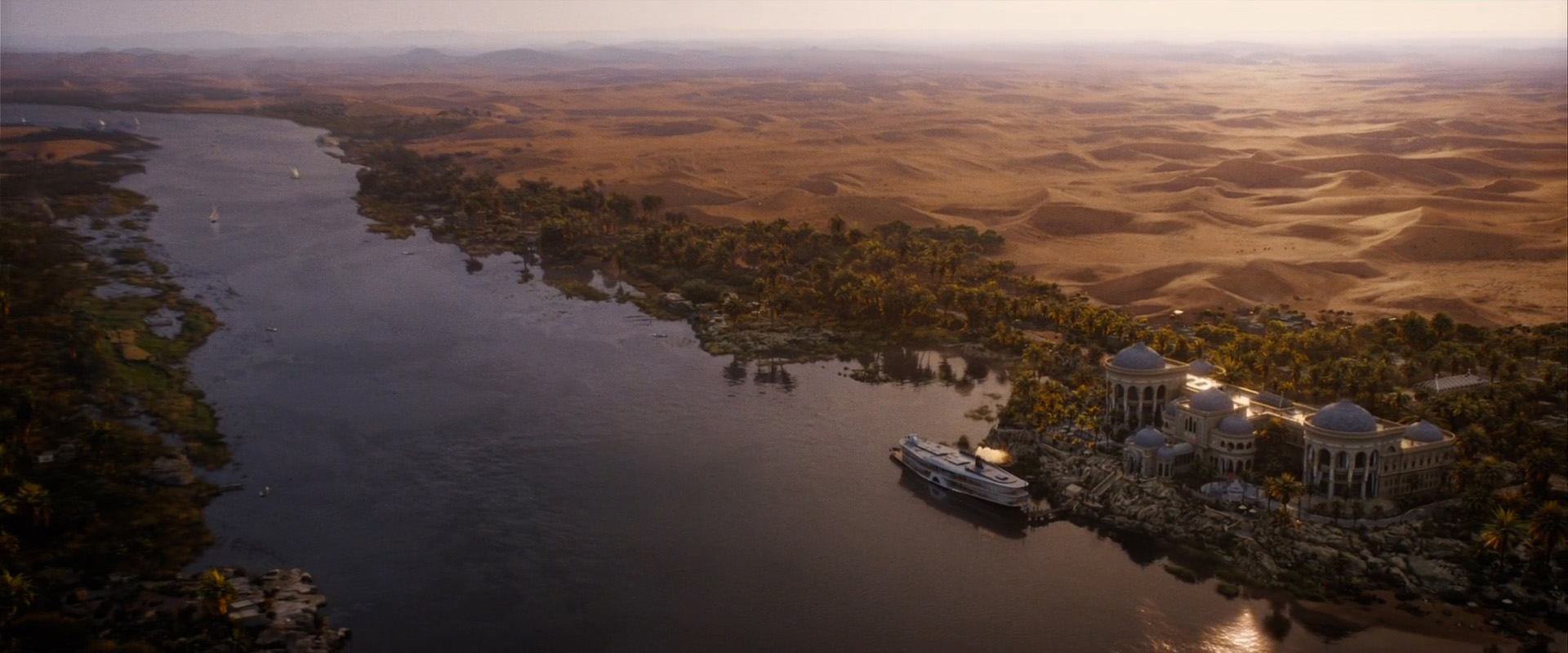
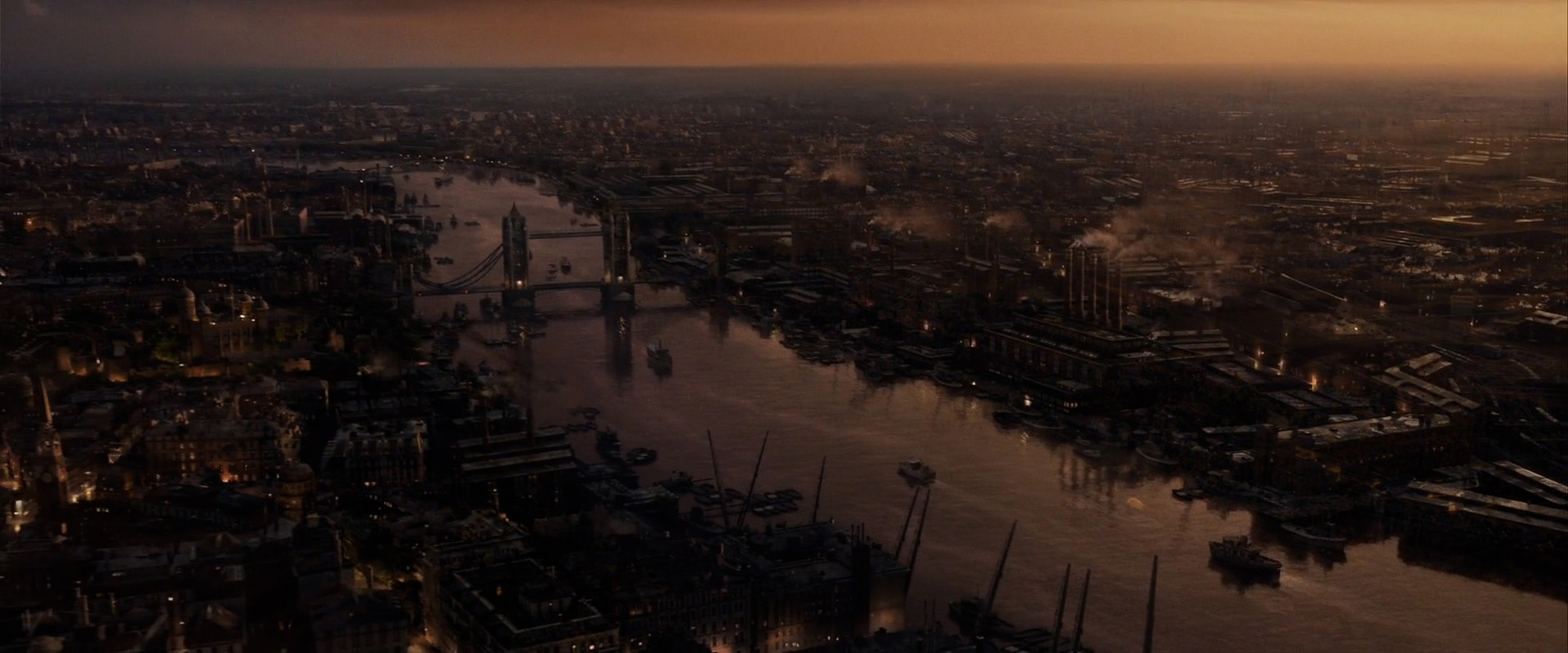
George Murphy, our VFX supervisor, and Claudia Dehmel, our VFX producer, were working with us. What was joyful for me as an editor to cut Death on the Nile with Ken’s office just down the corridor. The assistants were right beside me. The VFX team was right beside me. So, we were a really good team of just communicating with each other.
Also, Matthew Glen was my VFX assistant. As I’m cutting, he was adding ideas, and then George [Murphy] was updating them with the real work that they were doing, which was taking longer to do.
HULLFISH: We have a clip of the arrival of the launch coming to the Karnak. Before that, there’s also a sequence introducing you to the ship. Can you talk about that sequence?
NÍ DHONGHAÍLE: This was a little sequence that we actually created out of a lot of the B camera footage to try and capture the glitz and glamor of the Karnak. Have you ever seen Delicatessen?
HULLFISH: No.
NÍ DHONGHAÍLE: Oh, Delicatessen is a wonderful French film, and they’ve got a very funny sequence with the bed springs. That was sort of my influence for this, just thinking that we needed cups and glasses just to create the “joi de vivre” of this beautiful Karnak journey and get people on board the ship.
It was also to help introduce all the characters because we had the wedding scene. So, we had shortened the first 40 minutes of the film, and the wedding scene was much longer. Then, the sequence was the arrival of the ship at the boat, the Karnak, and Ken very cleverly didn’t let the actors see the Karnak. Jim Clay, our production designer, built it on the set in Longcross, and it was real. I walked on it.
They had the most beautiful murals painted. Everything felt real. There was cut glass and champagne flutes. When the cast arrived they saw it for the first time, a lot of those are fresh reactions, which is fun.
HULLFISH: I love that. I did see a featurette on the building of that and everyone mentioned that to the finest detail that ship felt real.
NÍ DHONGHAÍLE: I actually must have asked everyone if they could keep the ship because I was thinking there should be a museum, like the Harry Potter museum. Can there not be an Agatha Christie museum? But it was so huge that they demolished it. They demolished it in less than 45 minutes. It’s quite a tragedy.
HULLFISH: That’s so sad. It looked so beautiful.
Let’s talk a little bit about this Death on the Nile clip. I think this Euphemia scene has a bunch of subtext in it.
NÍ DHONGHAÍLE: Yes. So, this is the first time for Poirot to meet Bouc’s mother. Annette Bening was such a joy, I never thought I’d be editing a film with her. That was a personal highlight for me because I absolutely adore her work. Tom Bateman as well. They were great.
So, the subtext in this scene that I had to deal with was the fact that the audience does not know that Poirot has been tasked by Euphemia to spy on her son. When we meet Euphemia here, Bouc is introducing his mother to Poirot for what he thinks is the first time.
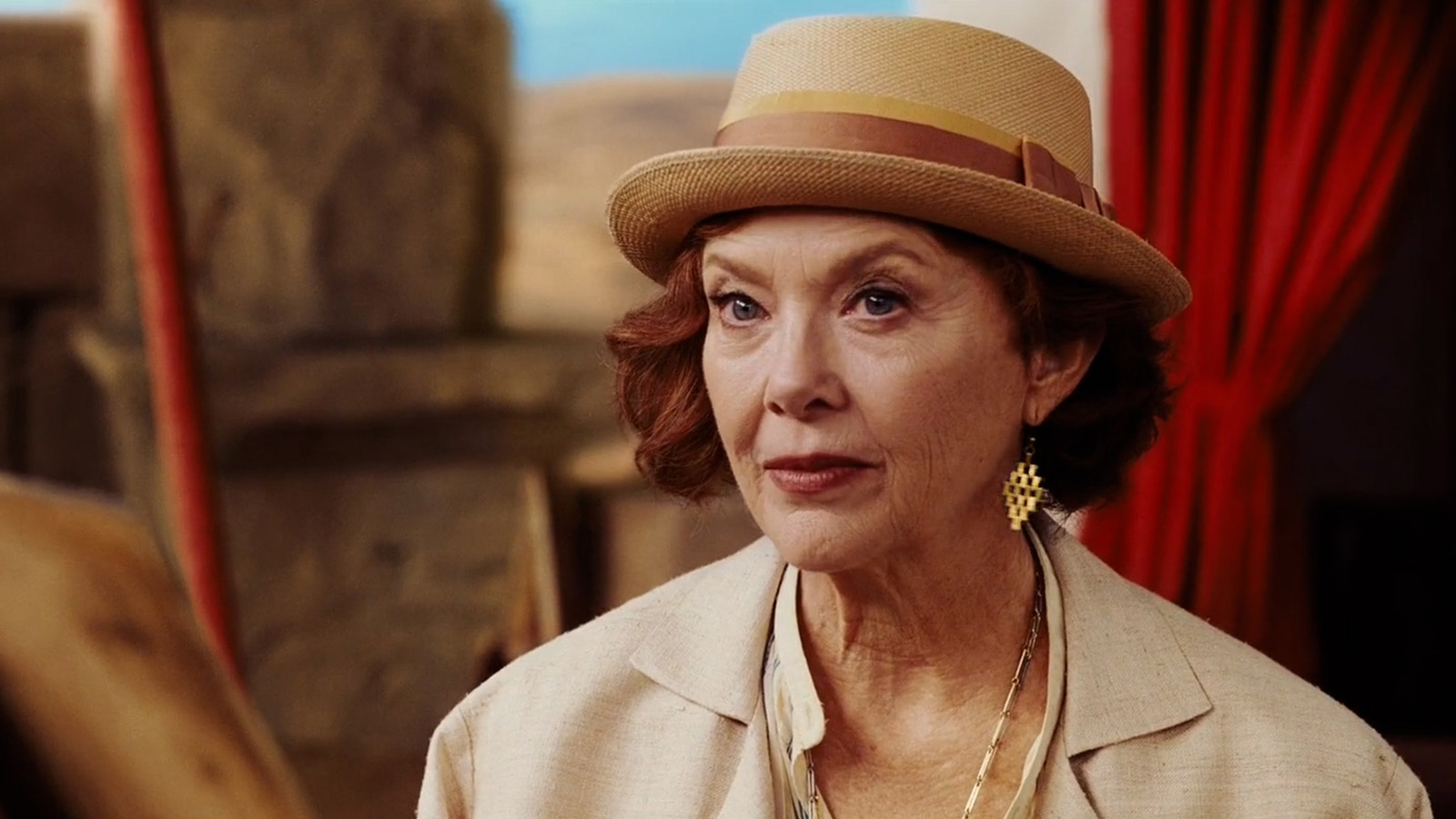
The importance of the glances in this scene means that, as the editor, I know from the script that it’s going to be revealed later in the movie that Euphemia had actually employed Poirot to be in Egypt. So it meant that those glances that they share between each other when Bouc leaves are really important.
An audience watching it for the first time won’t understand those lines, but by the time they come to the end of the movie, and if they were to rewatch the film, then they’ll understand the nuance of the knowingness between Euphemia and Poirot.
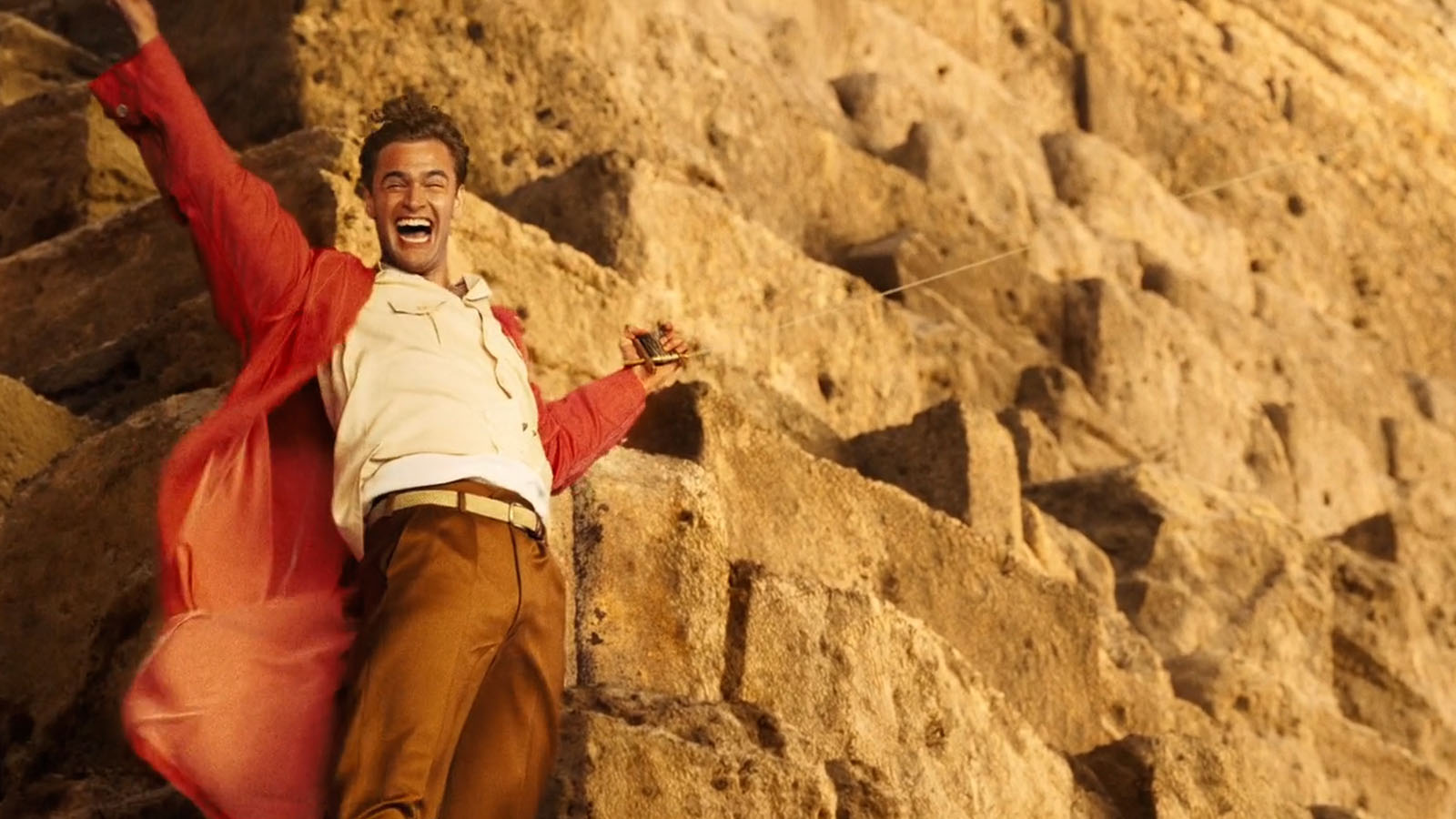
HULLFISH: How can you as an editor enhance the subtext? A lot of the subtext I think is in the performance.
NÍ DHONGHAÍLE: I think the greatest tool I have for subtext is sometimes not to be on the person who is speaking. If the words are resonating with the person who’s listening, even playing the film from their point of view, you can take on details to allow the audience to witness something that is only privy to the audience.
I think that’s where you can get into the subtext so the audience can see something that the other characters in the scene don’t. I think that’s where nuance can come as well.
Then, of course, the sound can always help a little bit. For example, with Belfast, sometimes we had the distance—like an ice cream van in the middle of the riot—to try and tell the story on a subtextual level; in times of war children continue to go to school and continue to buy ice cream. That type of nuance can enrich a film.
HULLFISH: I love the idea of the sound of a train, for example, in the rich neighborhoods and then the train sounding closer in the poor neighborhoods.
I was talking to somebody else about this and I was curious: how do you feel about what we do? Is it a craft? Is it an art? Or is it both?
NÍ DHONGHAÍLE: I think it’s both. I think most editors who I know would say we’re storytellers and filmmakers, first and foremost, whose craft is the art of editing. Once we have that sensibility and recognition from our peers, our collaborators, and directors who work with us, it can help us achieve and raise the level of the film because we’re all working on it together.
I think most editors who I know would say we’re storytellers and filmmakers, first and foremost.
I definitely think it’s a craft. There’s a skill involved, but the heart and the empathy is the thing that brings the poetry to the way the story is told.
I was thinking that as an editor or as a filmmaker, we continue to learn how best to tell a story by watching what our peers are doing as well or watching the films of old.
HULLFISH: Let’s talk about another scene.
NÍ DHONGHAÍLE: I would love to talk about the scene of the circular camera in the final interrogation of Bouc.
What was really exciting about that is the camera’s constantly moving. Ken had the camera’s moving in one direction and one in the other direction. So, they were like 180-degree sister cameras.
As an editor, I could actually watch everything and pick out those best moments, but sometimes the best performances may have been on a camera that didn’t necessarily cut very elegantly to the other side, so then I had to be creative in finding back of head shots or moments with Poirot profile while just keeping the sensuality of the camera move and the elegance of the camera move.
But in the truth of the interrogation, Poirot was really angry that Bouc has lied to him. So, then there were moments where I could actually cut and break the elegance of the editing to something more harsh, which reflects Poirot’s point of view.
Then, when you do a cut like that, it sort of feels like a jump cut, but it allows the audience to keep awake and lean in to watch what’s going on. It reveals emotion and it’s against all the laws of elegant editing, but it has a truthfulness, which I think the audience then respects. There’s no point in having an elegant edit that doesn’t reveal the truth of the psychology for the characters.
Don’t worry, the guild won’t throw you out for that dissolve.
HULLFISH: William Goldenberg in another interview said that he cut for Dede Allen, who would say, “This is breaking an editing rule,” and he said she would just laugh.
NÍ DHONGHAÍLE: Yeah. All editing rules have been broken by the best films. I think Ken said a few times on Death on the Nile, ” Oh, don’t worry. You won’t be thrown out of the guild for doing this.” We were jump-cutting through the dissolves. That was Ken’s idea, and he said, “Don’t worry, the guild won’t throw you out for that dissolve.”
HULLFISH: Let’s talk about another scene where the launch arrives at the Karnak with the guests for the wedding party.
NÍ DHONGHAÍLE: One of the things that we had to do here, because we’re playing with the fact that Linnet is paranoid and she thinks that she’s in danger, so when Simon pops the champagne cork, we deliberately use a sound effect that sounded like a bullet.
There’s a flurry of cuts there where you see Simon, you see her jump, and you see Poirot watch. That flurry of cuts, to me, is a good example of us playing into: is Linnet paranoid? Is she in danger? Even the popping of a champagne cork sounds like a bullet. It’s because we have actually used a gunshot effect under there. So again, allowing the audience into her paranoia.
HULLFISH: You’ve mentioned sound design as being very important to you and building a world. One of the places where I noticed it was on the Karnak when you finally realized there was some danger to Linnet Ridgeway, and she’s saying that she doesn’t trust the people on the ship. There’s some great sound design of dogs barking. Talk to me a little bit about using those things to up the tension.
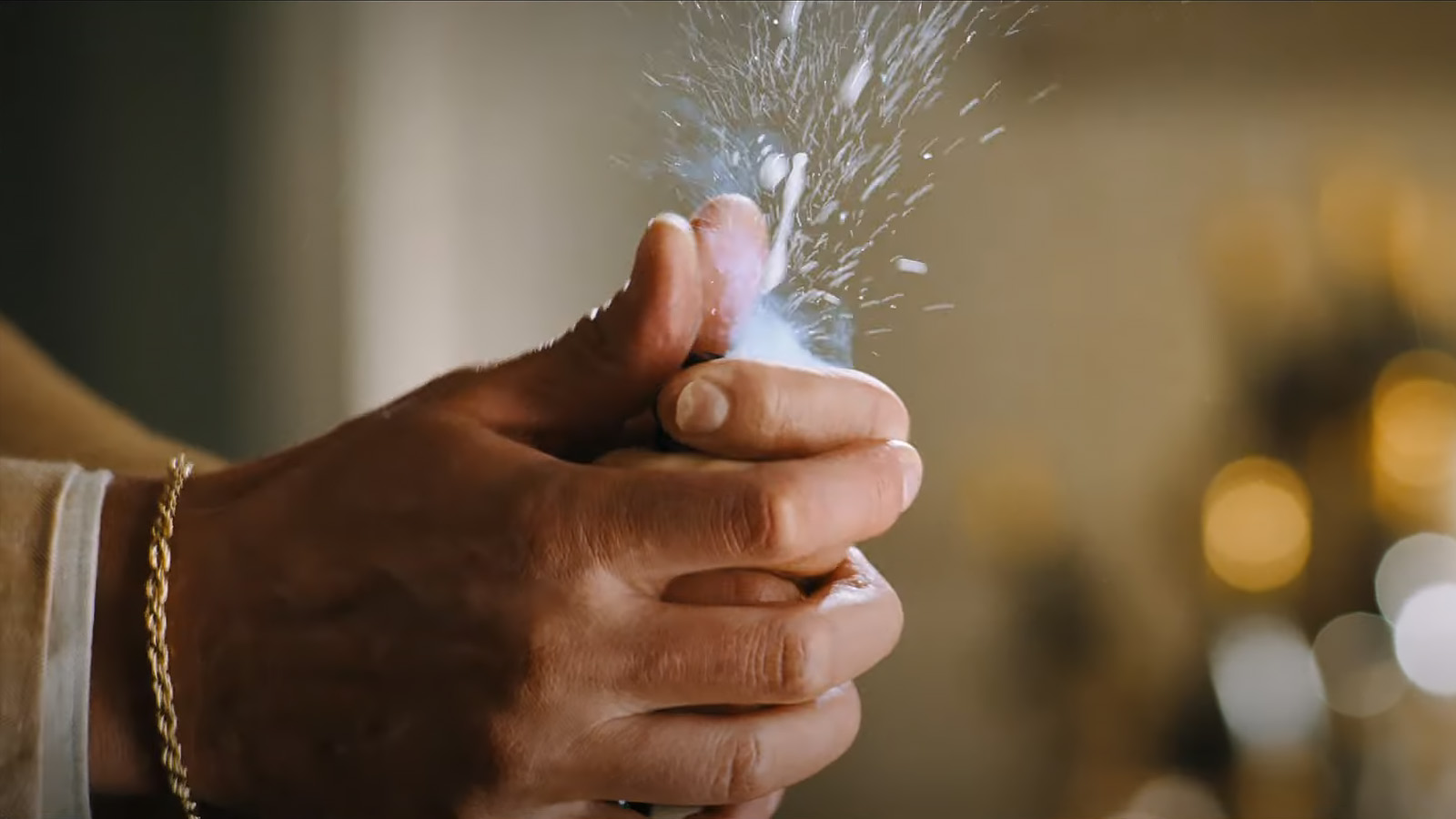
NÍ DHONGHAÍLE: I think because it is a great big sweeping story, we were feeling that there were moments where nature could even be turning a bit like Macbeth, nature begins to change and turn. Things like the dogs barking, they went out to shoot in Egypt and they shot loads of beautiful footage of all of the real vistas from the Nile. Those dogs were actually wild dogs. If you got on the wrong end of them, you would be savaged.
Also, Ken and George Murphy, our VFX supervisor, had devised things like the crocodile eating the bird. We were trying to just plant at times that nature is turning. For example, the opening sequence with World War I, we use these sounds of farms and explosions as they’re running across the field. When he comes to England, they sort of morph into thunder.
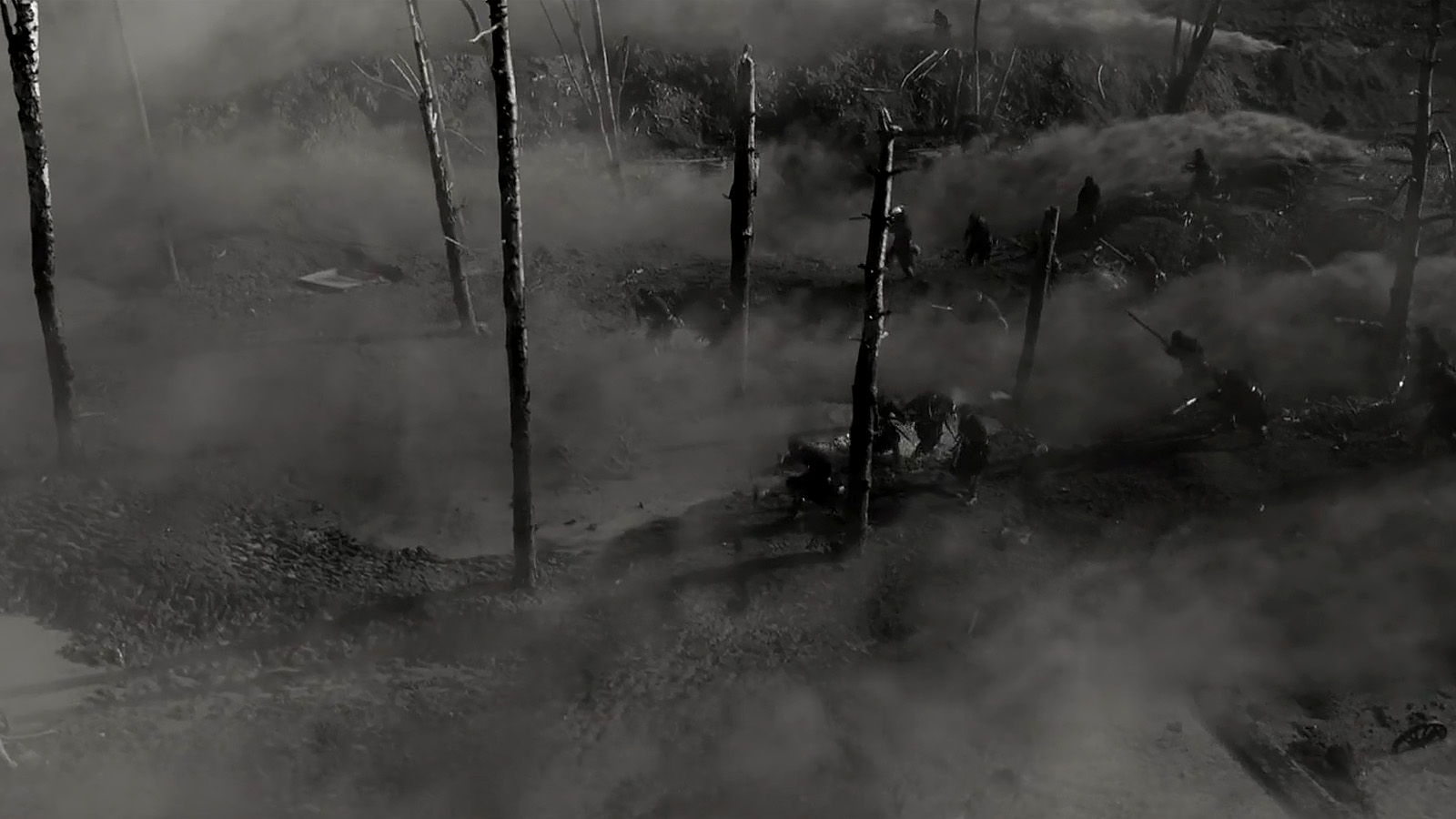
At the end of the film, when we returned to the club, I just put in this distant thunder rumble. Again, it was sort of like an audience memory to pertain back to the prologue to tell the audience that this is the love story and maybe Poirot will have a chance to love and live again.
In the body of the film, he says that he’s turned into this thing that doesn’t love. Letitia Wright is brilliant. In her scene, I loved when she was saying to him, “I don’t want you to live. I want you to stay as a detective and I want you to solve this murder.”
HULLFISH: We talked a little bit about the glances with Poirot, but there were glances with everybody. Talk to me about those moments as storytelling devices. Also, when you’re watching dailies, talk to me about seeing the right moment, that moment when you realize a character is thinking something.
If there is something that resonates with me, as with any editor, you can be sure that this will resonate with the audience at home.
NÍ DHONGHAÍLE: So whenever I’m working—even on a big film like Death on the Nile with a huge amount of rushes—I do try and watch everything. Obviously, if there are four cameras, maybe I have to skim cameras three and four, but I do try and watch everything for exactly that reason. I pick up those glances. If there is something that resonates with me, as with any editor, you can be sure that this will resonate with the audience at home because we’re the first audience.
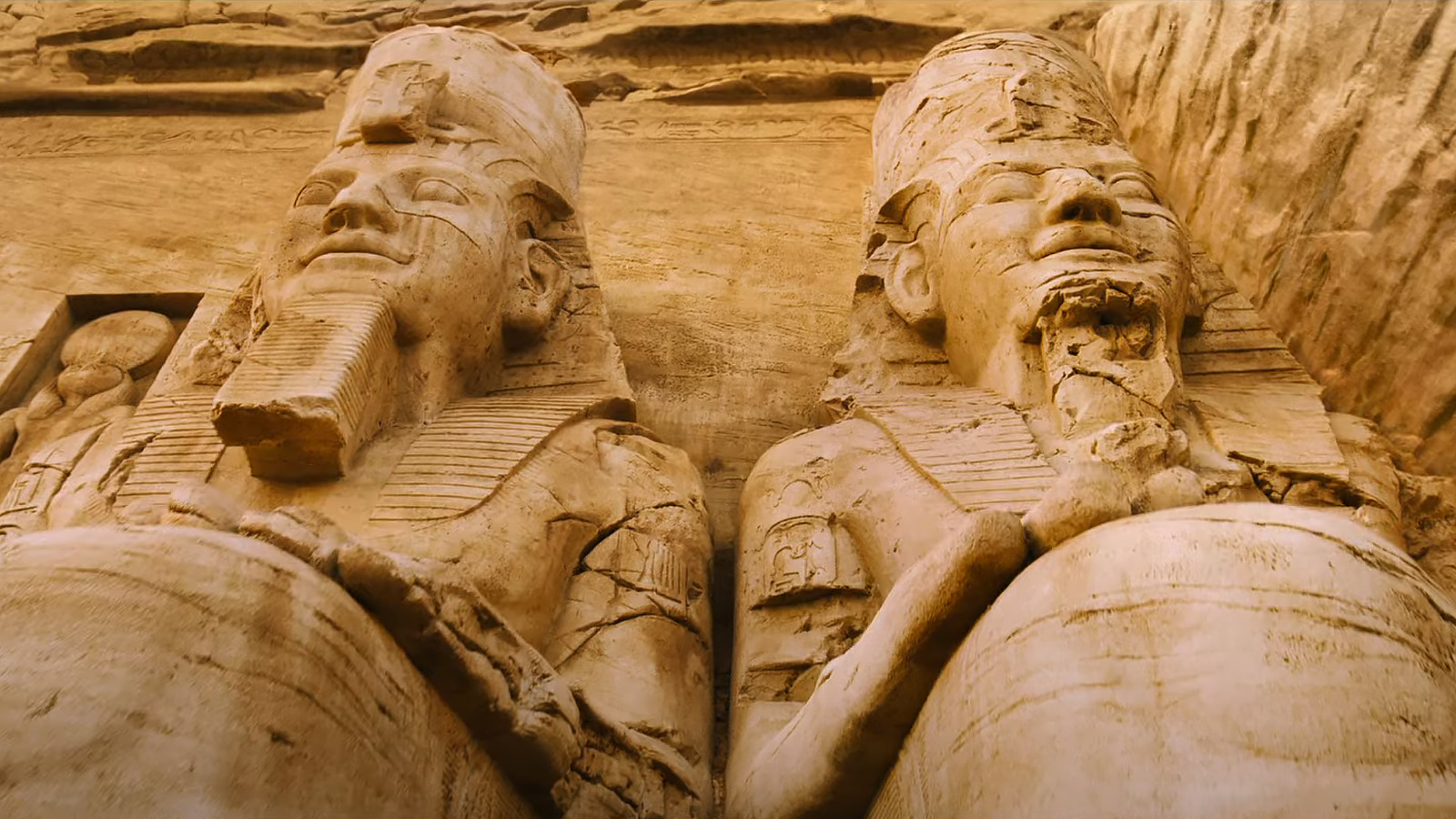
For example, little things like when the rock was pushed, finding those glances was really important, so that each character had a moment to turn and give a layer of suspicion that it could have been them.
Then, we added in the sound design of footsteps running, words half-spoken, and things being said that you couldn’t quite capture. All of that pays off, I think, in a film like this where you would like the audience to lean in and try and solve the clues and see who could guess who did it.
Hopefully, they’ll enjoy the ride because it’s a fun film. It’s a film to embrace as a thriller from the Agatha Christie vein.
HULLFISH: It’s also just so lush. It’s gorgeous to watch for sure.
NÍ DHONGHAÍLE: What excited me about it as well, by the way, was having these two great strong female leads, Emma Mackey and Gal Gadot. When we were cutting, if we needed additional dialogue, as a woman I was keeping an eye out that we made sure that we keep the power with the women.
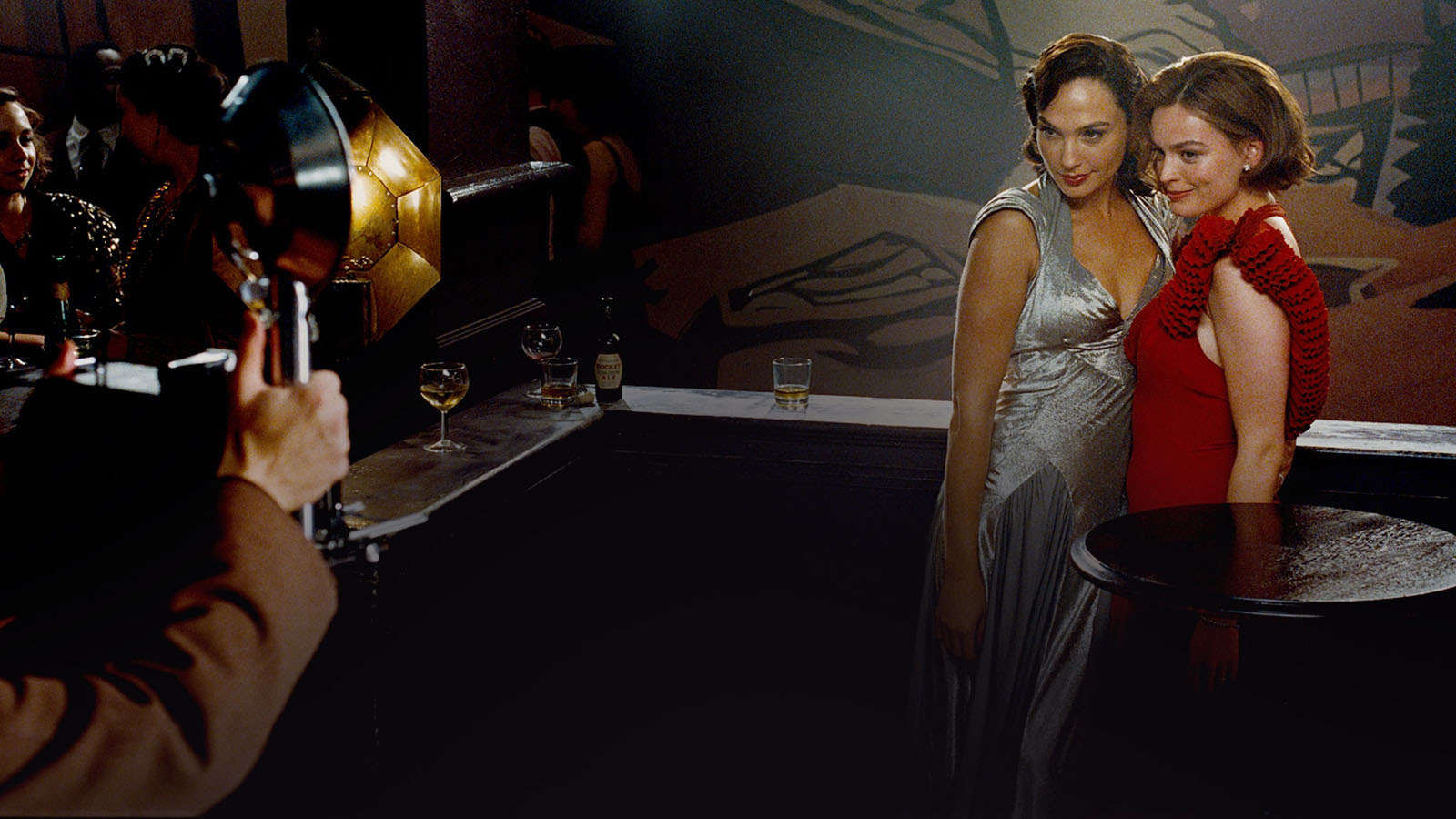
If there were extra lines written, for example, that the voice wasn’t given to the men, which could be an easy thing to happen because, of course, Bouc is very powerful. It just meant that we were always watching to make sure that if the women were in charge—like Linnet—that she could be proactive and do things and not have someone tell her to do it. That was something else that we did to try and keep the strength of those women.
HULLFISH: Can you give me an example of how you might have found a line that went to a man should have gone to a woman?
NÍ DHONGHAÍLE: For example, when the rock was pushed, we had Gal Gadot saying the line, “Somebody is trying to kill me. Someone pushed the rock.” Then, we also had a line in ADR with Armie Hammer saying, “Somebody did that on purpose. They pushed the rock.”
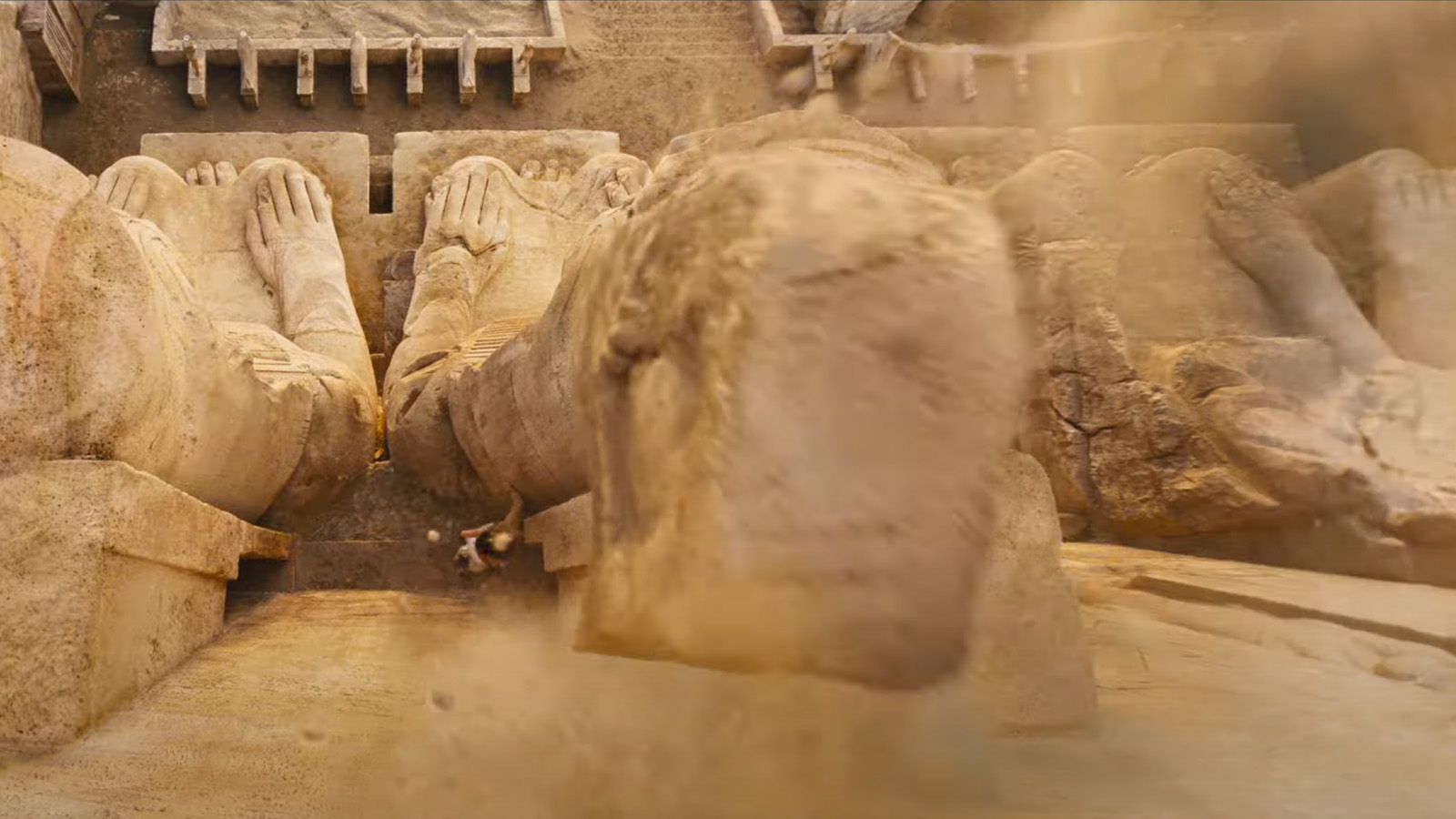
By having him say it, it meant that the person who registered what had happened became him rather than her. So, then we took that out of the mix and we kept it as we had in the cutting copy, which was Linnet was the one saying, “Hang on, somebody did that on purpose.” It kept her as the proactive person.
HULLFISH: The women being those strong characters, that’s something that’s inherent in the script, right?
NÍ DHONGHAÍLE: Right. That was Michael Green and Ken. The fact that they cast such brilliant women was a joy. They brought so much. One of the things that I think Ken does as director, which is great, is that he gets you to listen and be in the moment. Even if he has to improvise a bit to just keep it fresh, and the cast just rose to that challenge. They were incredible.
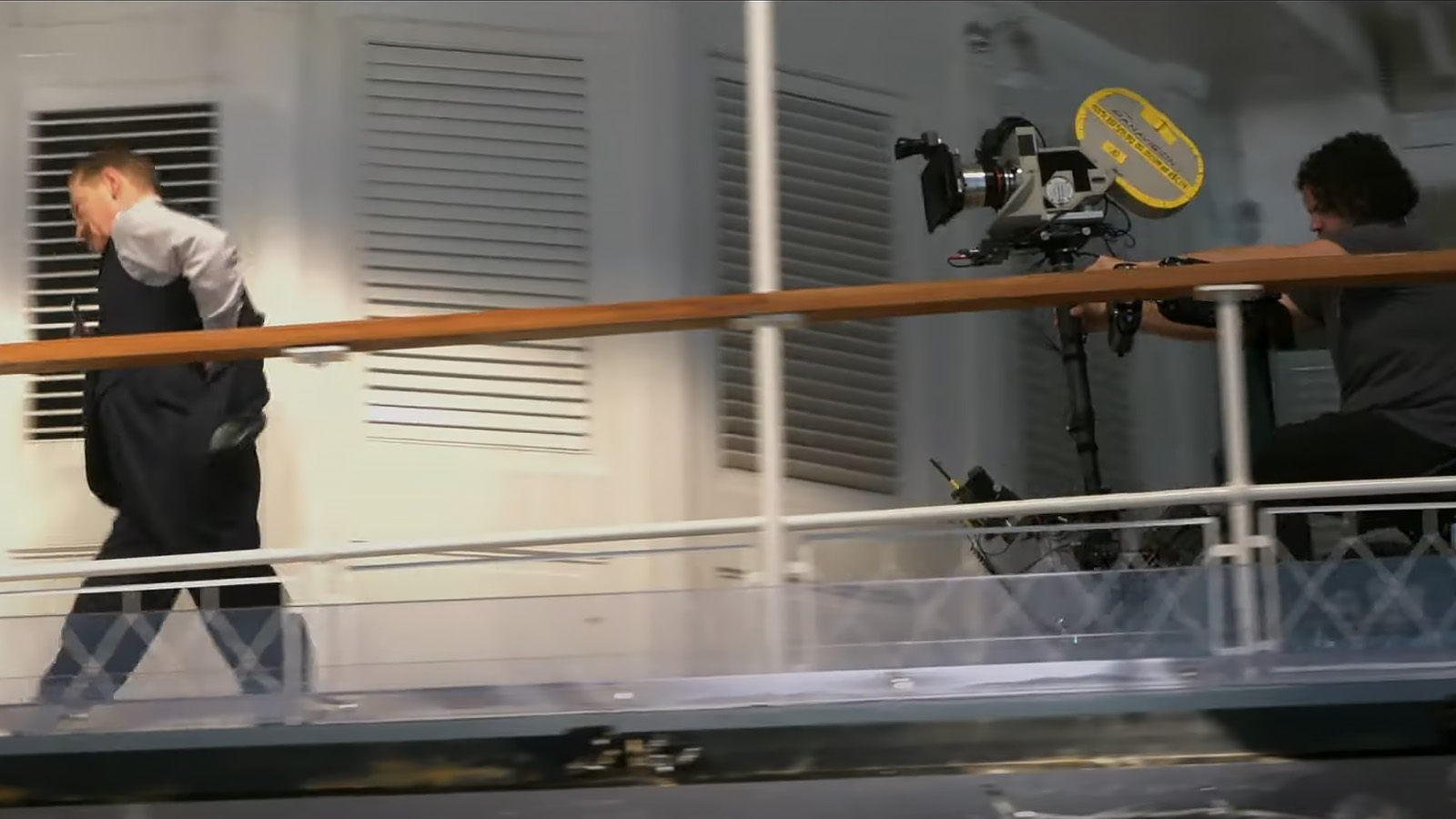
HULLFISH: There’s a discussion about Rosalie on the back of the Karnak that’s shot through two wicker chairs. Did you have other coverage, and what was the reason for choosing that angle through the chairs for that scene?
NÍ DHONGHAÍLE: We had other coverage from the front of the boat, so the 180 degrees opposite, but it was a wide shot. Then, the only closeup shots we had on the other side, 180 degrees through the wicker chairs. We shortened the scene because actually it became quite long through the wicker chairs, but that was a device that Ken was trying to get of always trying to keep that unease and make you lean into it more.

We could have held it on the other side, but as I say, it was too wide, and you needed it to feel intimate because it’s when Bouc is confessing that he’s in love with Rosalie and his mom won’t let him because she is American and not from the upper-class English stock. It was something really important for them to shoot, but that was as shot.
HULLFISH: You mentioned the pacing and the revelation of the story. Talk to me about that fine tightrope of wanting the audience to be trying to figure it out but not let the audience get ahead of us.
NÍ DHONGHAÍLE: Not letting the audience get ahead is the biggest thing I think for a thriller because if the audience is ahead, it’s a frustration to watch. You’re done.
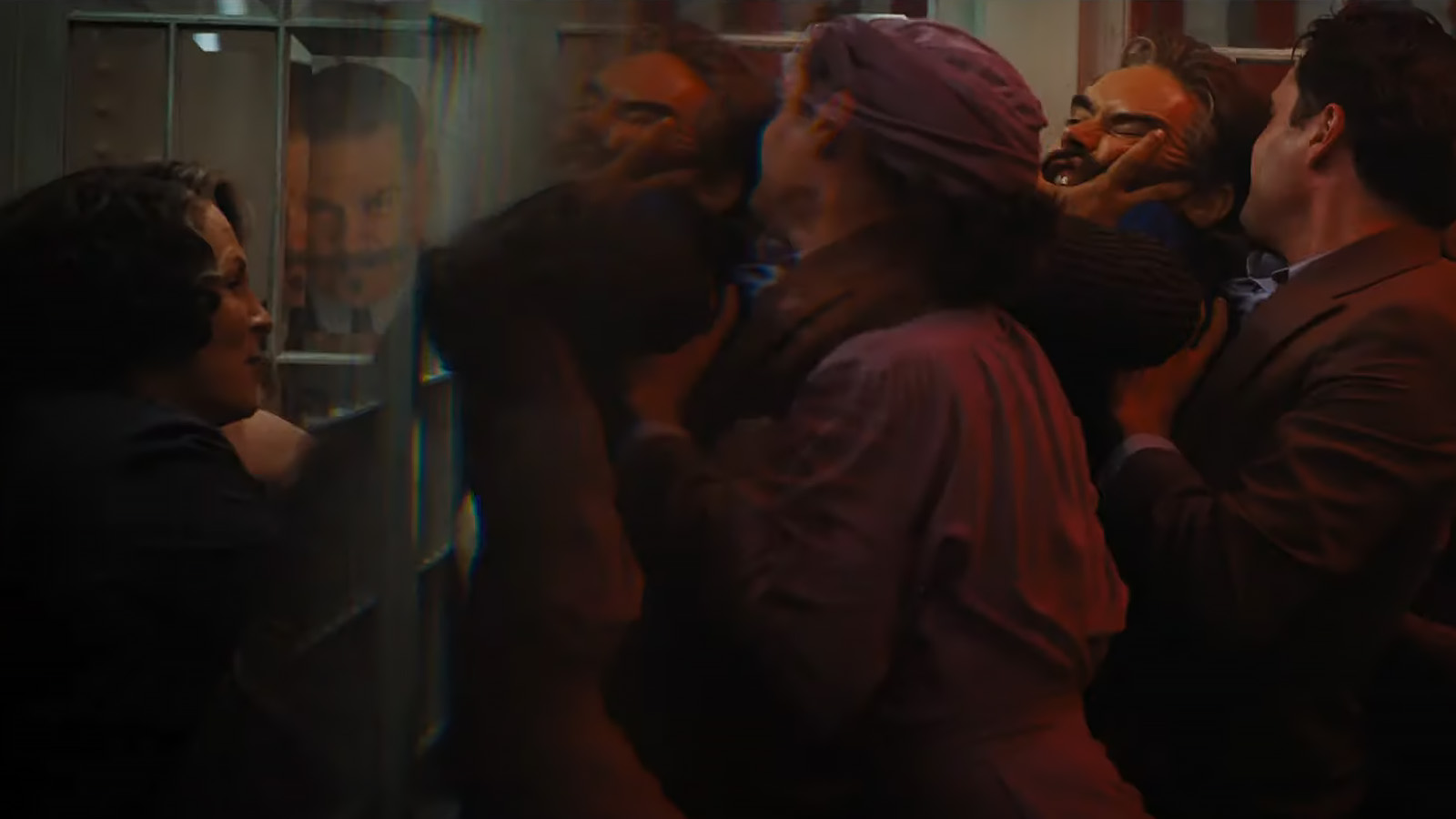
I think once the murder happens, we go at quite a pace actually through the second half of the film. It was on that level of just trying to keep all these balls in the air, because the nature of Agatha Christie has Poirot accusing everyone.
Then, by the end of each interview, he has either ruled them out or he has got less suspicion. So, the shaping of that meant that you just had to keep the energy up and give more sorts of information that could pay off later.
The one that I most enjoyed is the scene when they found Louisa’s body and we went into Poirot’s subjectivity, or whenever Bouc was being interviewed and the camera, again, is going around them. That was a joy as an editor to edit with because sometimes the camera was going the wrong way around, but actually, there was an energy to that because it could make you feel discombobulated.
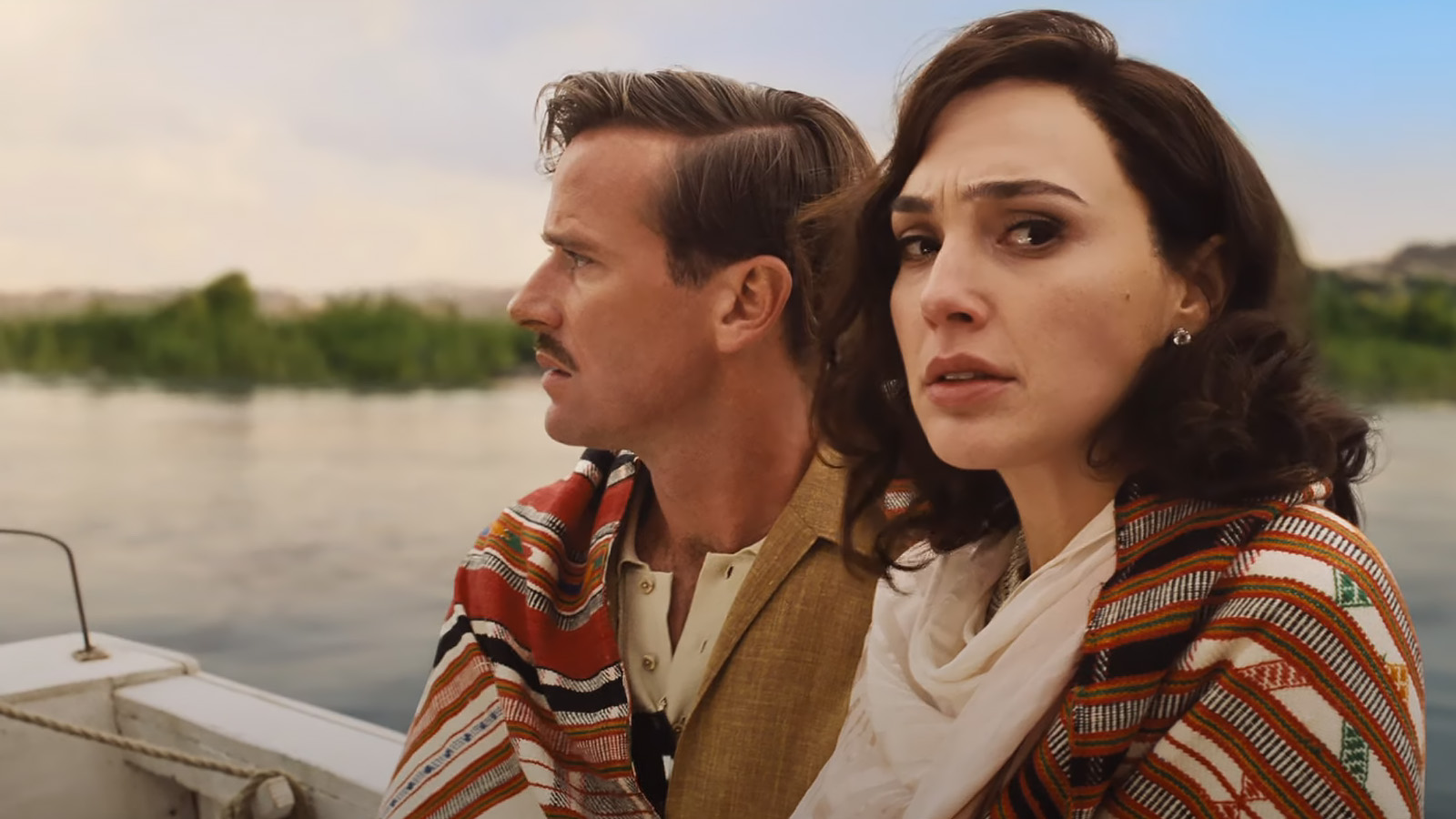
That was quite good for the audience as well to know what is true and untrue because also in Agatha Christie stories, people will lie. They’ll tell you something, and as a storyteller, you have to tell it as if it’s true because they’ve told it to Poirot as if it’s true, and then it’s revealed to be a lie. That’s a juggle that as filmmakers, we have to make sure that the audience doesn’t feel cheated.
It’s that balance. It’s something that was worked out in the script, but it’s something that obviously in the editing, we did have to add in a few extra nuggets to keep the audience involved such as when Jackie comes to the boat it would look like the boat was just for private hire.
We had to add in a few little lines saying that the crew leaves at midnight in order to rule them out with the murder. There are things like that that we had to sprinkle in through ADR.
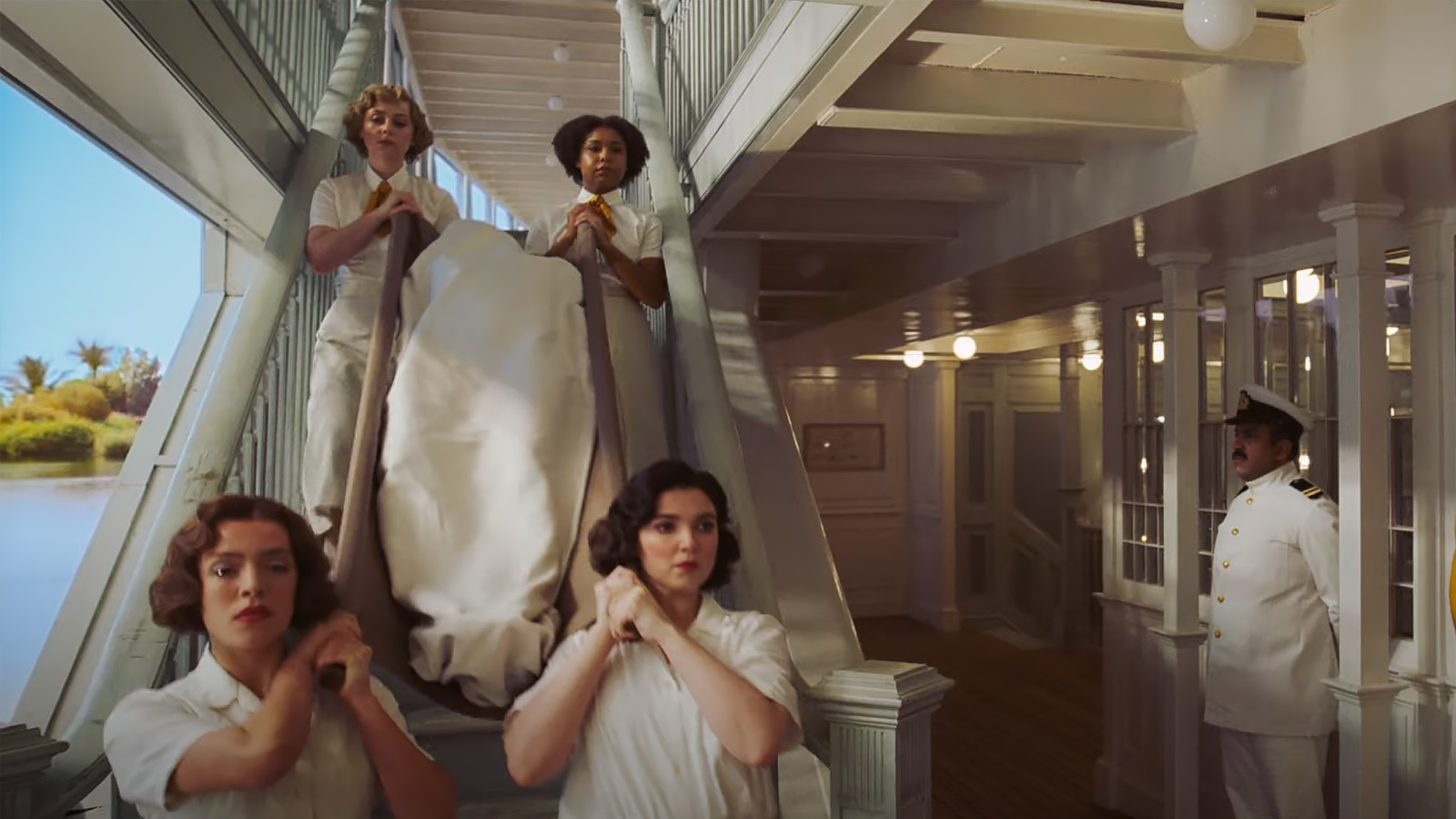
HULLFISH: Talk to me about the big moment, the reveal. Poirot has always got the famous reveal where everyone’s there and someone in the room has done it. Talk to me about that edit and try to construct it.
NÍ DHONGHAÍLE: That was a sort of opus. It was incredible. We shot it the first time with all the characters present. The film, because it was shot on 65mm, there was a technical issue with one of the cameras and it went at a slightly different rate on Poirot’s shots. So the main cast were perfect, but Ken’s footage had to be reshot. I must have cut that scene so many different times because we reshot it.
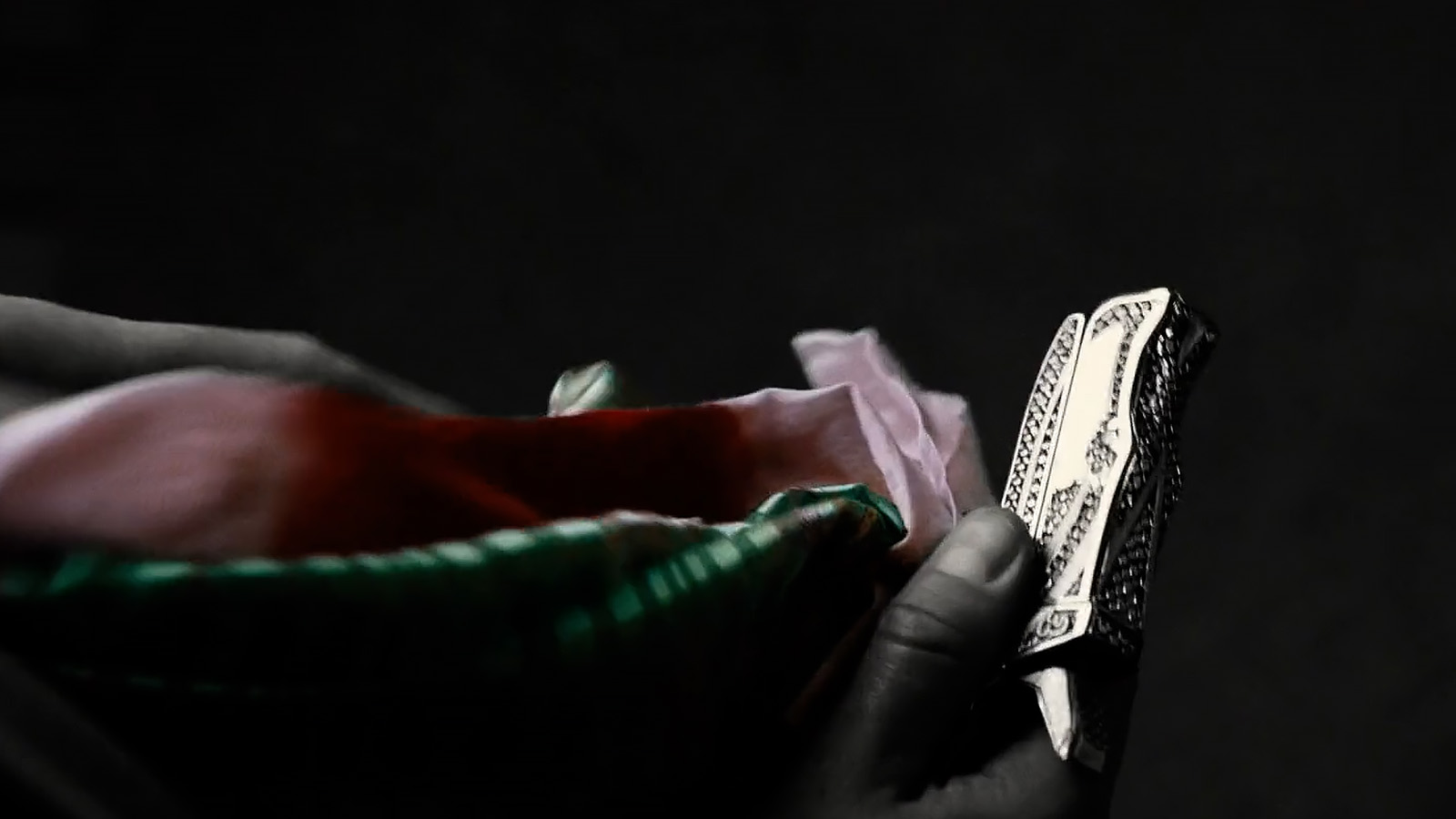
It was a great, fun scene to shoot because you’ve all the characters present, you’ve got Poirot working it out, and the way he was filmed makes him look really brilliant in it. Then, just finding those moments of illustrating what he’s saying so that if he is saying that Cousin Andrew pushed the rock, we could cut to the flashback.
I think there was a bit of magic in that and we just cut through it. We didn’t linger. We didn’t want to be sentimental or overstay our welcome, but we had to touch on the fact that Bouc is dead because Tom Bateman’s character was so strong and such a great friend of Poirot. You needed to reach that point where Poirot is consumed by grief and the mother is there accusing him of not having done enough.
There were a lot of layers I think in that scene, but I really enjoyed it because there was a wealth of footage with a flurry of flashbacks. There are a few shots from the original 65mm that had this frame rate problem that we were able to keep, because when someone does a performance like that, it’s so magnificent that when you have to do it again, you either strike gold again or you sort of feel like maybe it’s hitting different marks in a different way and different tone.
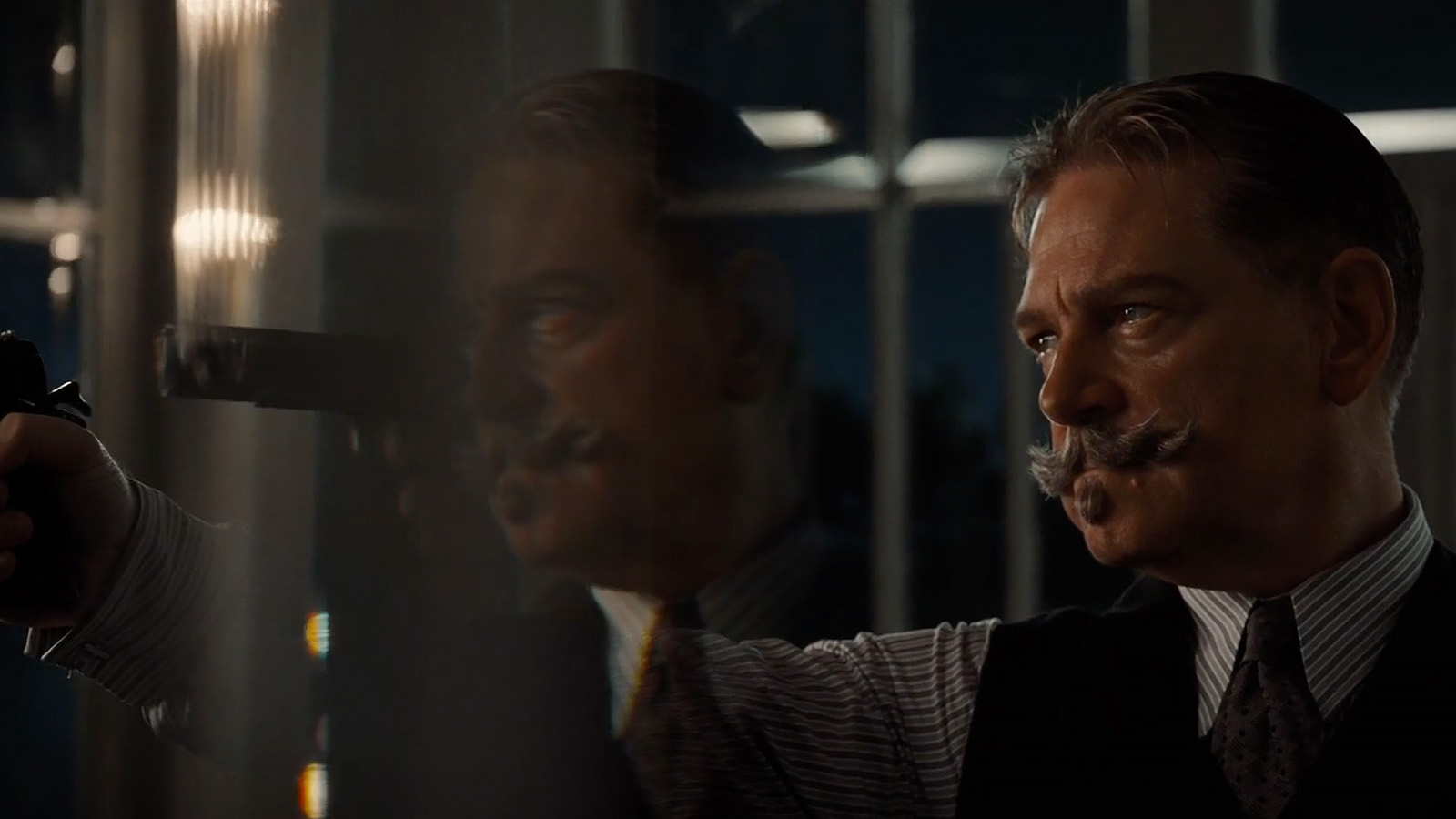
HULLFISH: There’s also so much else to juggle. You’ve also got to try to keep people alive, plus the flashbacks, and you’ve got this magnificent performance by Kenneth.
NÍ DHONGHAÍLE: Also, when the cameras are moving, it’s a challenge for any editor because it means that the cameras always move at a different point. So, if I’m cutting between two setups, your line might be brilliant on one camera, but the camera is here, and if I want to cut to another angle, the camera’s at the back of your head or it’s somewhere else.
So there was a juggle in that of just cheating sync so that you won’t know that we’ve got around something, but keeping the best of all the performances, Sometimes when you cut scenes like that, you just do it. It’s interesting when you look back you have to analyze what you did, but you are reacting to those performances of those camera angles.
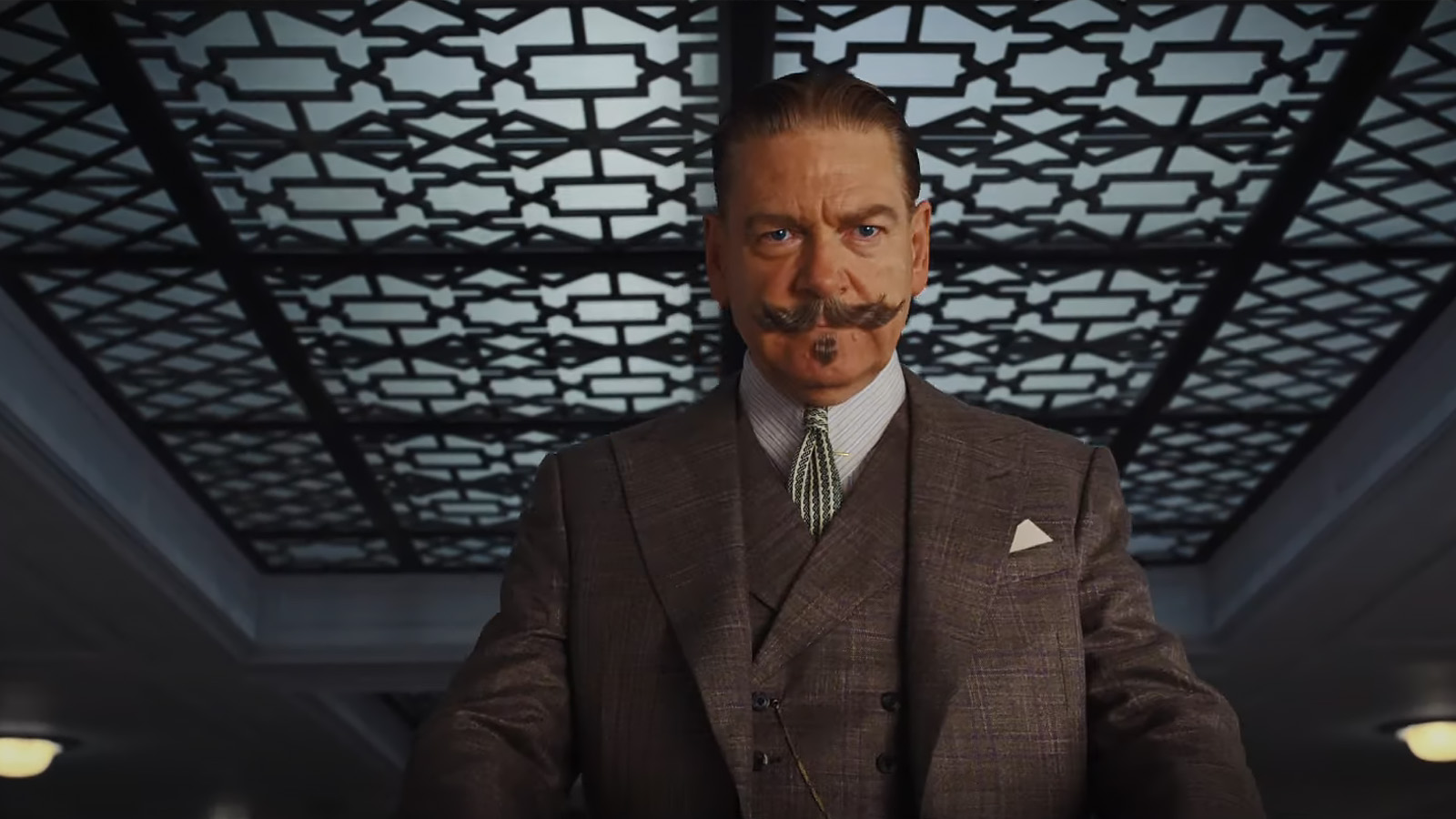
HULLFISH: You mentioned being a big Agatha Christie fan, and so you obviously had read this novel before the movie. You mentioned that there were lines in the movie that were straight from the novel. Can you talk about trying to preserve them?
NÍ DHONGHAÍLE: There was a beautiful line in the novel when Jackie confides with Poirot and she says, “I want to see her smile fade and lines crack across her forehead.” As we were shortening the scene, it looked like that line might fall and myself and Ken had a conversation saying, “We should preserve that line because it’s one of the direct references to the actual novel.” For anyone who knows the novel or any Agatha Christie fans, it’s really nice to hear her words spoken. So, there were a few of those things that we protected.
HULLFISH: I had not read Dune before I saw the movie, and then when I read the novel, it was cool that I recognized actual lines from the film were faithfully used.
DHONGHAÍLE: It does mean something and also because invariably, we all have to shorten and refine, and that’s part of our gift as editors. We find ways of doing it in a way that can keep the truth of the script or the truth of the performance.
For me, it was preserving some of those lines that I just thought Michael Green and Ken had taken the time to weave them into the script, and if we were going to shorten something, there were other areas that I could shorten or suggest in order to retain that line.
HULLFISH: You mentioned some muses, the movie Delicatessen, or a book that you read by Donald Spoto. Are there other things when you’re editing a film that you think are muses for you?
DHONGHAÍLE: I think there are; it depends on the type of film that I’m doing but say, when I was doing something like Three Girls, which is about the Rochdale abuse scandal, I was dipping into Curb Your Enthusiasm for something completely different just to give me sanity.
At the same time, I remember while I’m watching Curb, I might remember something that I think of that could actually work because it’s a way of washing your brain, and for Death on the Nile, reading the Hitchcock book definitely helped me because I felt that this was a golden age of cinema that Ken was capturing and to use cinematography or to use the things that he has been shooting with to be mindful of that in my cut.
Another thing I watched was Joker. When I saw that film and the performance of Joaquin Phoenix, it was just incredible how they got under the skin of the character, and I think in Death on the Nile, we did get a little bit under the skin of Poirot and even with the prologue opening.
It does make me laugh that people are calling this the mustache’s origin story, but when we were cutting it, we were talking about it in terms of capturing the humanity of Poirot because sometimes in Agatha Christie books, she doesn’t get into Poirot’s life and there is the fastidiousness of trying to set things up and him trying to control things.
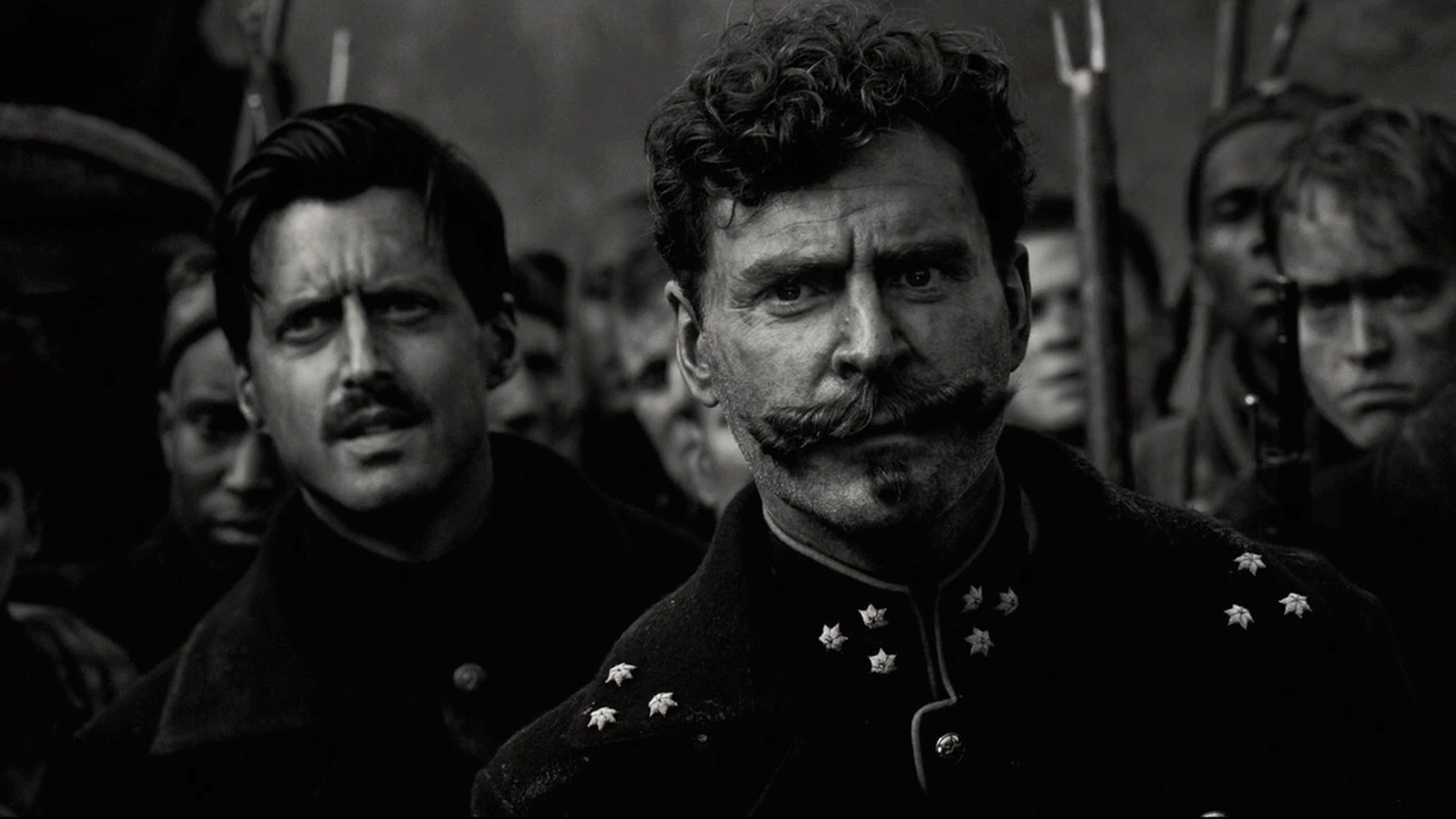
I think what Michael Green and Ken have done by creating this opening that there was captain with double mustaches who he really loved, and his love interest Catherine helped give something to Poirot. So during the course of the film when he’s talking to Jackie, he feels kindly towards her because he understands the excesses of love.
That was really an important thing for the Poirot character that he would have that humanity because one could think as soon as Jackie showed him the gun, he should have told the police and had her arrested, but he isn’t that type of man. He’s a man who actually understands the hurt nature, he witnessed the betrayal in the club, and therefore he was warm towards her until he continued to decipher all the clues.
HULLFISH: One of the things that really interests me is your relationship with Kenneth and those soft skills of making him feel comfortable, making him feel safe, and dealing with the notes you get.
NÍ DHONGHAÍLE: We both have similar sensibilities, and because he’s “Sir Kenneth Branagh” and he’s such a great Shakespearian actor and director, I think people might think that he’s at arm’s length, but he’s not. He’s very modest, very nice, and very down-to-earth.
Working with him, I think honesty is the best policy, and that’s what he asks for. Which is why I think it has given me the confidence to be collaborative with him because I know he wants the truth. If there’s something that we think we could do better, I could talk to him about it.
It has given me the confidence to be collaborative with him because I know he wants the truth.
I think as the editor, we have to learn that diplomatic skill that the director is on set, and our job day-to-day is to check if there is anything missing. Do we need any pick-ups? Could we suggest any pick-ups? Can we give them assurances if they have a pick-up list and check to see if we need them or not?
I think as editors, we are responsible to send some very good vibes back to set, and that’s what I try and do when I do those little vignette things and just to give a big, “well done, it’s looking really good” to encourage confidence.
There’s a good dialogue between us, and I think because he knows I’ll be truthful and I know he will be truthful, if I suggested something that I thought maybe we need, Ken might say, “No, I don’t think we do,” or he might think about it and say, “Okay, yeah, we will try that.”
It was a very good working relationship, and then that’s continued through the edit because it meant that we were really collaborating and we were trying to deal with this film together. When the notes did come in, Judy Hoffland, our producer who was brilliant, and Alan Bergman, Alan Horn, and Steve Asbell just came together and were working together with us.
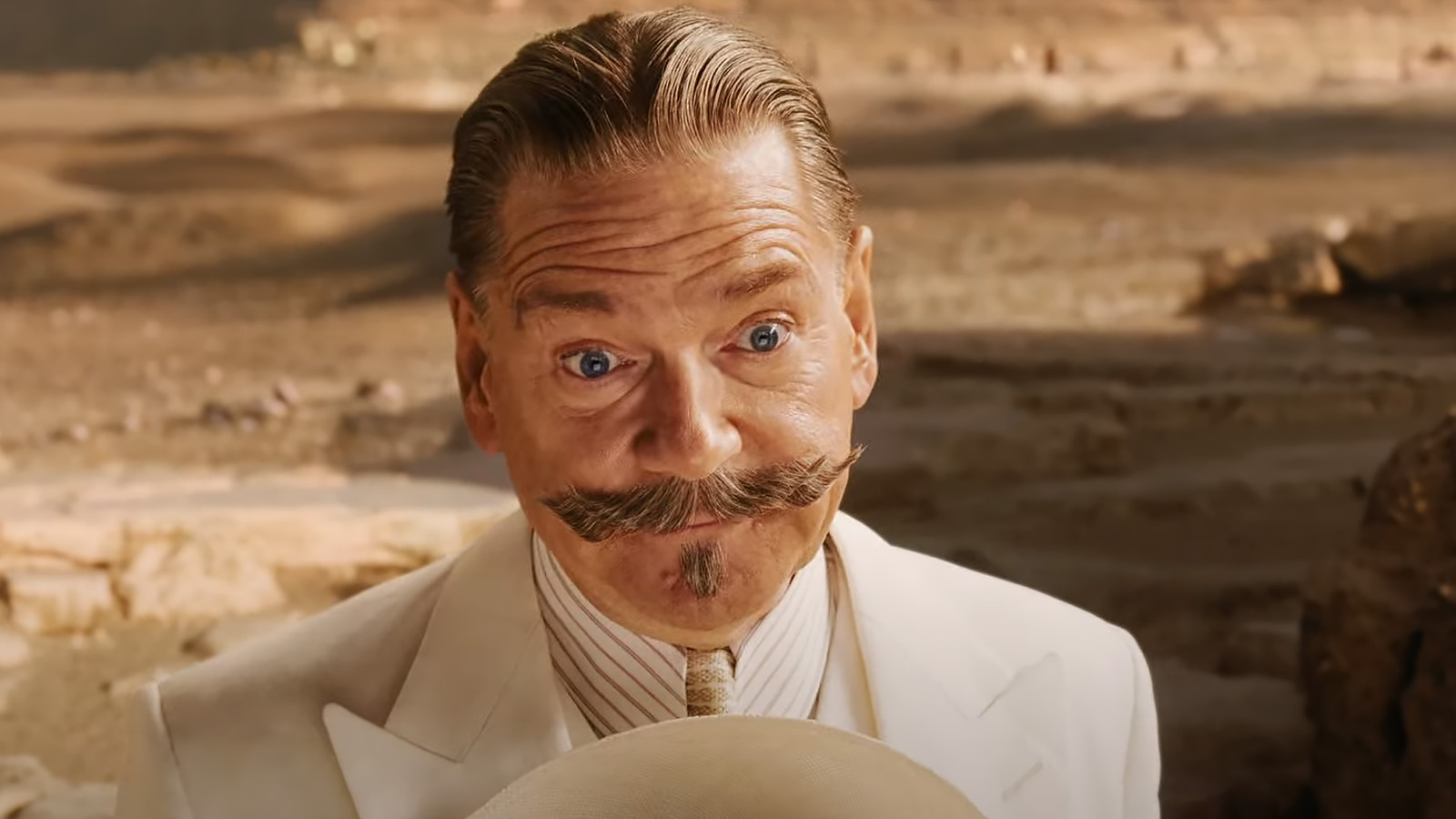
We started shooting Death on the Nile in September 2019. I came over on the Wednesday to start editing, and the first day was a camera test. However, Ken uses camera tests very judiciously, and he had shot some of the trenches, and then he phoned me that evening to ask if I could cut together a little promo before Friday. So, this is the speed of a Kenneth Branagh production.
I actually thought I was just going to set up my cutting room and have a coffee, but instead, I was cutting this promo that I had to send by Thursday to refine, get notes, and finish for Friday. I remember on day one he was asking me to cut the promo from a few bits of rushes that we had just got as a taster for the producers to put them at ease and feel that this is something great.
That is the sort of guerrilla warfare editing style which comes from independent film. I like a challenge, and I think that’s something Ken and I both share; we’re both willing to keep looking and finding that musicality, to find the best way to celebrate the story and tell it in a way that an audience can identify with.
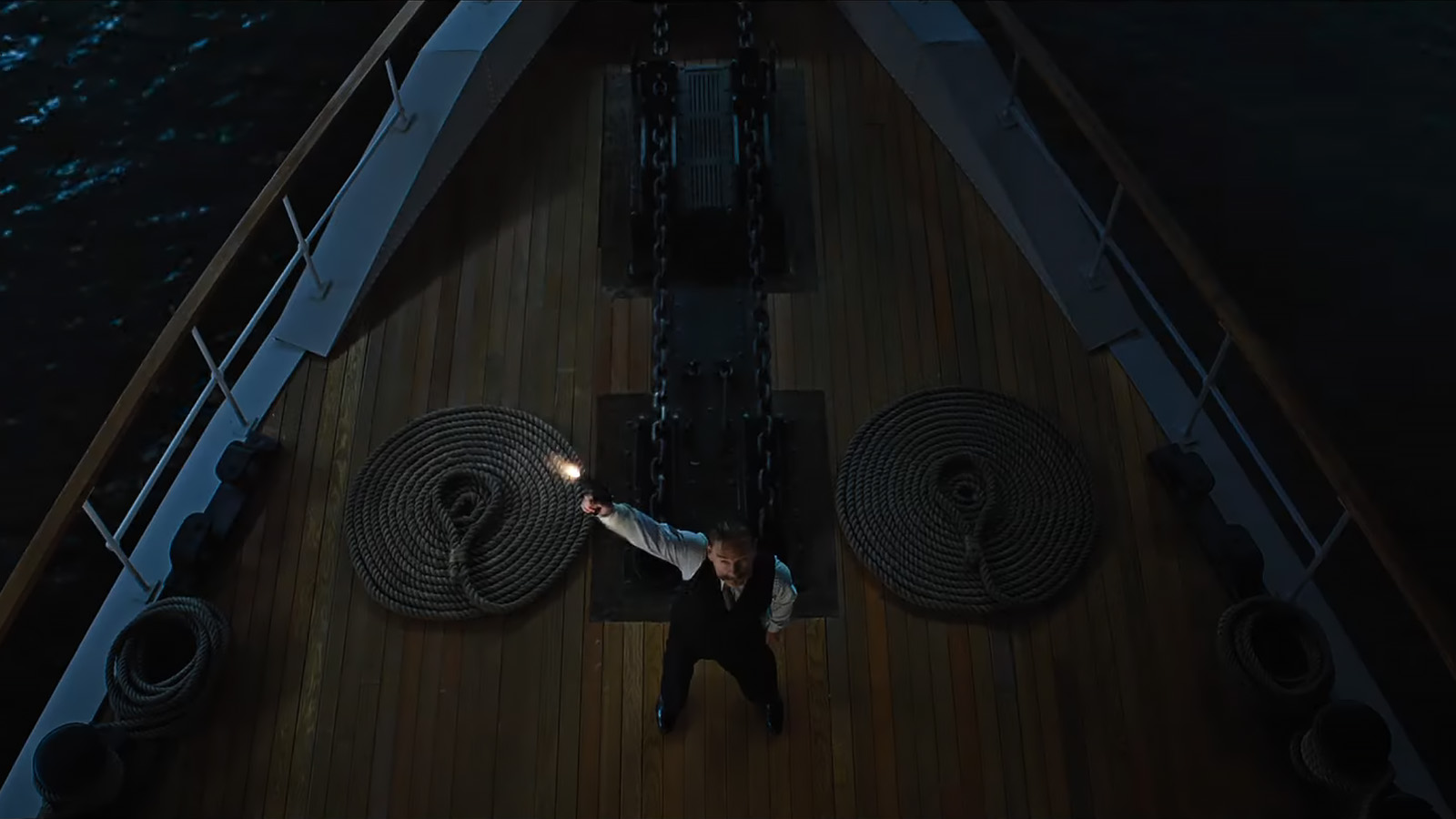
COVID struck in March, so I returned to my studio in Dublin to finish Death on the Nile remotely because the Longcross Studios closed down. The notes that we were getting from the Disney team were wonderful. We would send them the cut on the Friday, and we would have the notes on Monday.
With some productions, that’s not the case; they had a real passion to deliver this because with the knock-on effects with COVID, we had to lock in June. Fine cutting began in January, so it was quite a short edit in order for the visual effects to be complete in order to have the 17mm print on October 23rd. Amazingly we hit every single deadline, and that is a testament to Ken, the producers, and our team that we all came together to do that.
HULLFISH: We first talked when you were working on The Crown. Do you miss being in a group of editors?
NÍ DHONGHAÍLE: The friends I made on The Crown made it an extraordinary experience. It was so good. Wonderful people to work with. I miss chewing the fat with an editor, but what I really love is storytelling, and therefore to be an editor on a feature film with a beginning, middle, and end that’s not part of a series is actually really great.
To be an editor on a feature film with a beginning, middle, and end that’s not part of a series is actually really great.
Even when I did Three Girls that was three episodes and did all three so that we were always working together to find the best way to tell the story. Even the writer came into the edit room at one point, and she was wonderful because it was her first big show, and she was saying to me, “Oh, you can do that. You can move that over here.” So, it was a really good celebration of all of us coming together.
As much as I loved working with all the editors and the great friendships we have, I really love the challenge of a feature film where you are the sole editor, and you just bring your contribution with the director, and you work on it together.
HULLFISH: When you’re faced with a blank timeline and a bin full of dailies or rushes, what do you do?
NÍ DHONGHAÍLE: I was trained on 16mm and 35mm. I actually studied directing and cinematography for four years when I first left school, and then I specialized in film editing for three years at the national film and television school in England. All my training comes from that film mind, the appreciation for cinematography or directing.
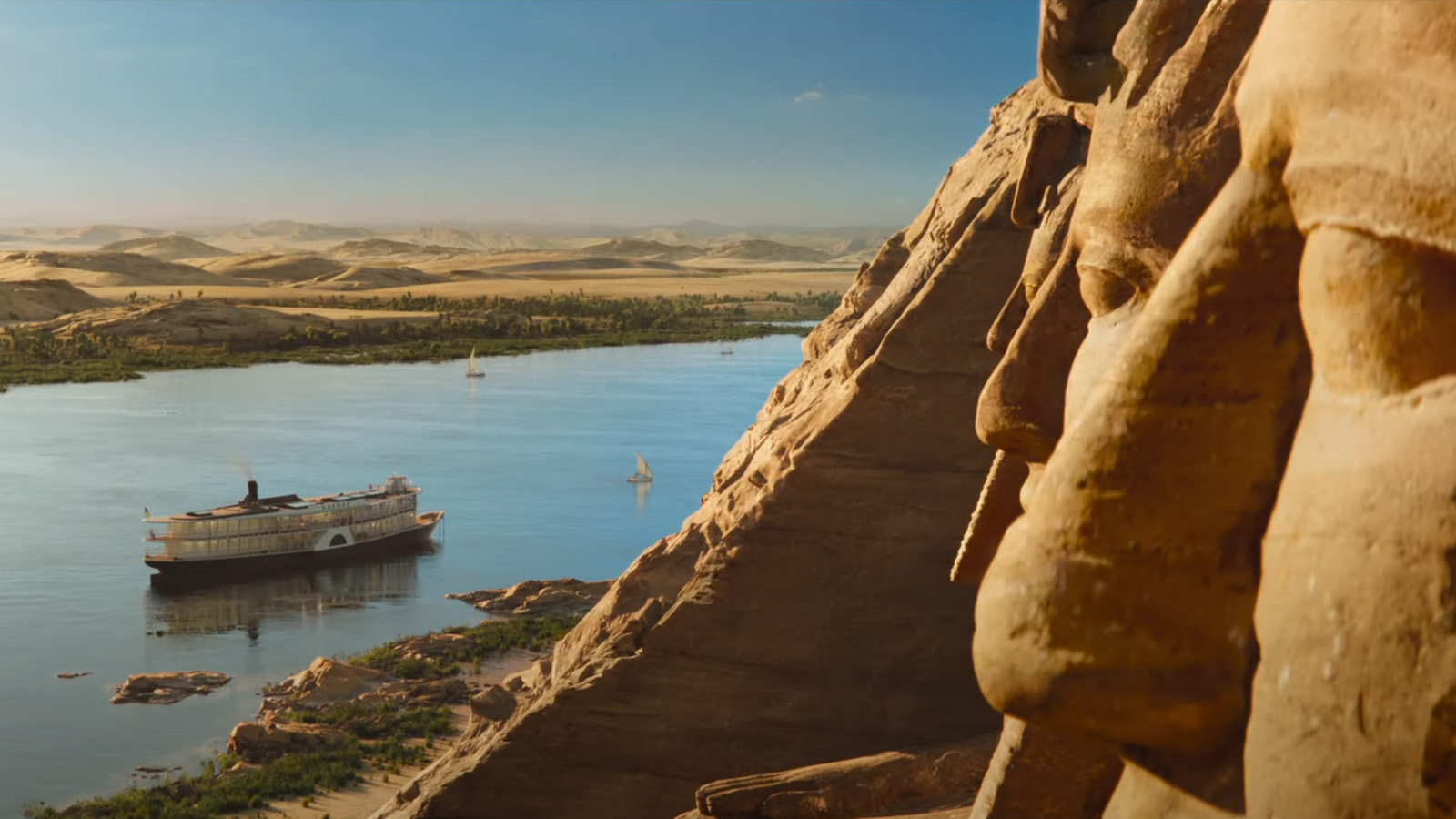
The first thing I do is I watch the rushes, and it depends on films that might have huge amounts of cameras. As I said earlier, then I might be a bit more judicious with cameras three and four, but I watch everything. I begin to select the things that feel real and feel authentic.
HULLFISH: When you say you watch everything, are you clicking on a single take and putting it in the source monitor and watching that?
NÍ DHONGHAÍLE: I have a visual memory, so when I do it like that, I can see my bin; as long as the assistant editor doesn’t tidy up my bins, I’m fine. So, for example, I will put in take one, and I watch it, and I take a little smidge onto my timeline. So by the end of that scene, having watched everything, I’ll have a timeline of my favorite moments of that setup.
What I’m really doing is harvesting the best footage that I could find. Even if it is before action or after a cut, or it’s a still in a moment that I can use as a listening shot that might give subtext to a dialogue scene, I can just put that on my timeline. If I think that shot feels good or truthful, then I don’t cut it, I leave it, and I go to the next scene, and I do that all the way through until I’ve done all the scenes that have been shot.
HULLFISH: So each setup has its own sequence?
NÍ DHONGHAÍLE: Not necessarily. Say there’s a setup that I think, “Okay, that’s magic. I can begin with that.” Or “That’s in the middle; I might put that off on one side because my selections might be 12 minutes long or something that could even be longer.” If there’s something really important, I might make that its own little “Remember me” segment.
It’s by osmosis, I’ve allowed the footage and the storytelling to wash over me, and then I’ll go back, and I’ll start cutting, but then I’ll cut with determination.
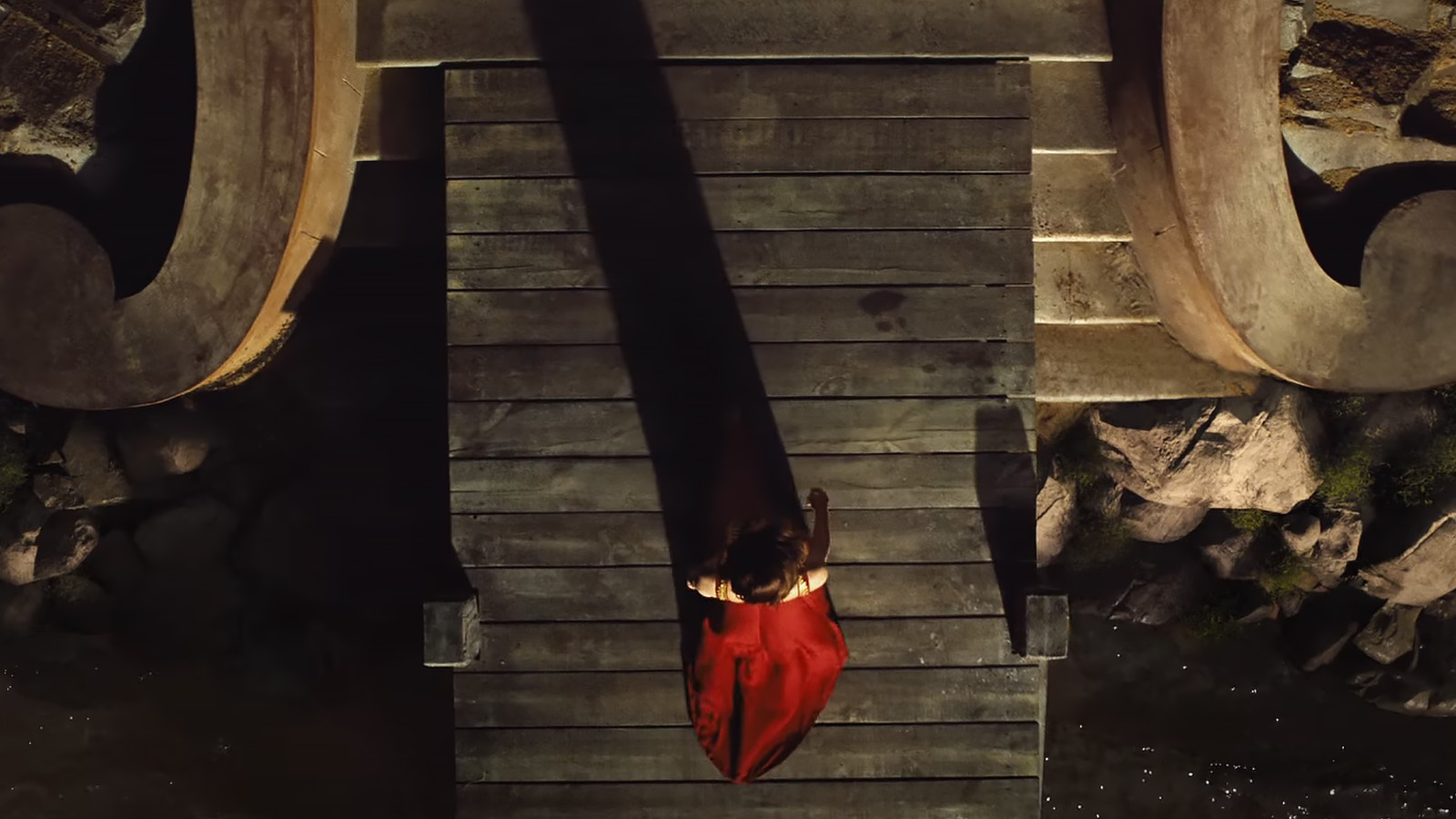
I’ll cut as if it is on film, because on film you don’t want to be making multiple choices; you just want to go for it. So, then I’ll start cutting, and then I might watch it back, and then I’ll move on. I could hand it over to my assistant to build up more sound, and I keep moving in that manner and then whenever I’m coming near the end of the film, and we’re refining the film before I lock, I will watch my first assembly, or I might even watch it while I’m cutting.
We might have to reinvent a scene, or we have to lose dialogue, and we are trying to find creative solutions. I’ll watch my selections for that scene, and I’ll find some beautiful images that haven’t been used yet. I can pinch them and put them back, so those little things, those selects of all the different scenes, they’re very important for my process.
Only once in my life by accident, I had cut a scene, and it was for a TV show called The Missing, and it was a scene where someone is coming to the prison to meet someone else, and they shot it every which way, but when I was going through the rushes, I was thinking, “I won’t show who the person is.”
So everything I selected was not revealing that person until later. I cut it, and it looked really good, but by accident I sent the wrong one to my assistant and my poor assistant didn’t ask me and they exported my selects of that scene to the director.
When I realized what had happened, it was the next day and the director sent me the funniest email. He said, “I don’t think this is your cut, but I want to say I’m really excited by the fact that you’re not revealing his face. I just went right back to him and said, “You’re the only director who would be able to understand what I was trying to do here.”
The worst thing I think is if they’re just basically cutting between who’s talking and they haven’t really watched it to see if the gaps between that are more interesting.
That helps me because I can actually begin to find the best performances or the best architecture of shots, the best wide shot for that moment of the performance, and it frees up the conversation in my own head of where to start. The worst thing I think is if they’re just basically cutting between who’s talking and they haven’t really watched it to see if the gaps between that are more interesting. Maybe being on the person who’s not talking it’s more interesting.
So it was about finding those beautiful shots, even if they are at the edge of the frame like the two kids under the table. There was other footage where they were more centered, they were more visible, but actually having their faces slightly cut off was more interesting.
You asked me about influences; there is someone who I would say is one. Because I went through the British film school system, as well as the Irish school system for filmmaking and I’m the only person in my family who’s in filmmaking when I saw the film of Denis Mitchell, who’s a 1958 documentary director, and he started in radio, he was one of the first people to put the spoken word which was not received pronunciation onto film.
He went to North England, and he recorded all these people, then he went out with a Bolex and they shot all this beautiful black and white footage, which was non-sync, and he wedded it to his radio play, which was an hour-long. It’s called Morning in the Streets.
When I read the script for Belfast, I sent it to Ken because what Ken had done with Belfast was that he had captured the vernacular of the people and that ability to just tell a story or recite a poem to emphasize a point. For me as a filmmaker, I think that sort of poetic realism is something that I really love, and I love when I see films that have actually found a way to express something in an unexpected way.
When I’m making my selections, and I’m trying to watch the material, I’m always trying to see if there is a more interesting way to let the audience be privy to the private self and public self and how you can keep that balance alive.
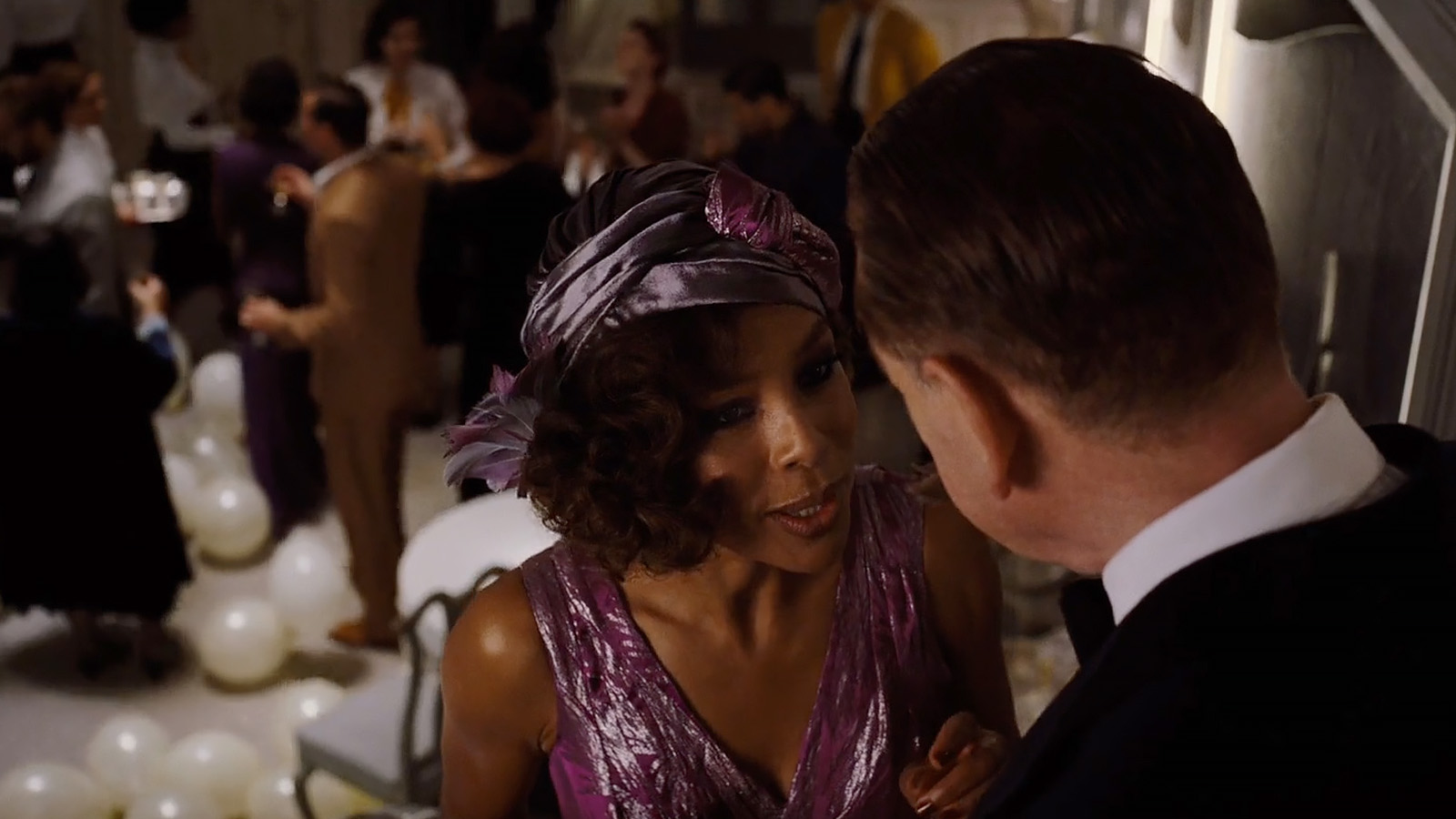
HULLFISH: You mentioned how once you’ve almost locked, you go back to an earlier version, and I’ve heard people talk about looking at their selects again because when you make those selects, you haven’t cut the scene yet, and you haven’t cut the movie yet. Then, when the movie is done, you may have totally different ideas of what those selects could reveal to you than you did a year ago or six months ago.
NÍ DHONGHAÍLE: Yeah, that is exciting. As an editor that’s actually when we come into our own. When you have everything done and you’ve found the shape with the director and with the producers and you’ve answered the notes, and since the film is a collaborative medium, we’re all working together. When you watch that early impression you had, there is a freshness that I think reminds you of what you found truthful.
It is about that authenticity as an editor when you see something and think, “I like that,” and then you find a way to squirrel that into your cut before you finish. That’s what I try and do; I think it adds an extra layer of magic because it’s something that even the director might be delighted by. It’s unexpected, but they shot it, and the actor has performed it, and I’ve just spotted it and realized that it’s gold and we need it.
HULLFISH: Do you think finding those elements is because you’re empathetic? Do you feel like empathy is a key trait of an editor?
NÍ DHONGHAÍLE: I do think so. I think that’s why, as editors, we can have brilliant male editors who can do emotional drama, and we can have brilliant female editors who can do action. I think we can do anything as long as we’re telling the story and we’re using the footage. I think it’s non-gender specific. It’s more about empathy.
HULLFISH: Yeah, I agree. I could talk to you all day long. Thank you so much for your time.
NÍ DHONGHAÍLE: Thank you, Steve.

